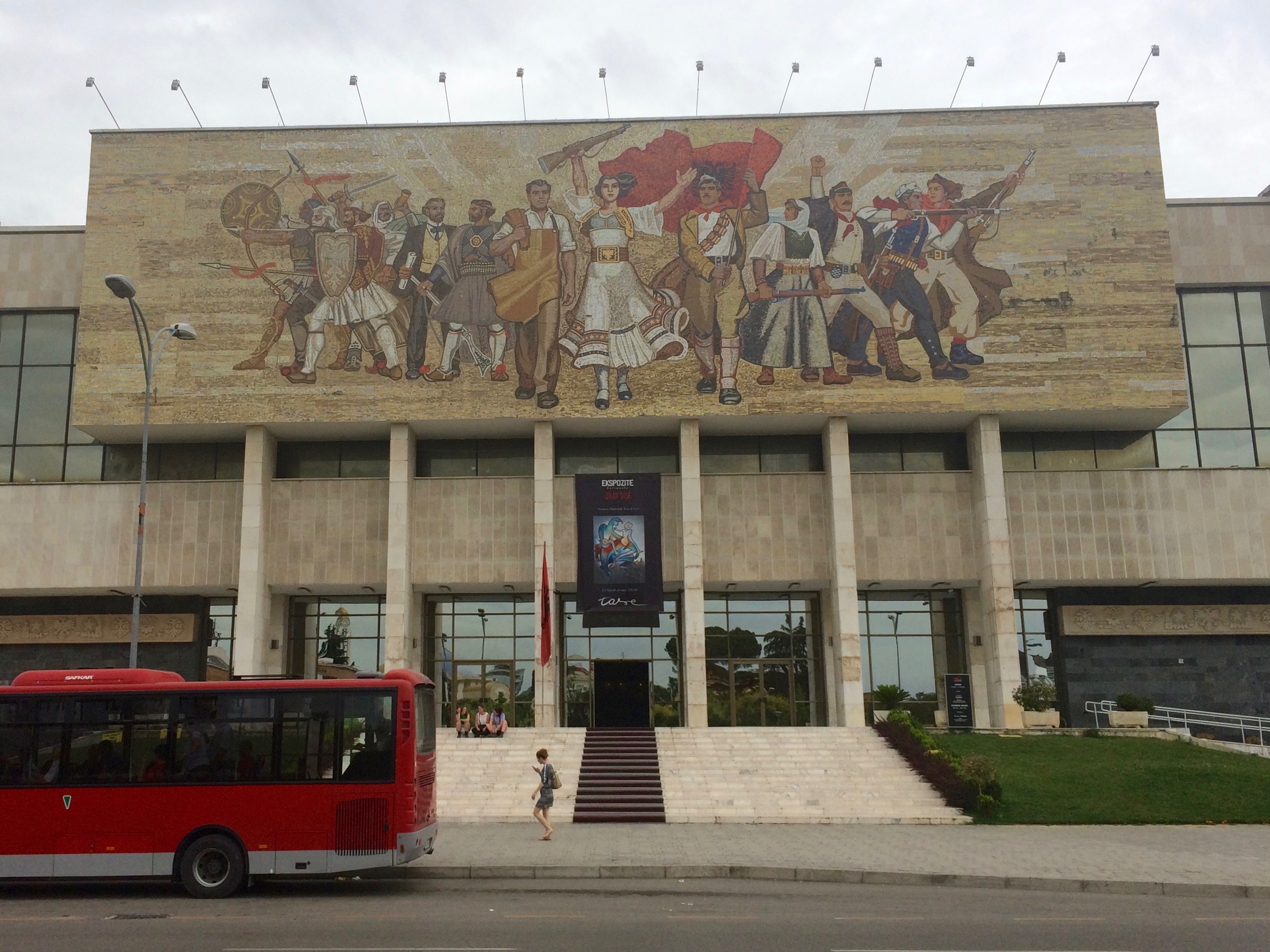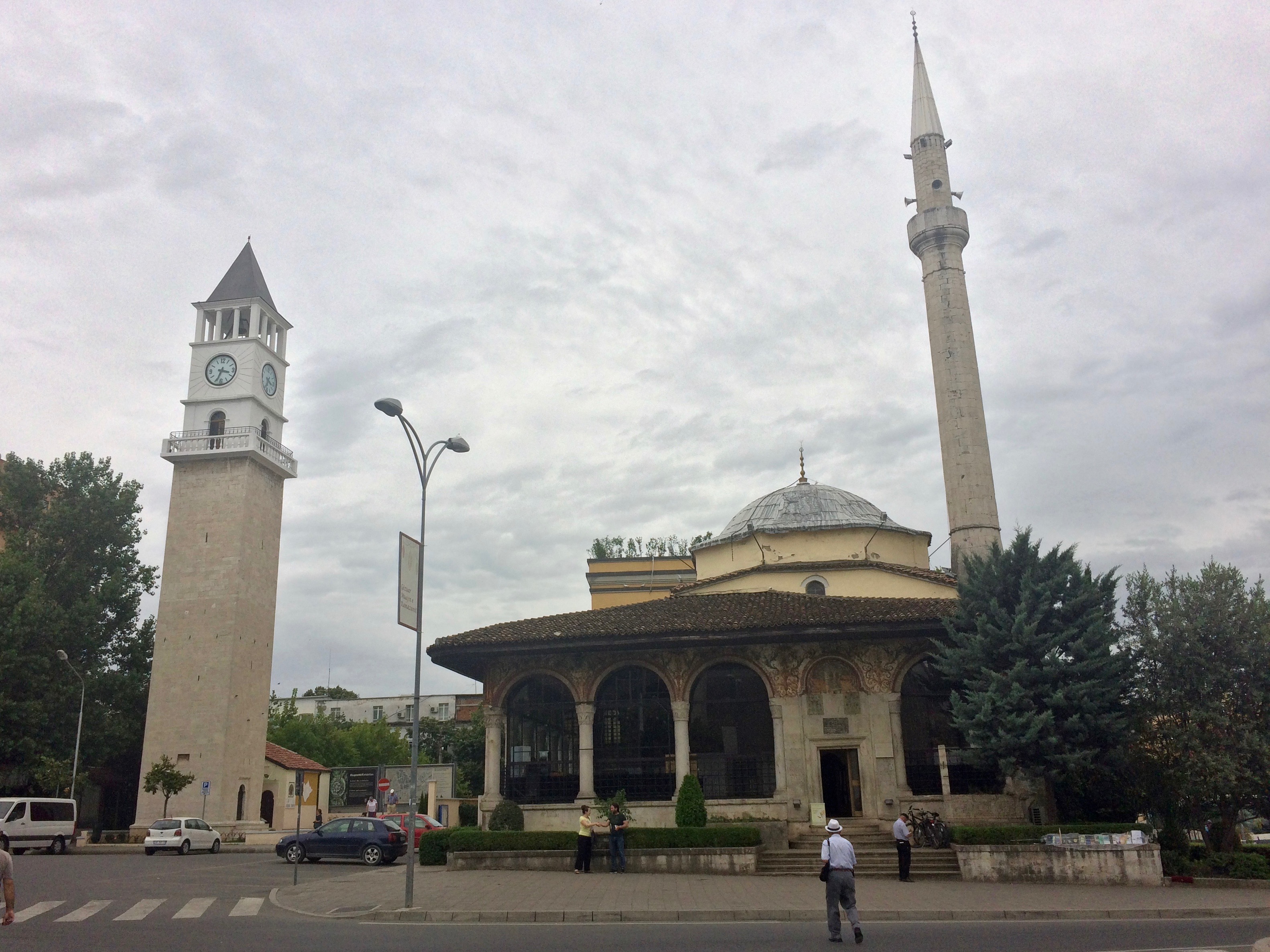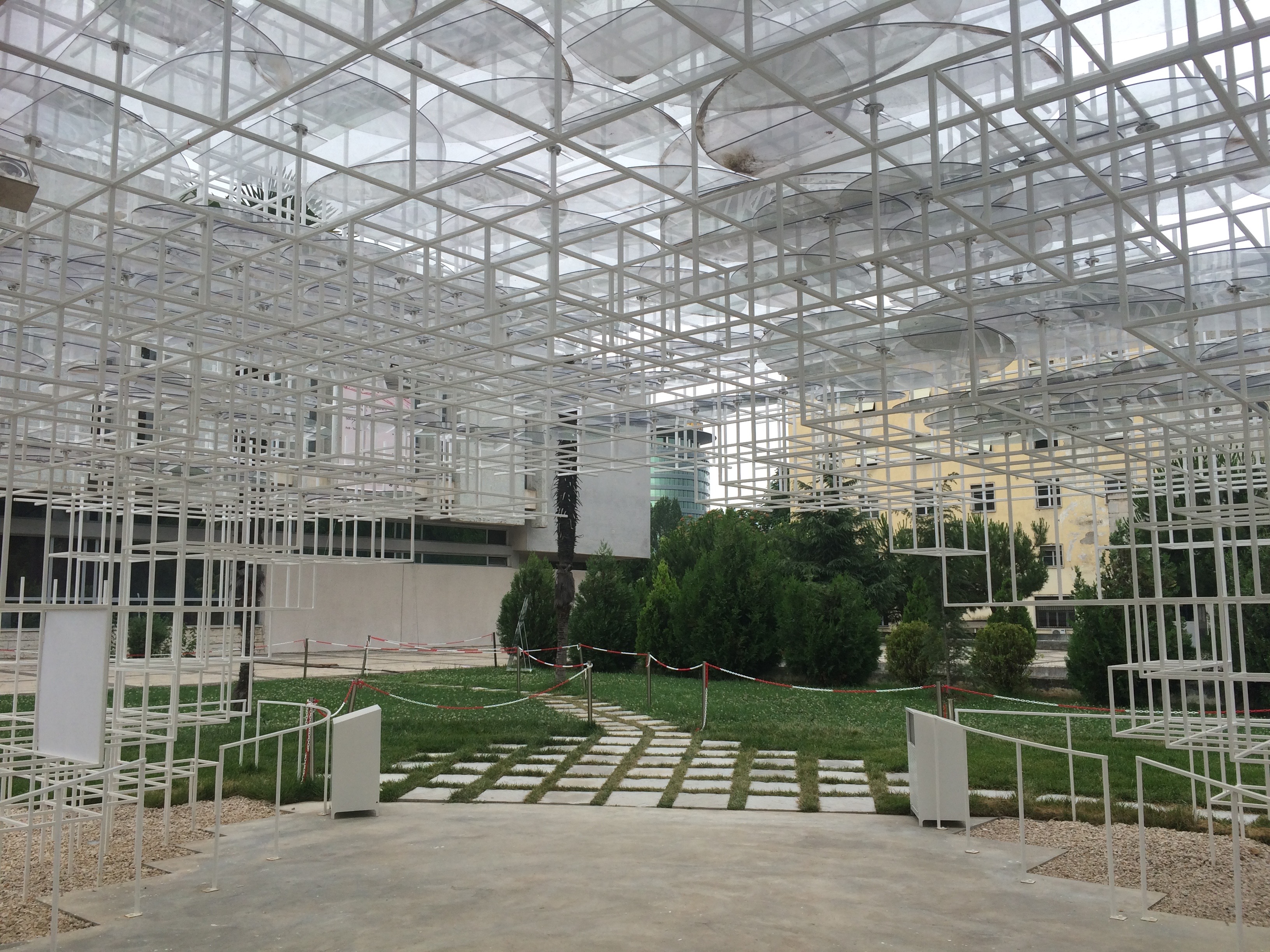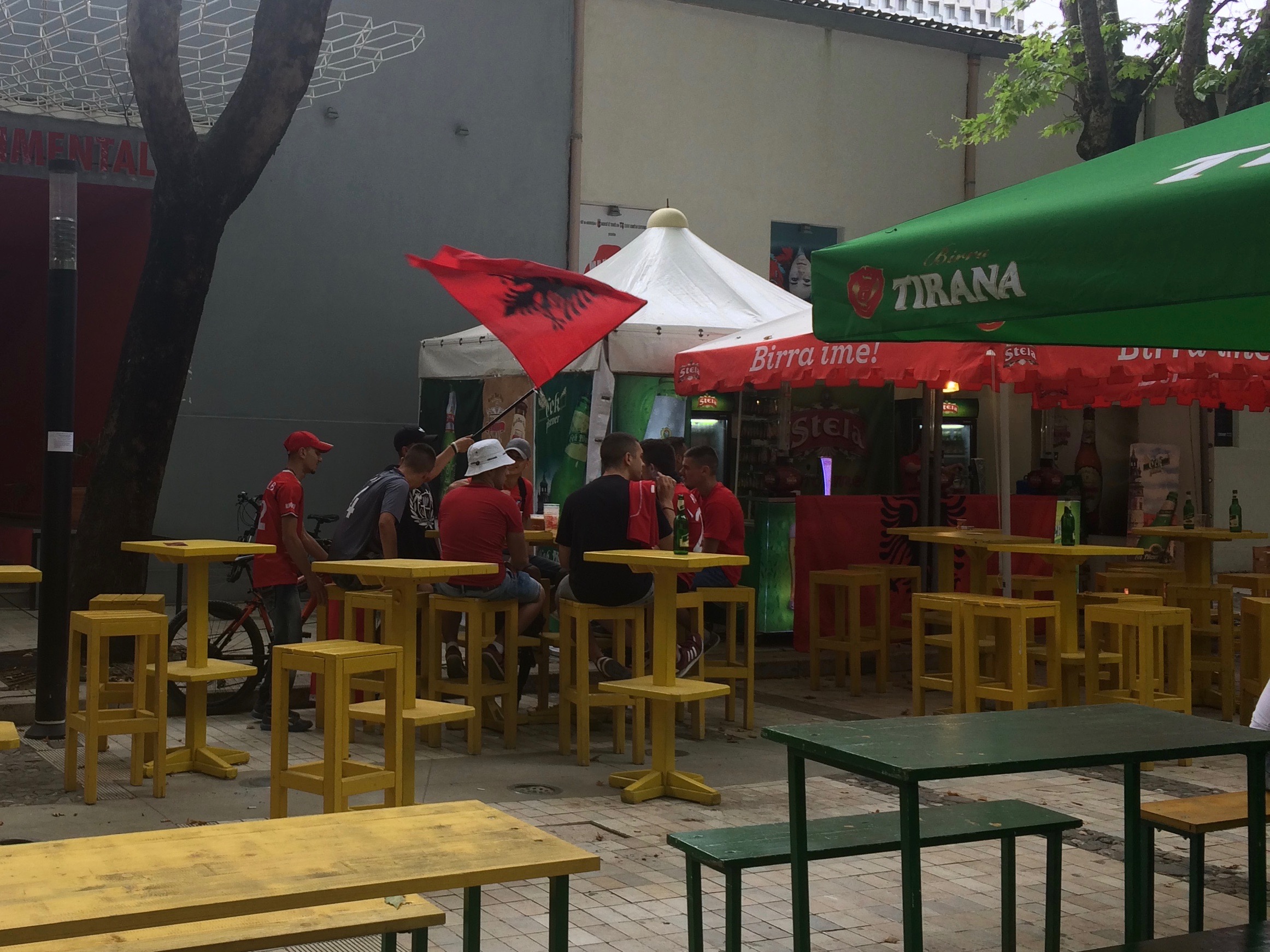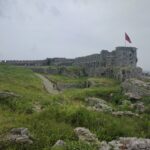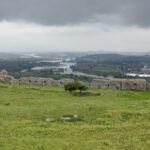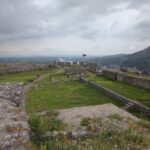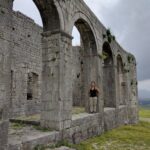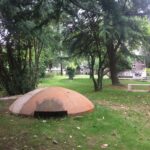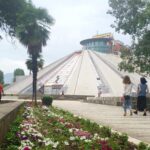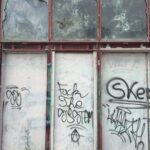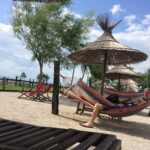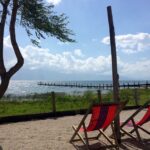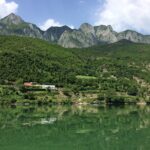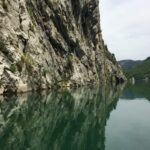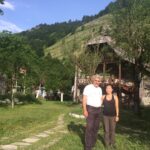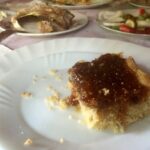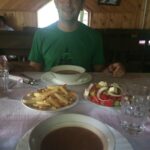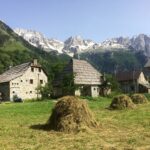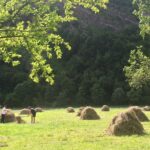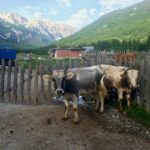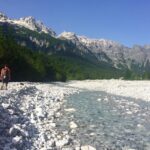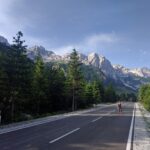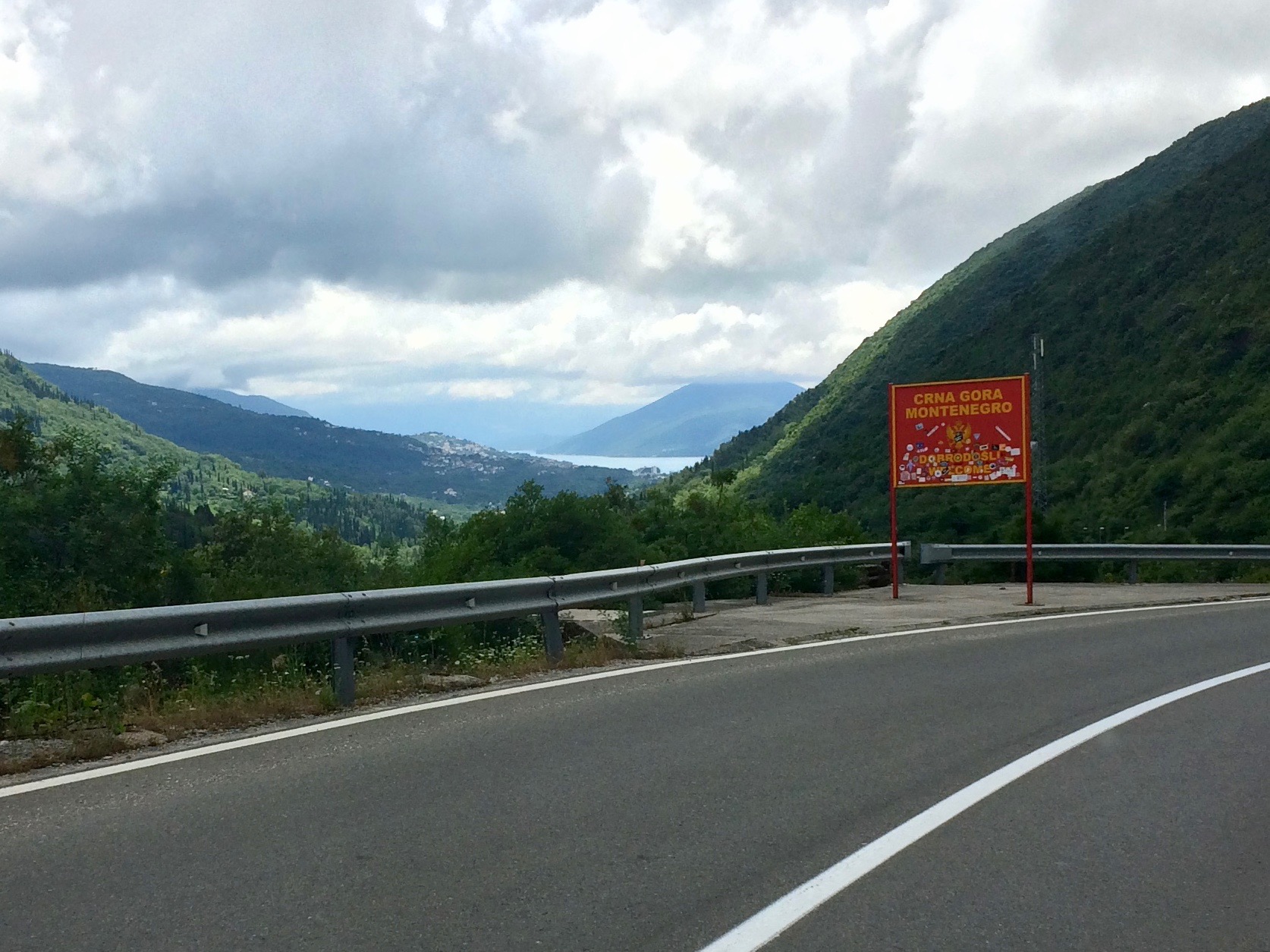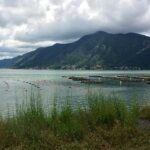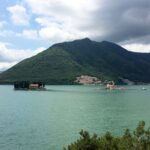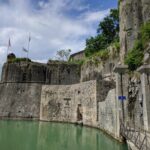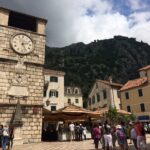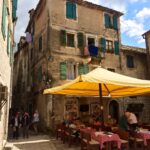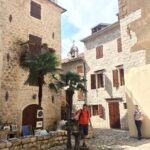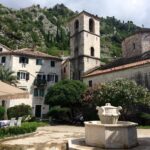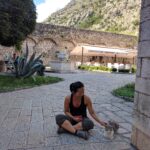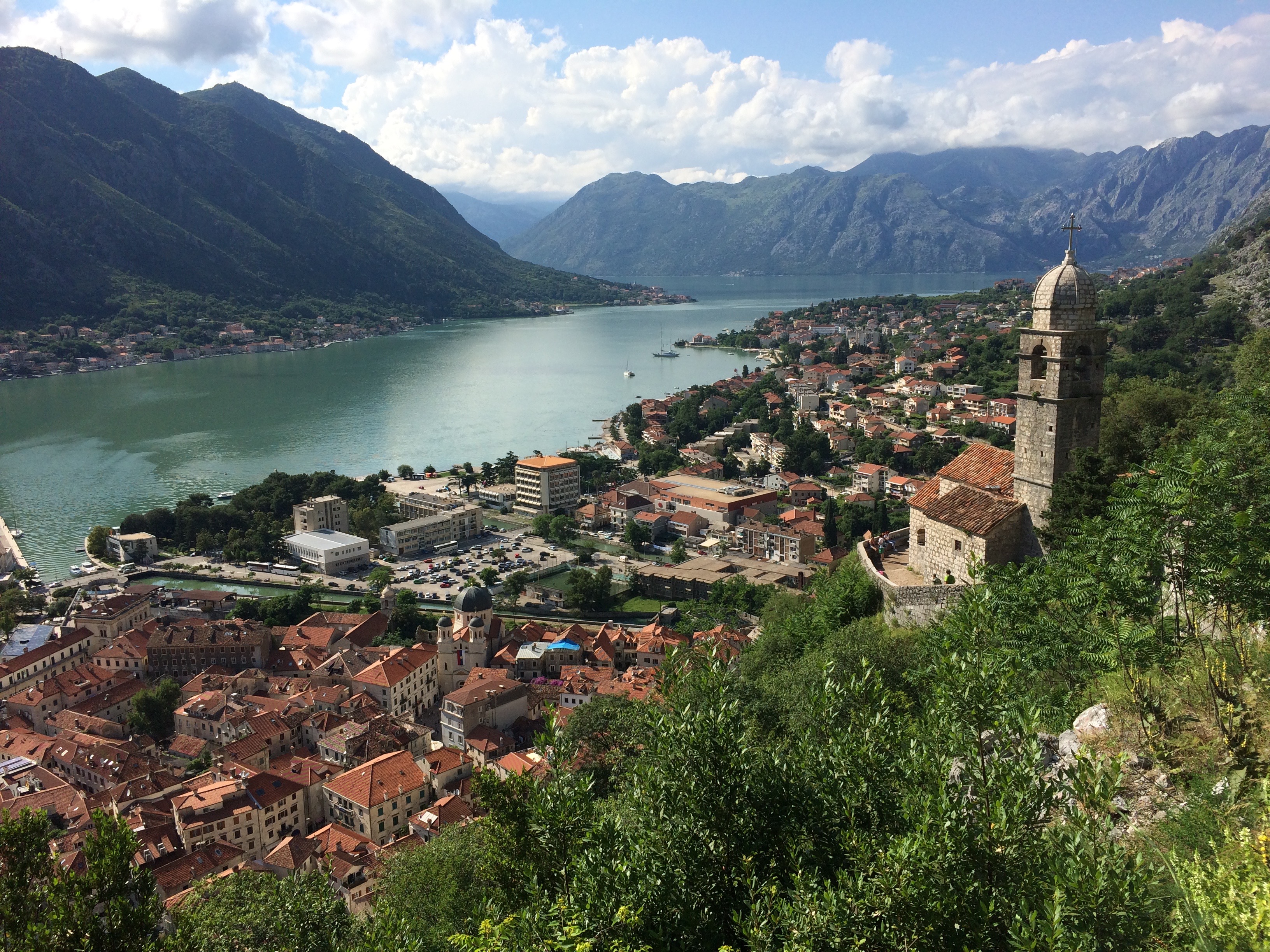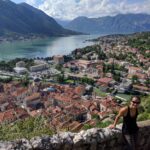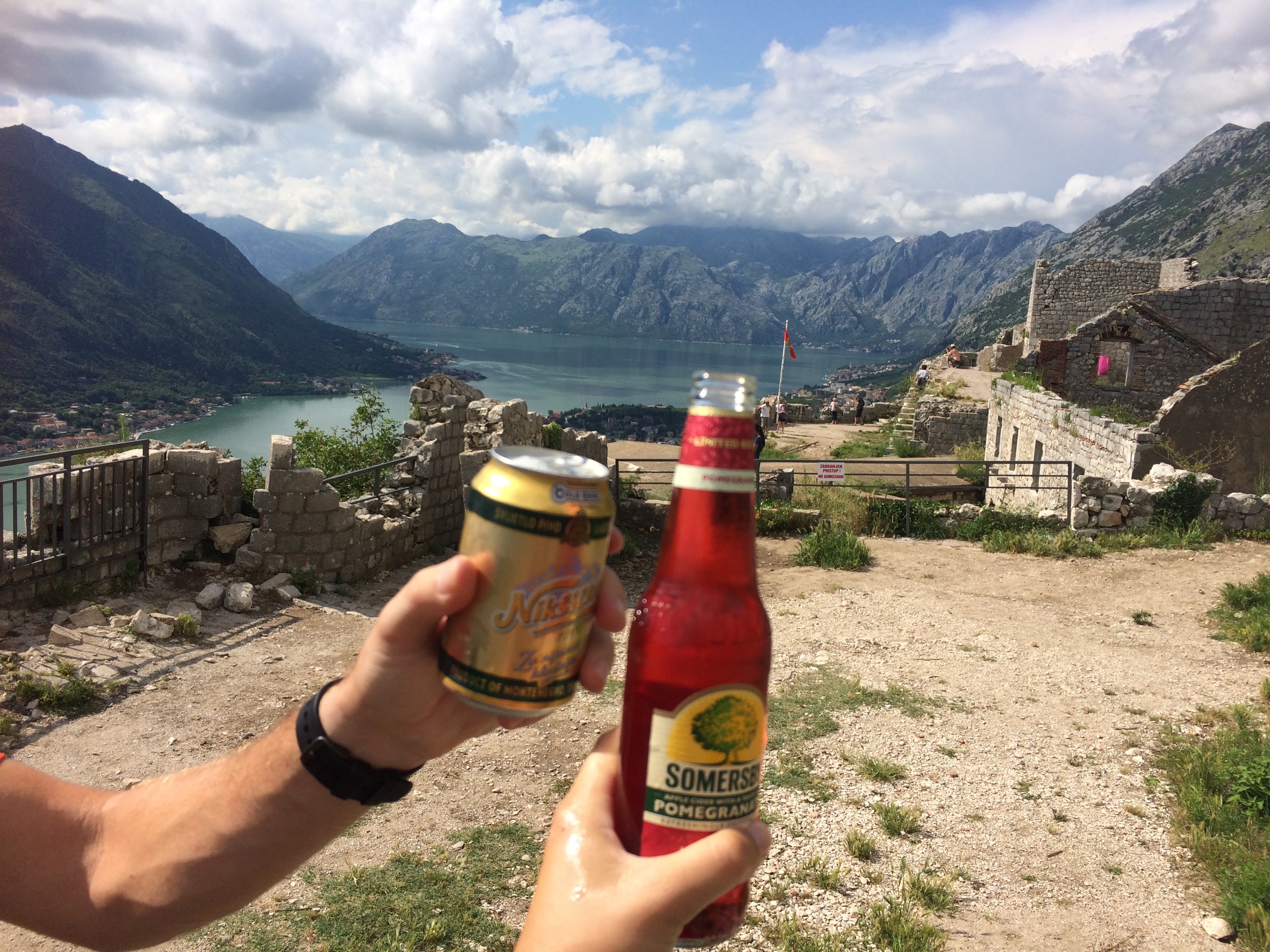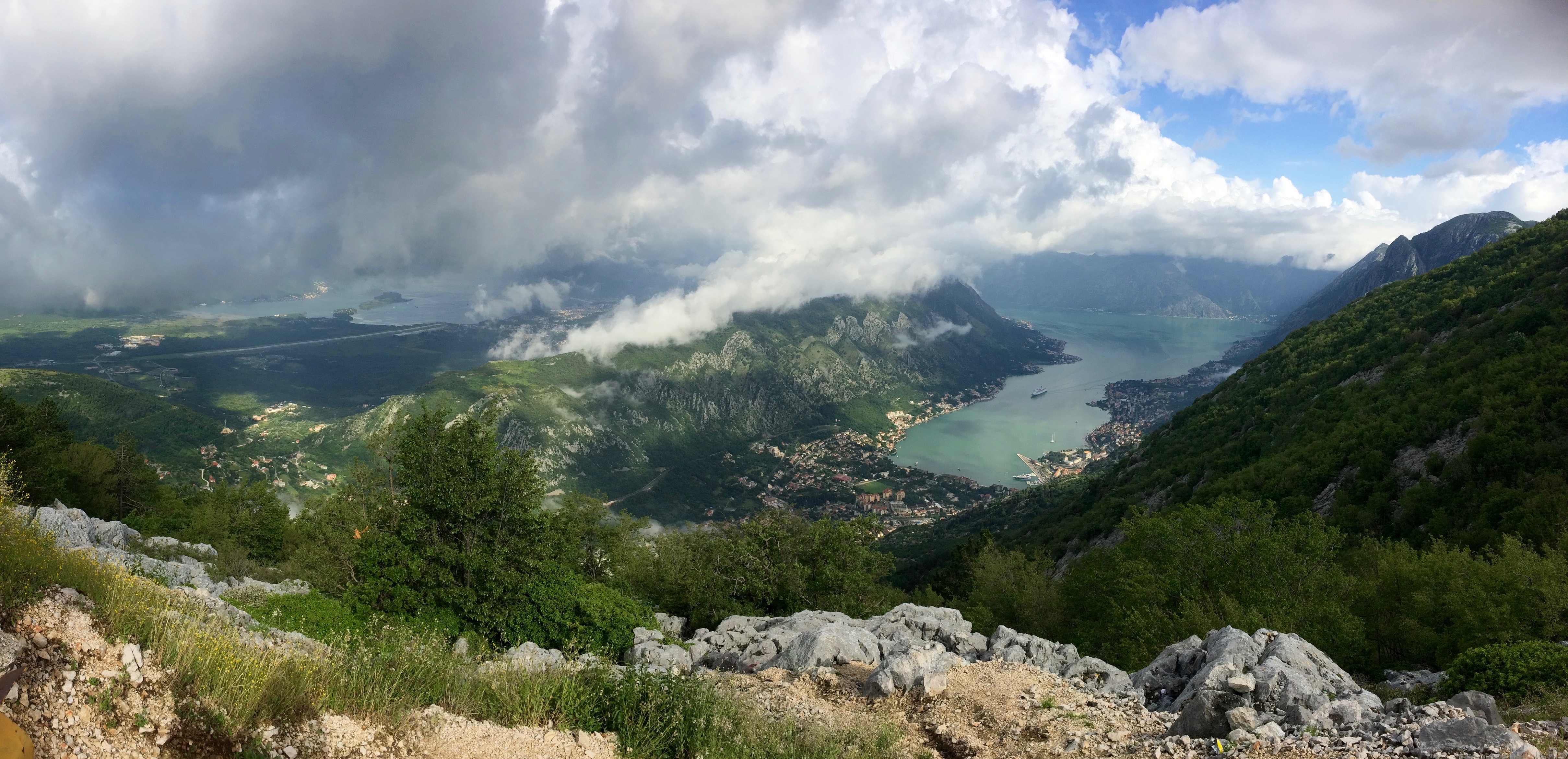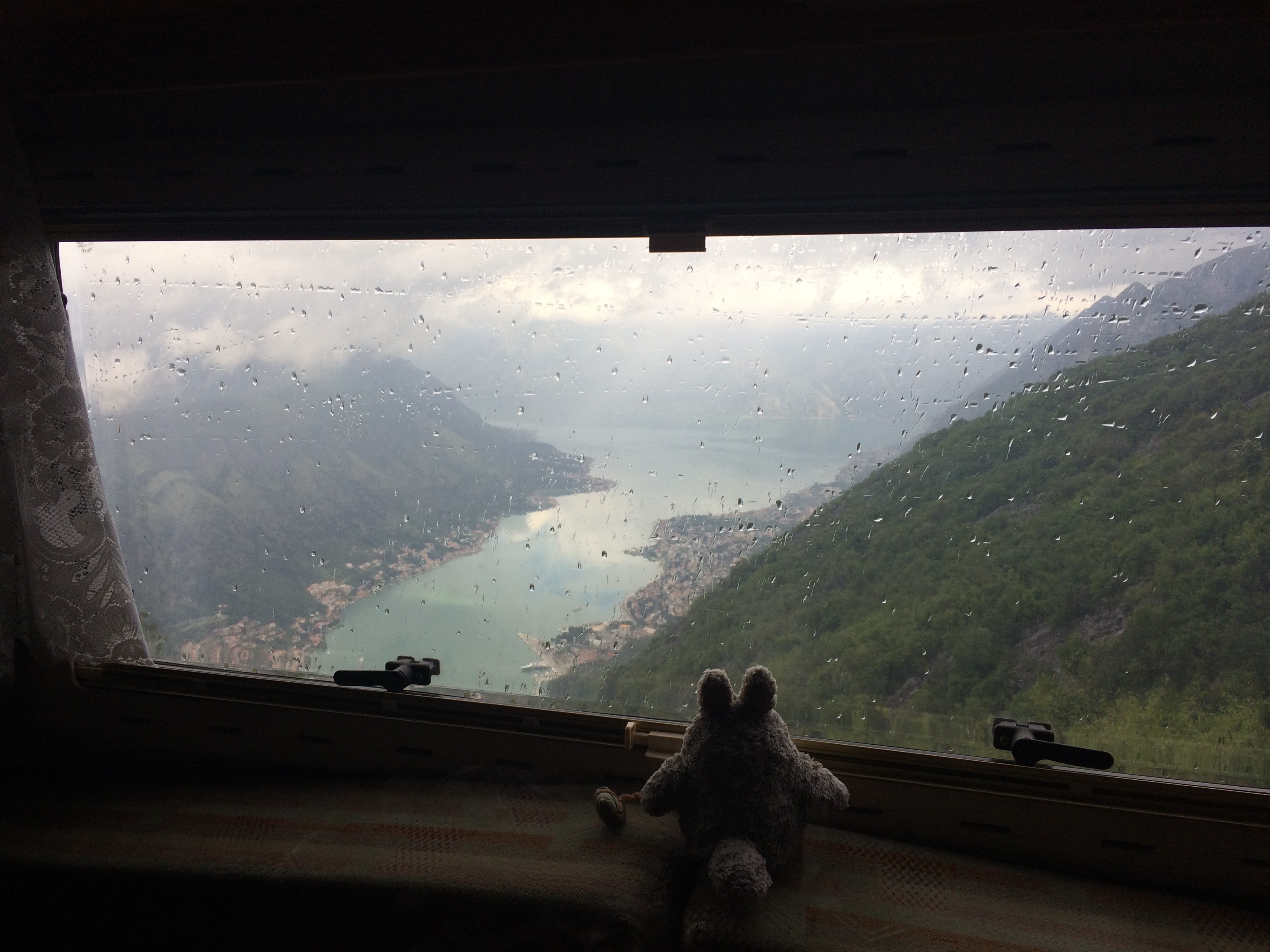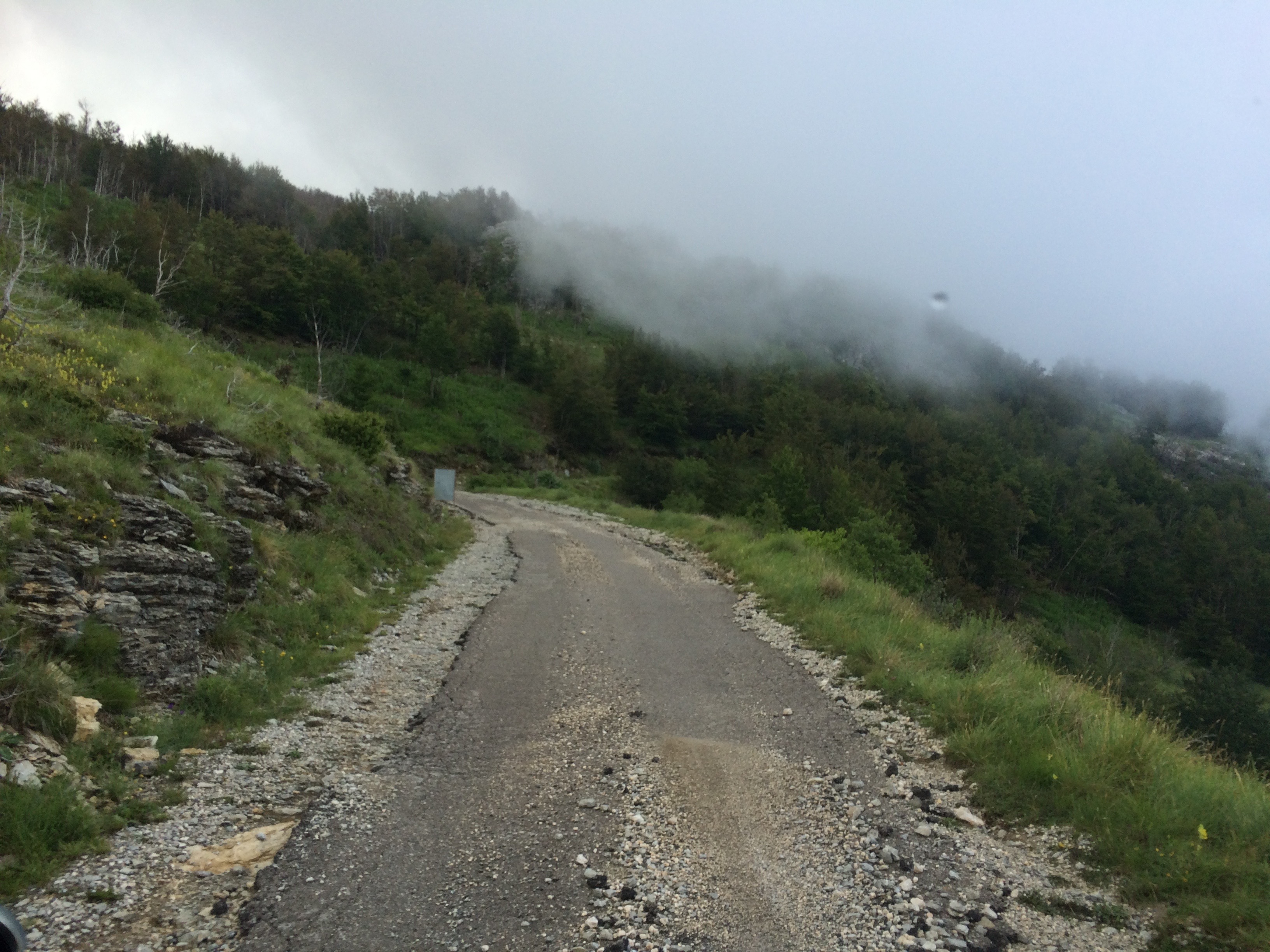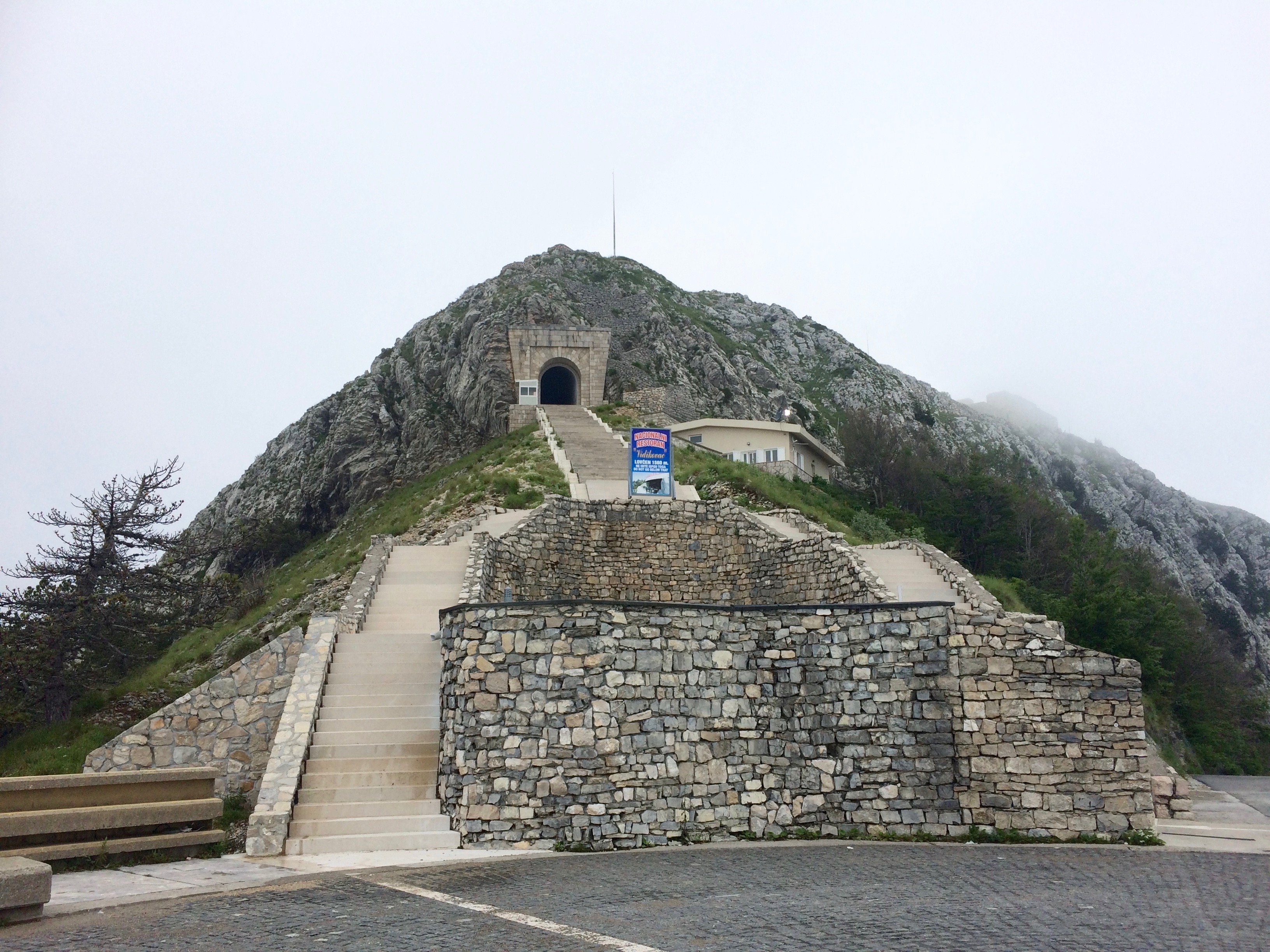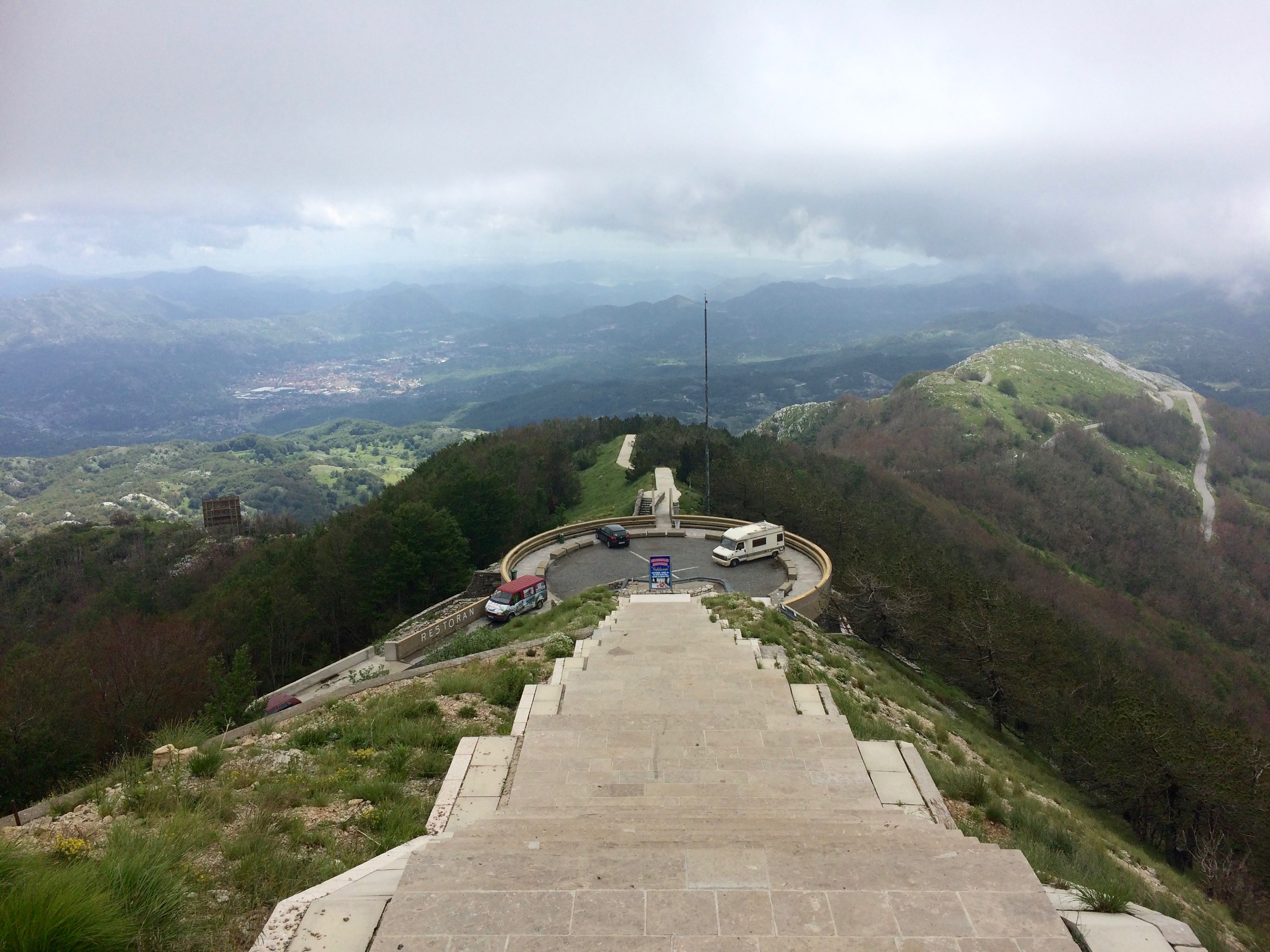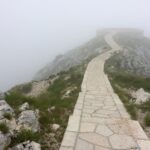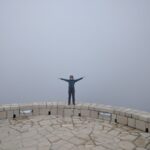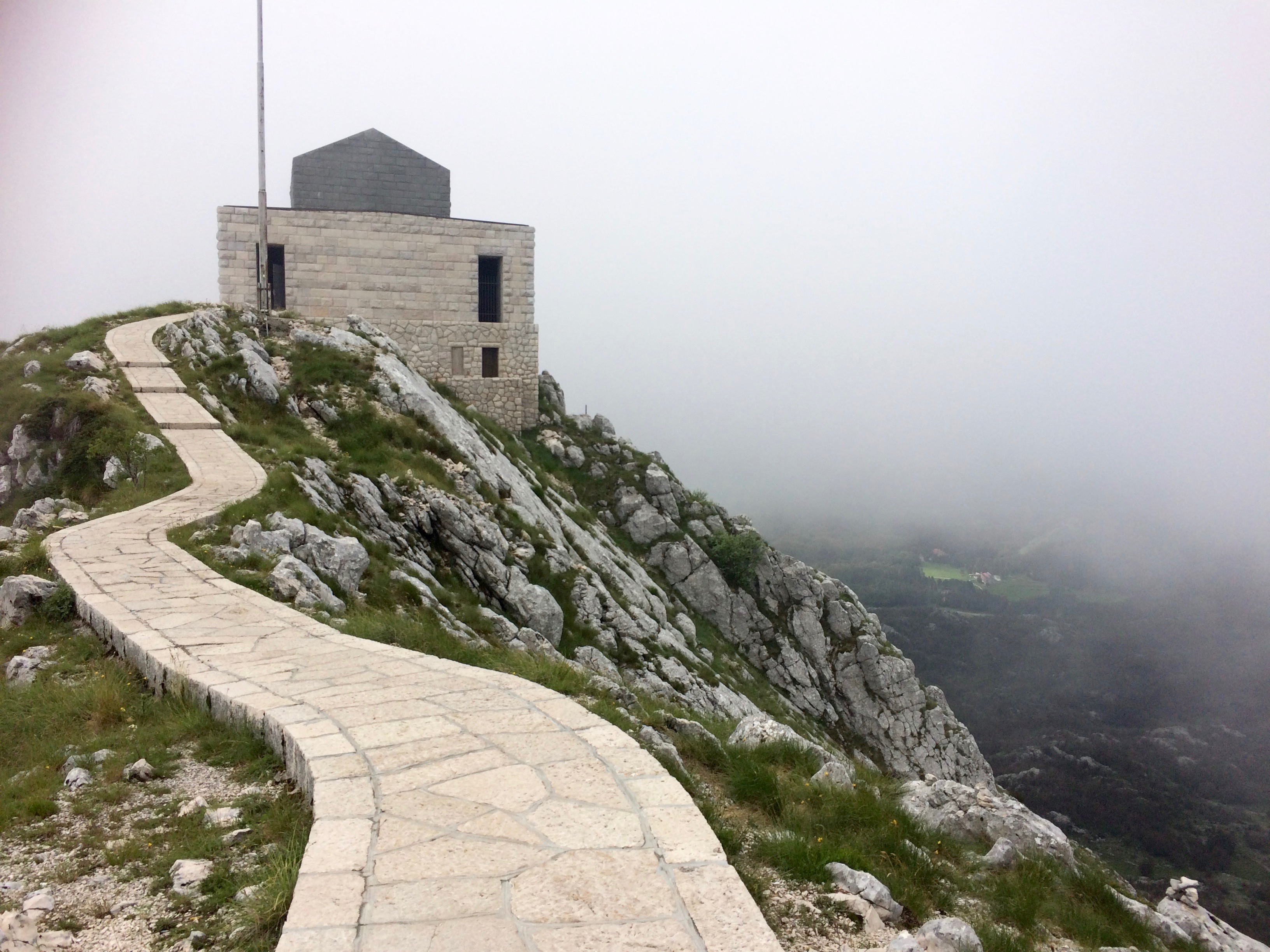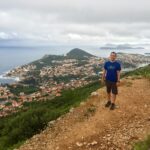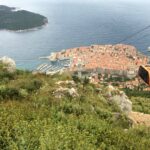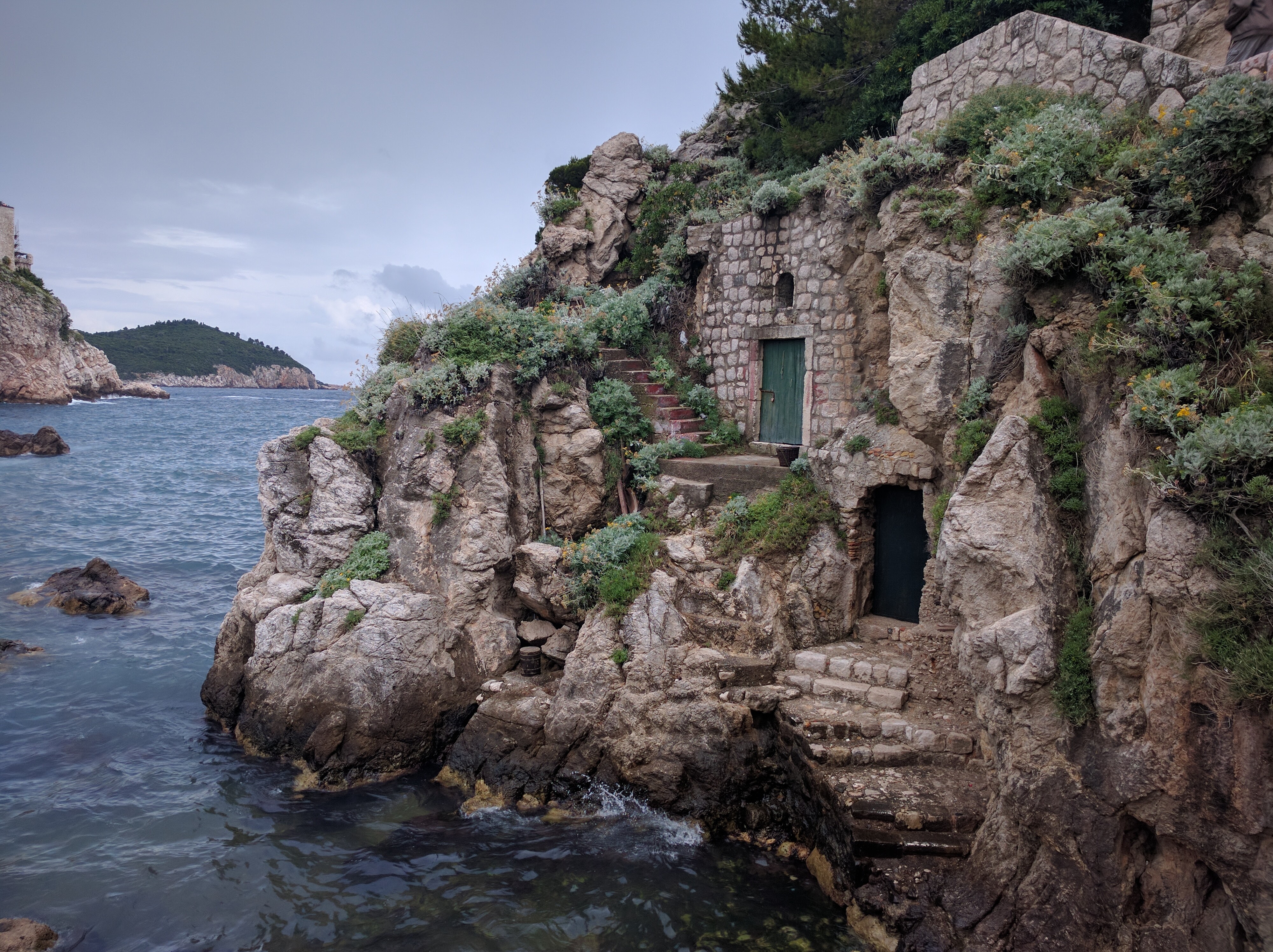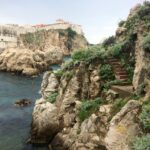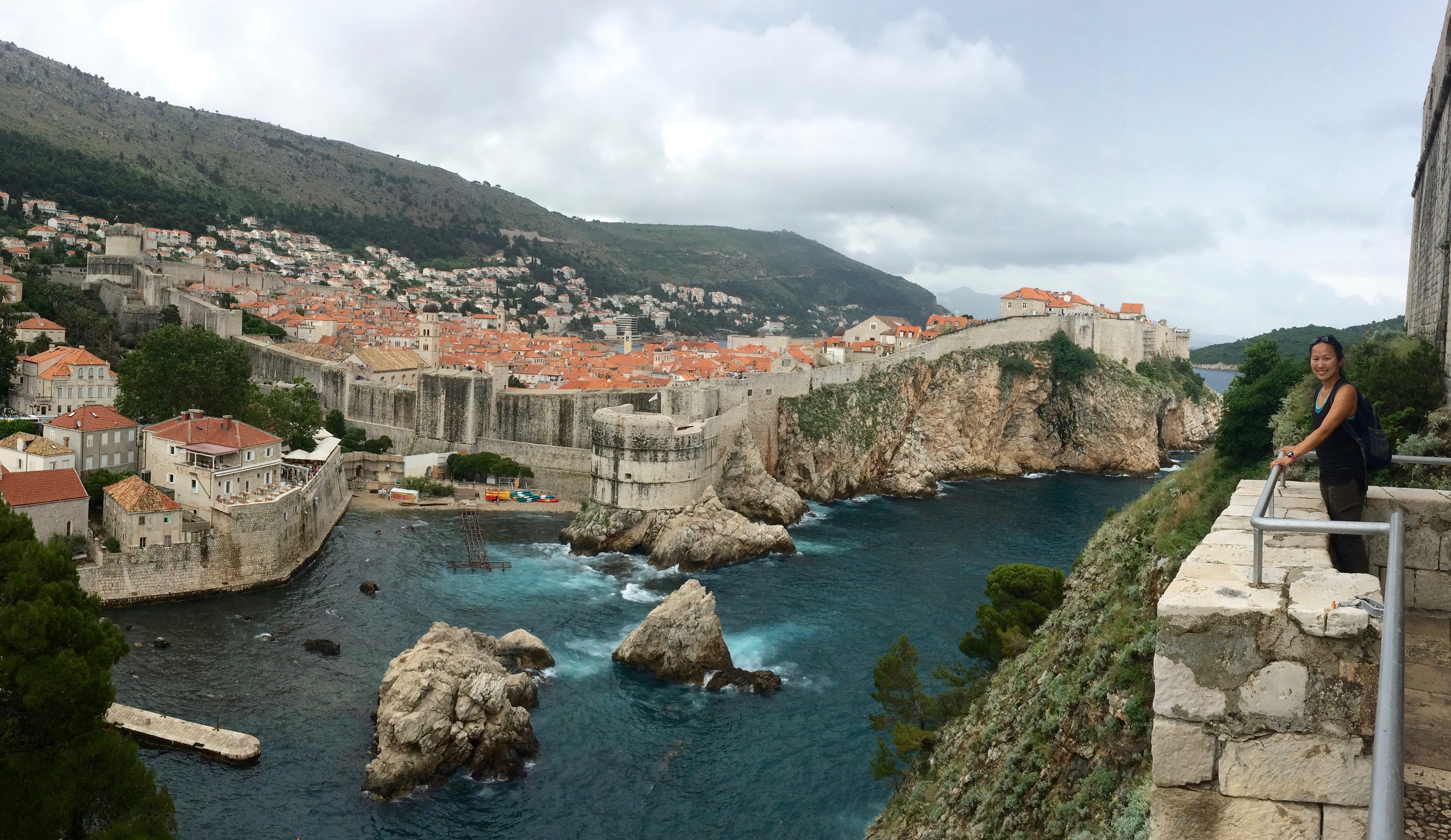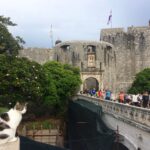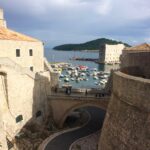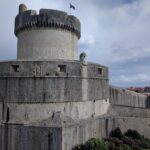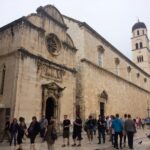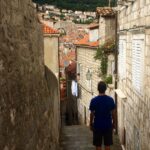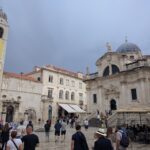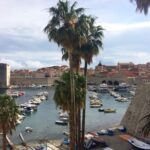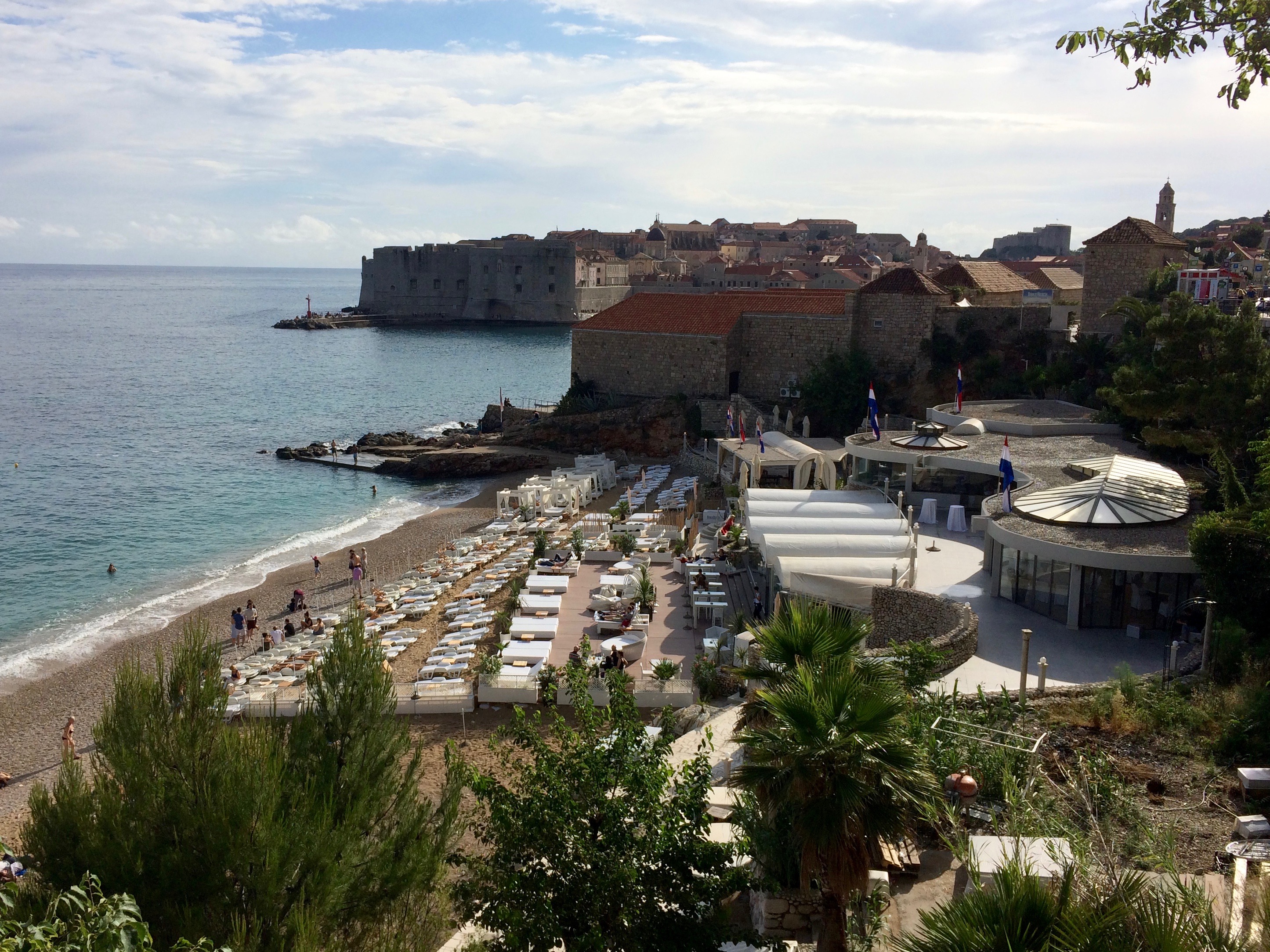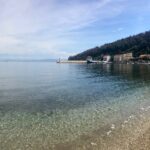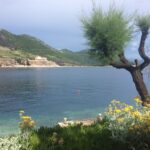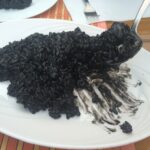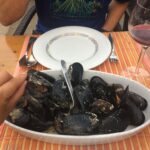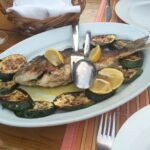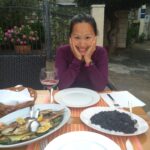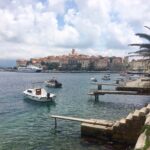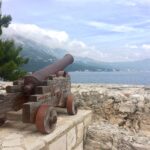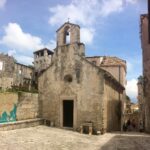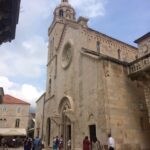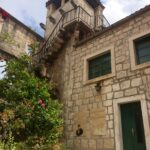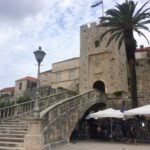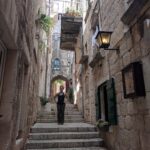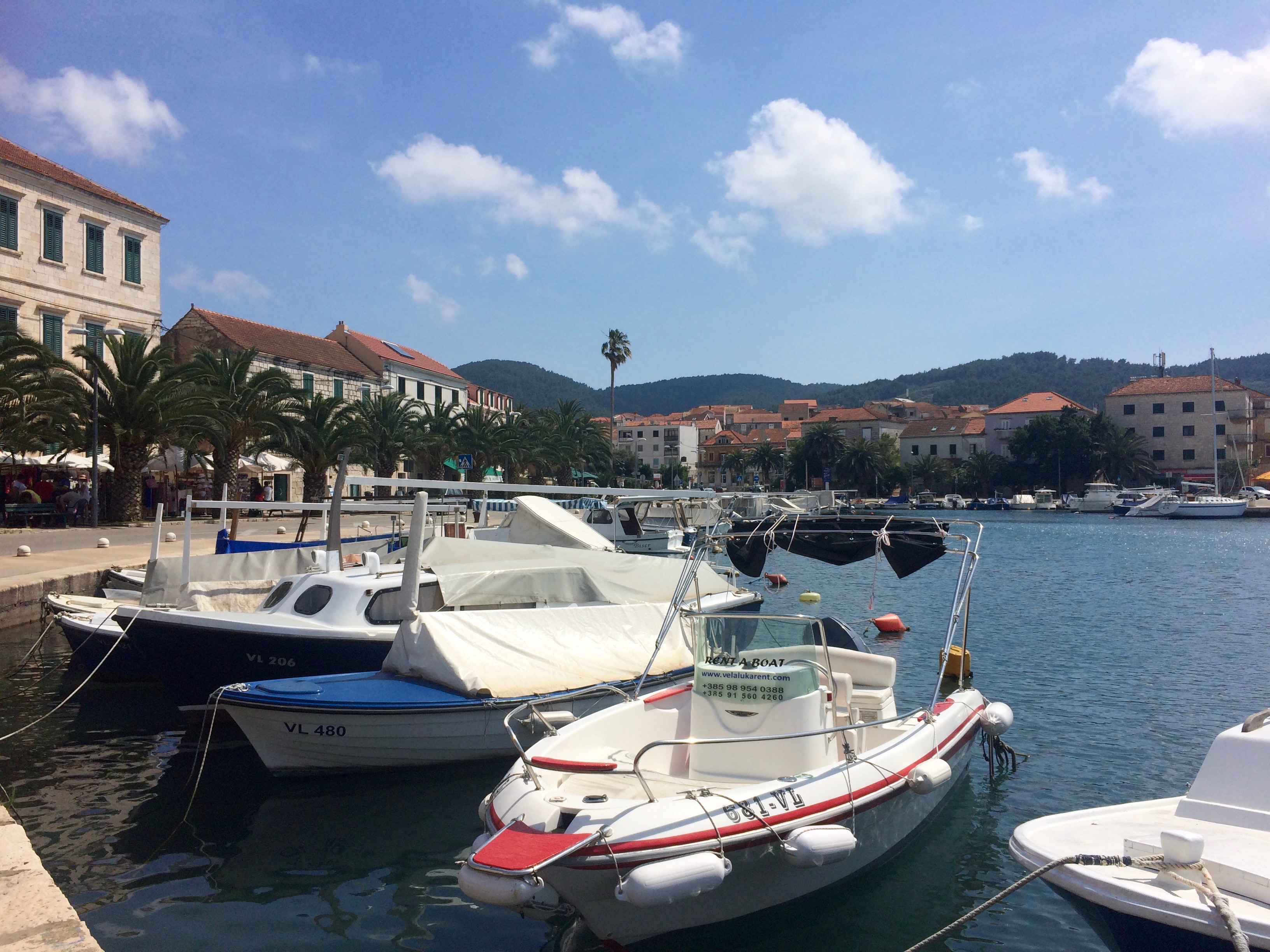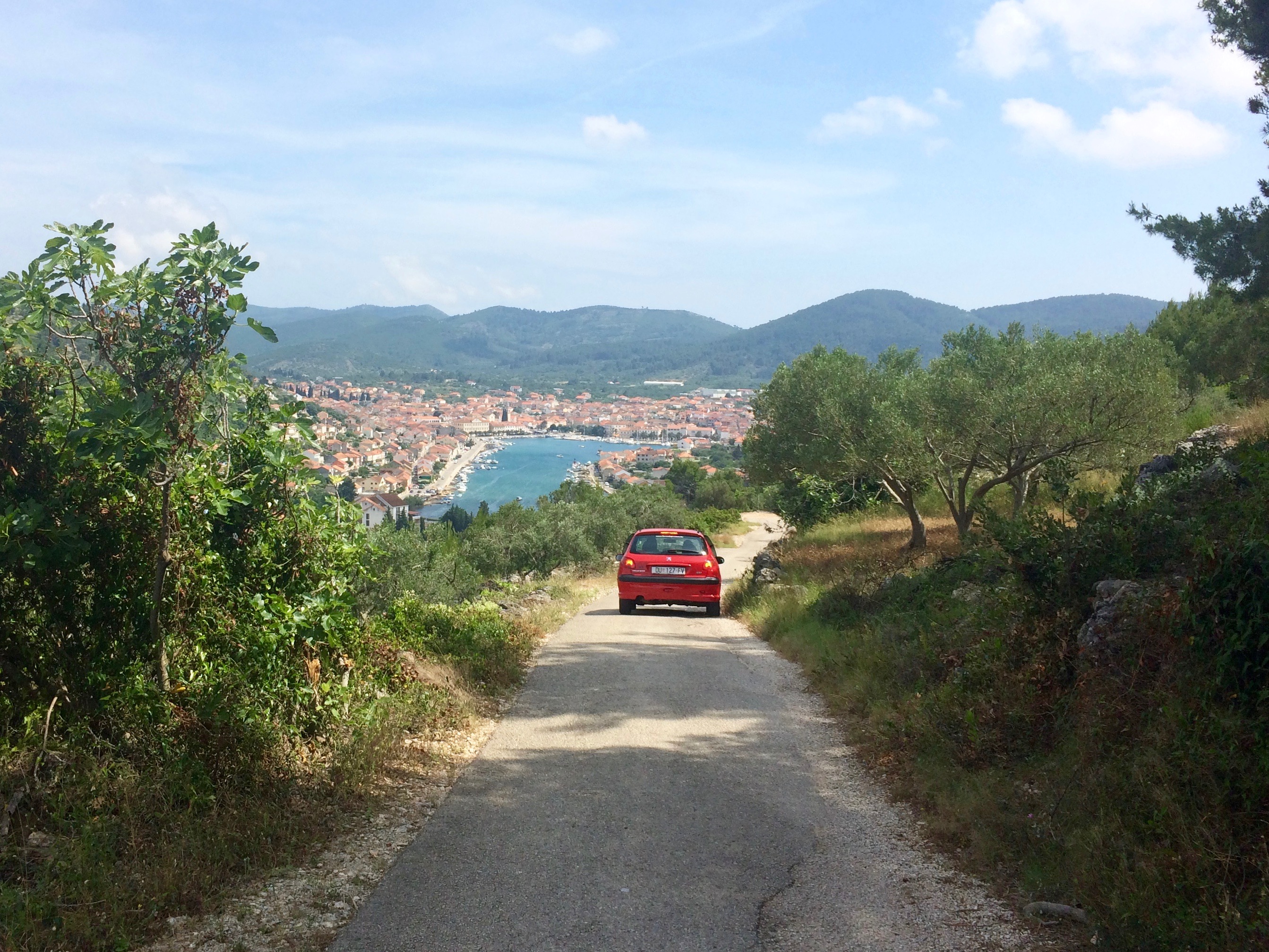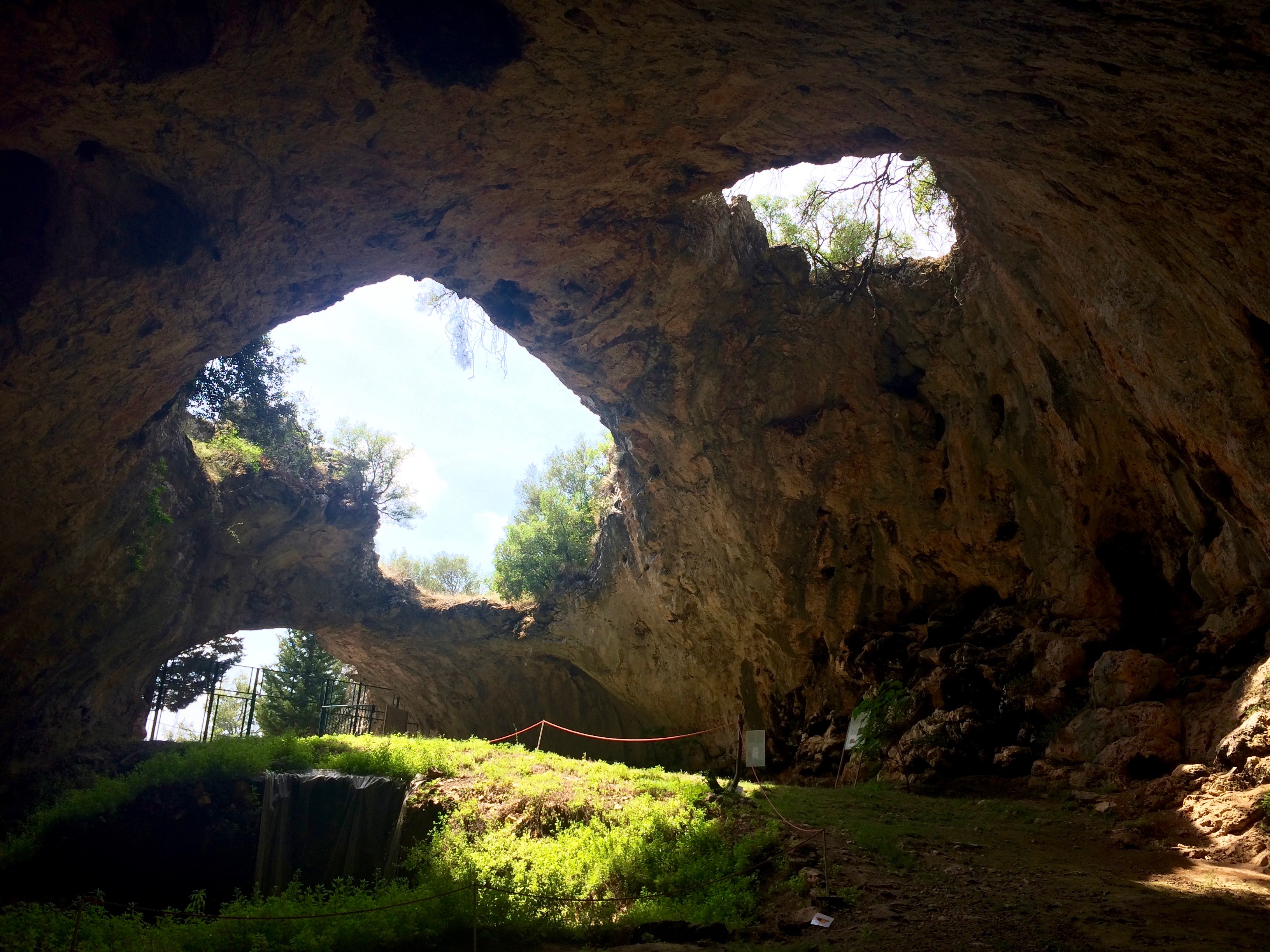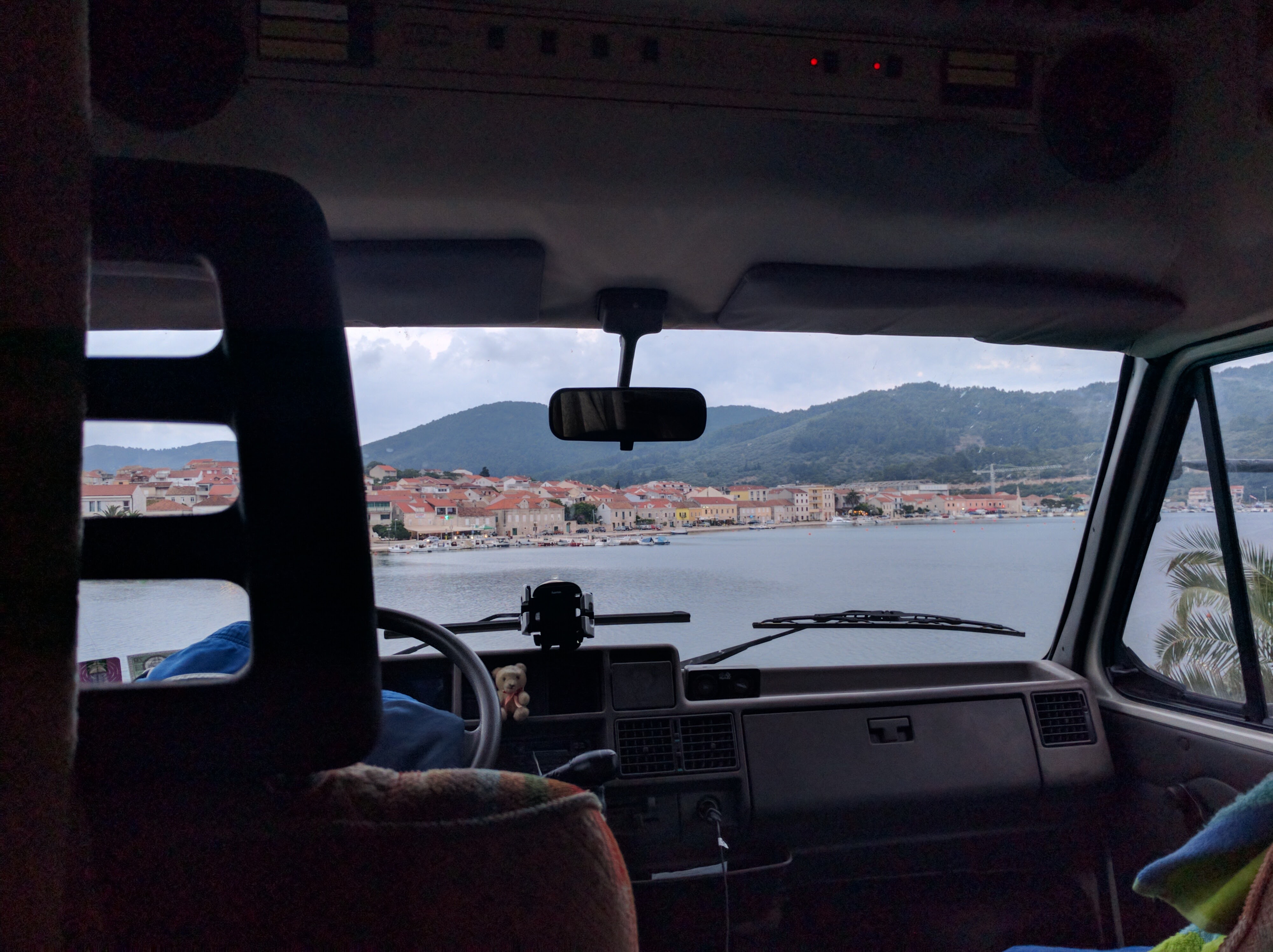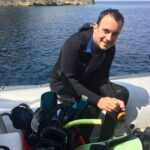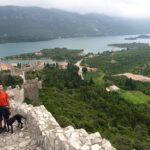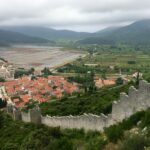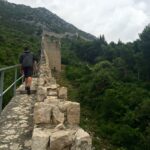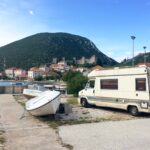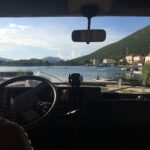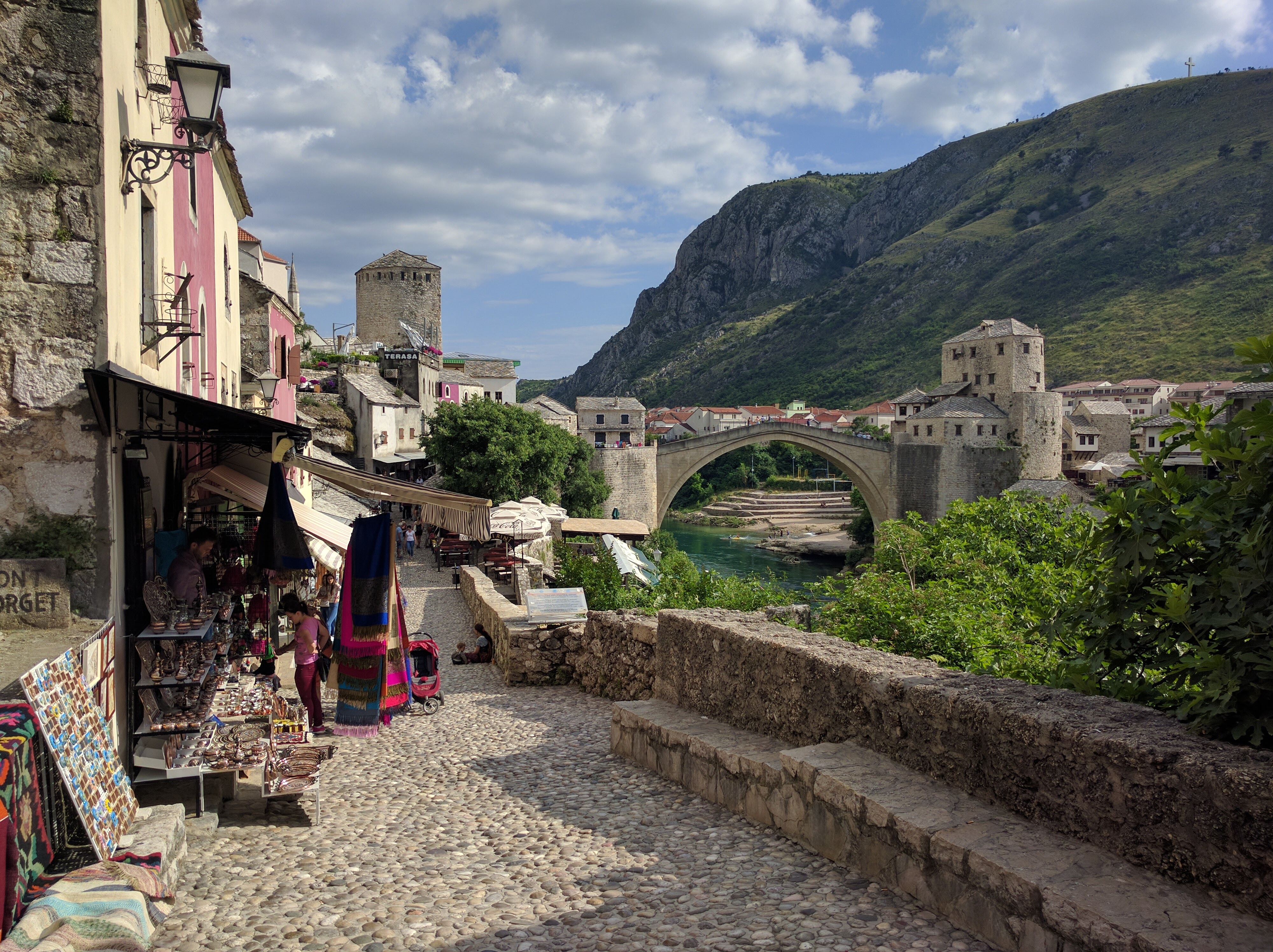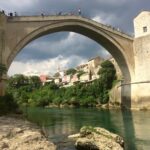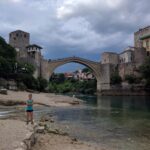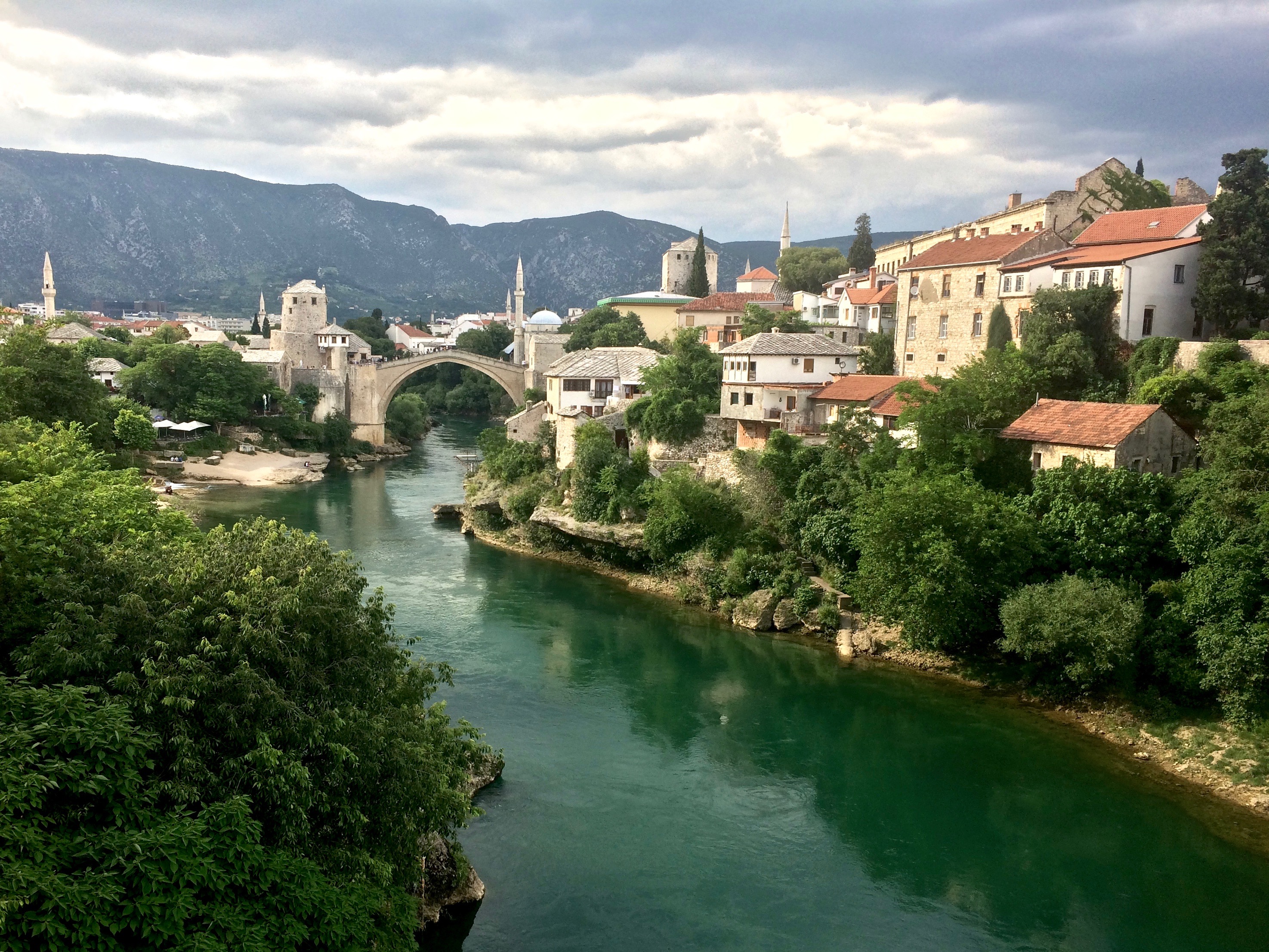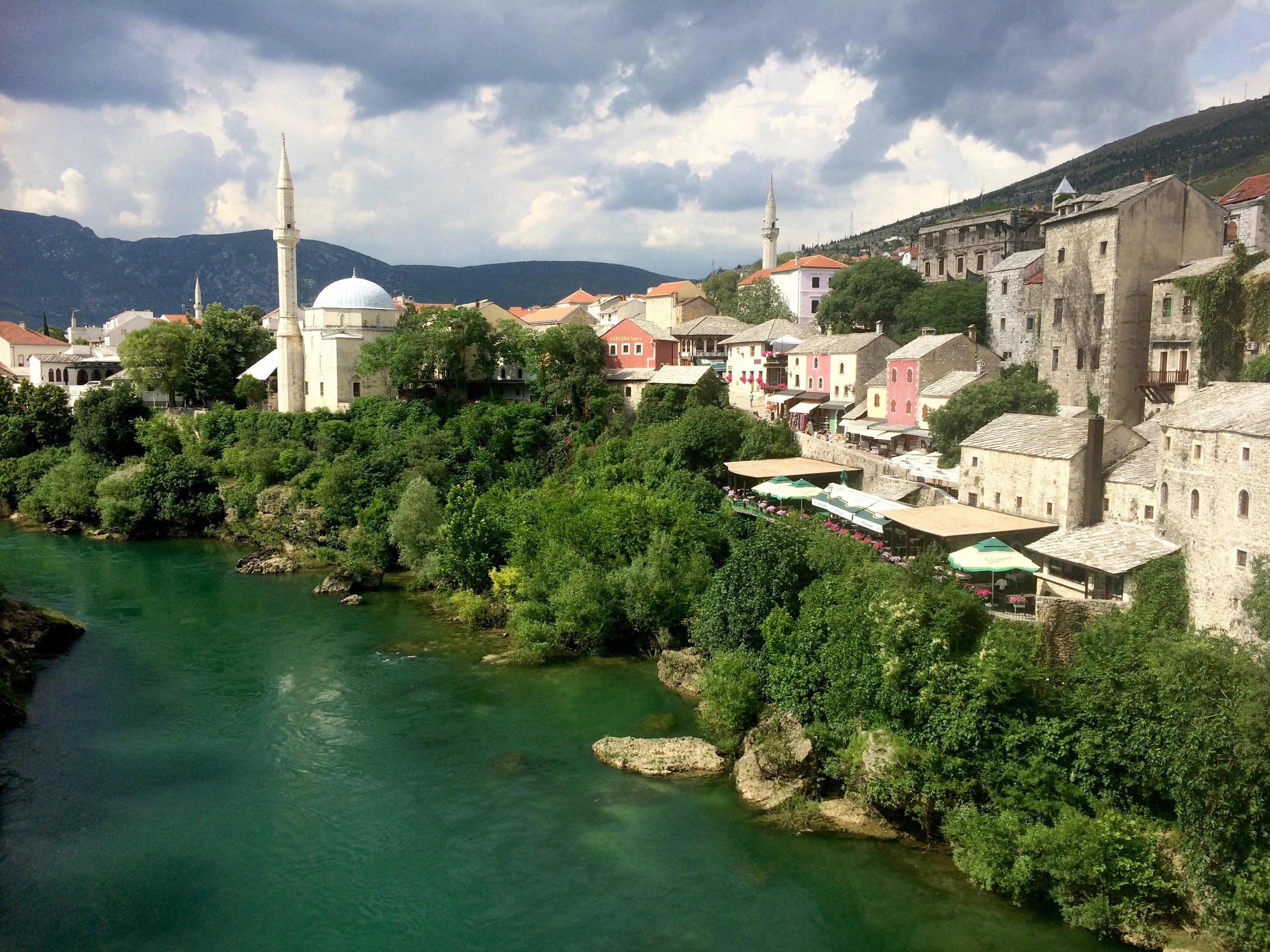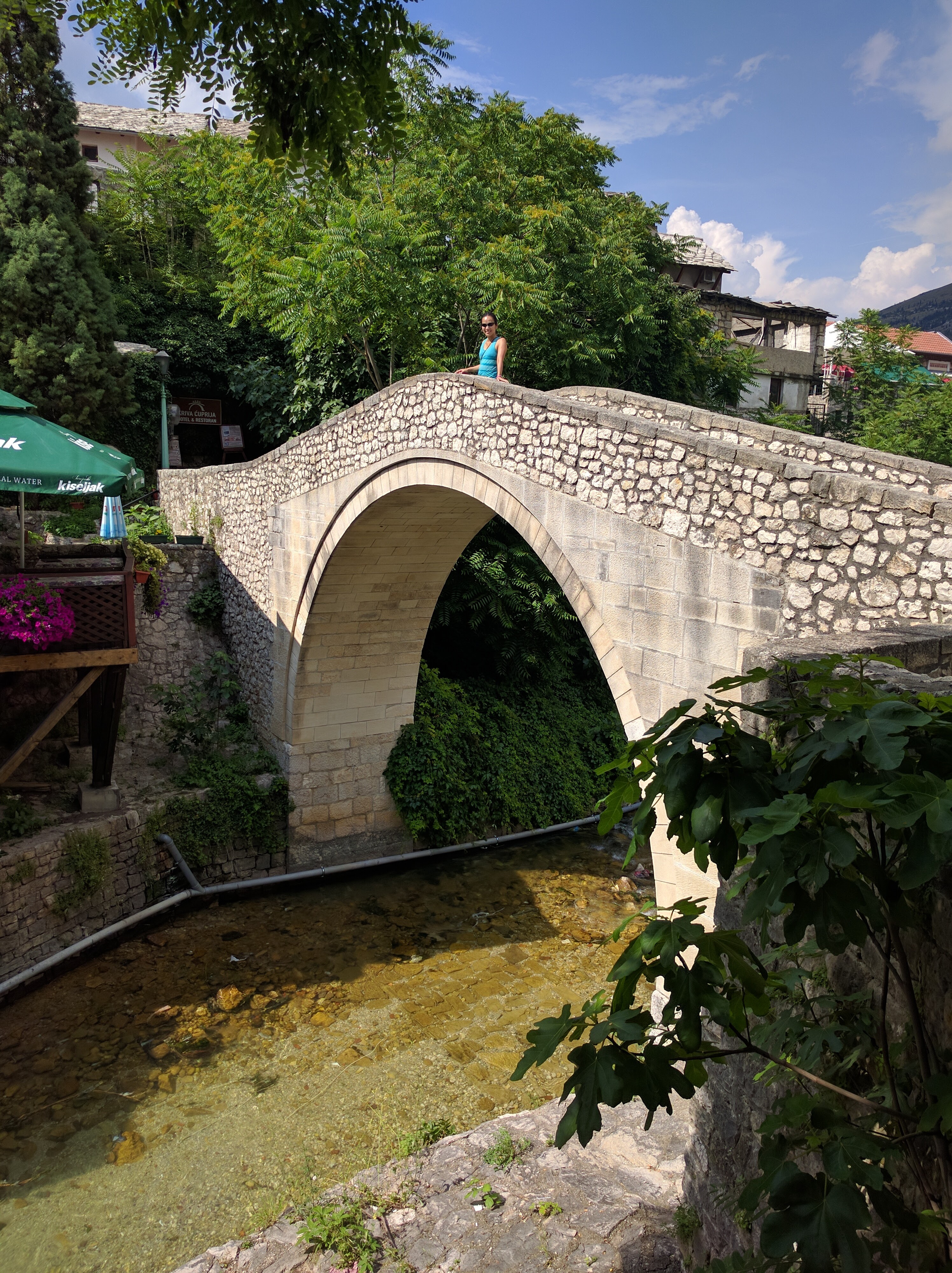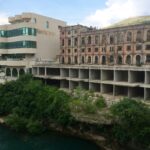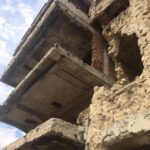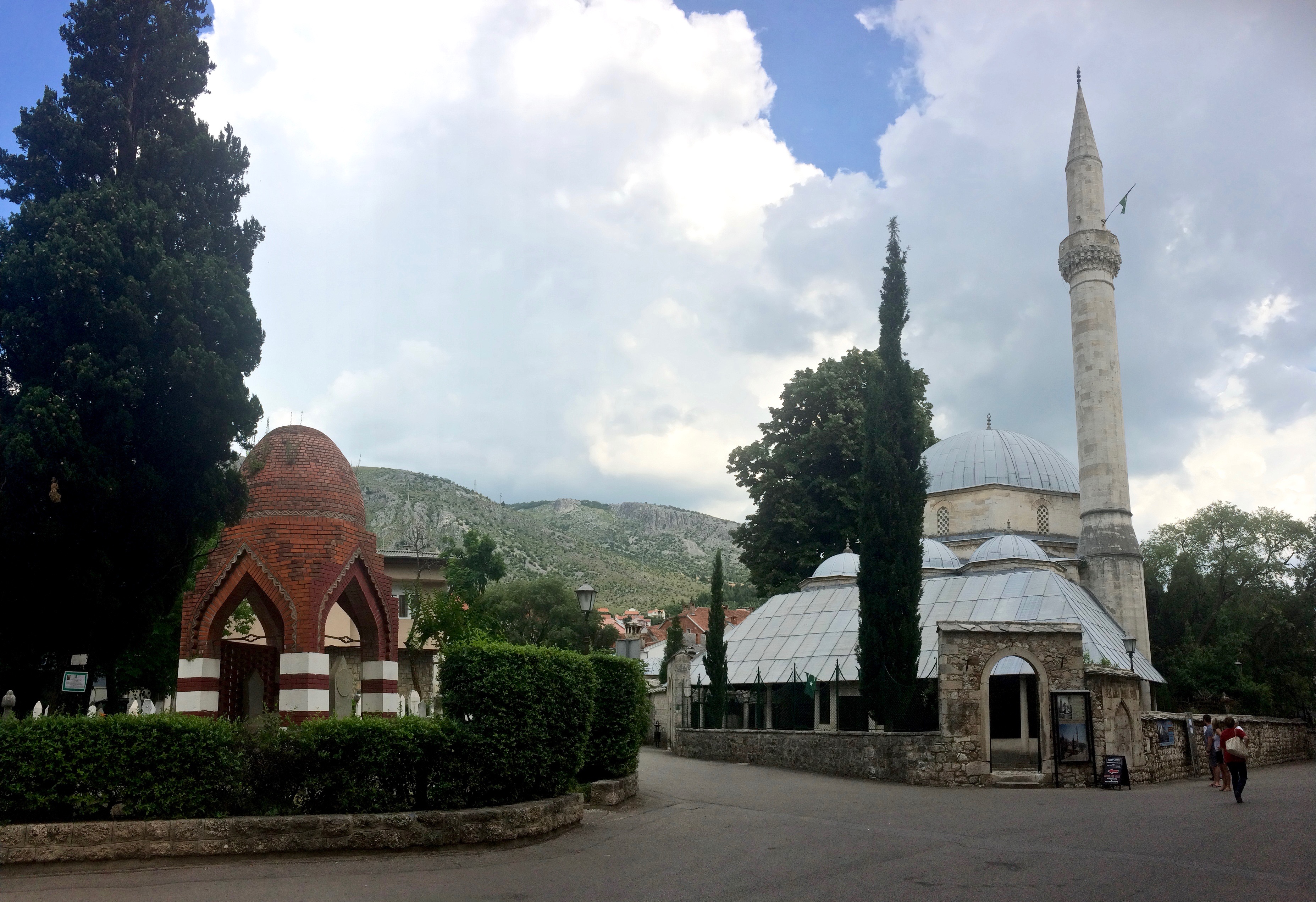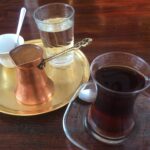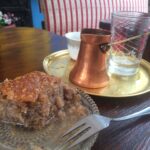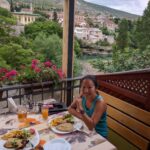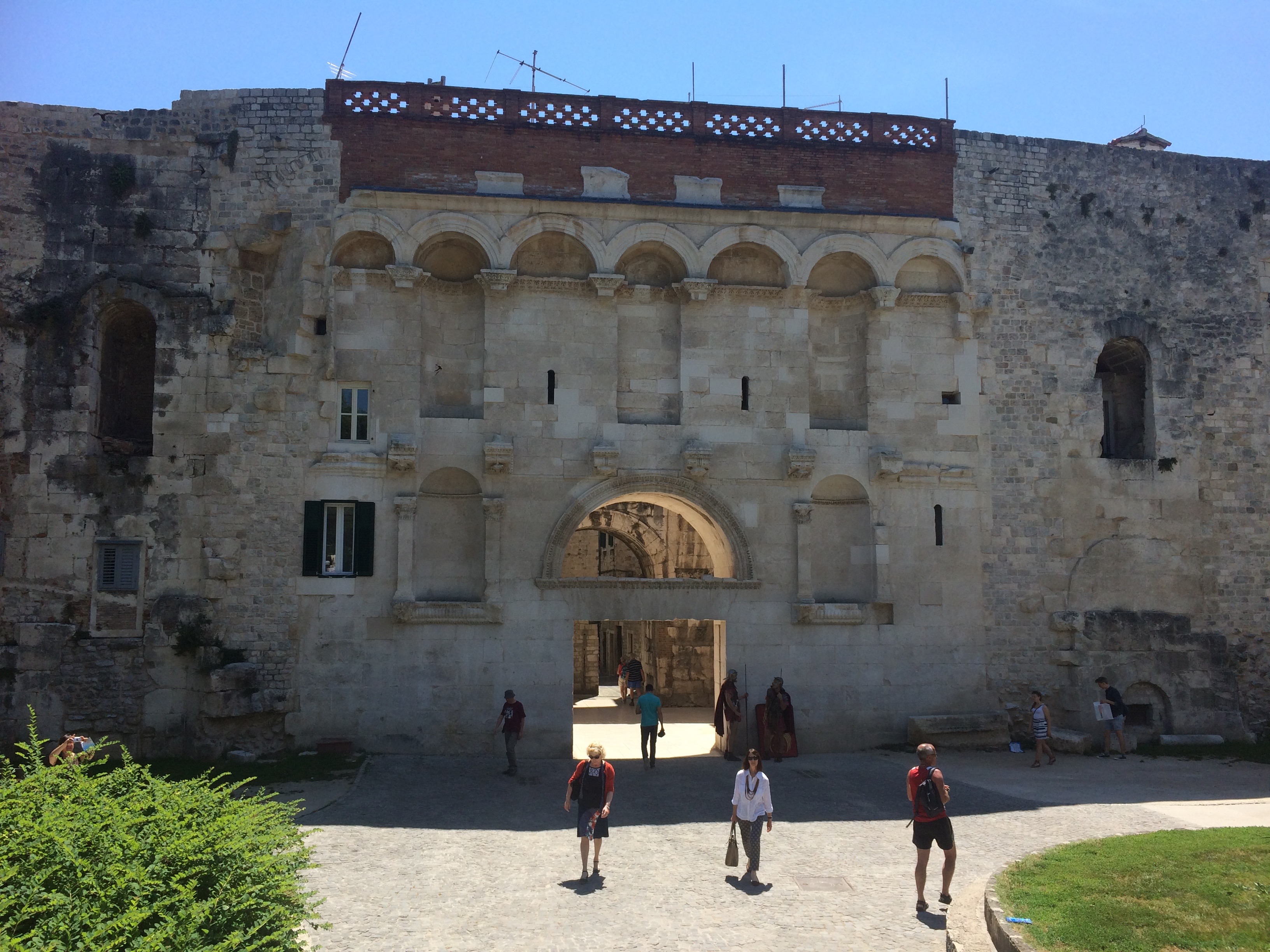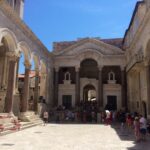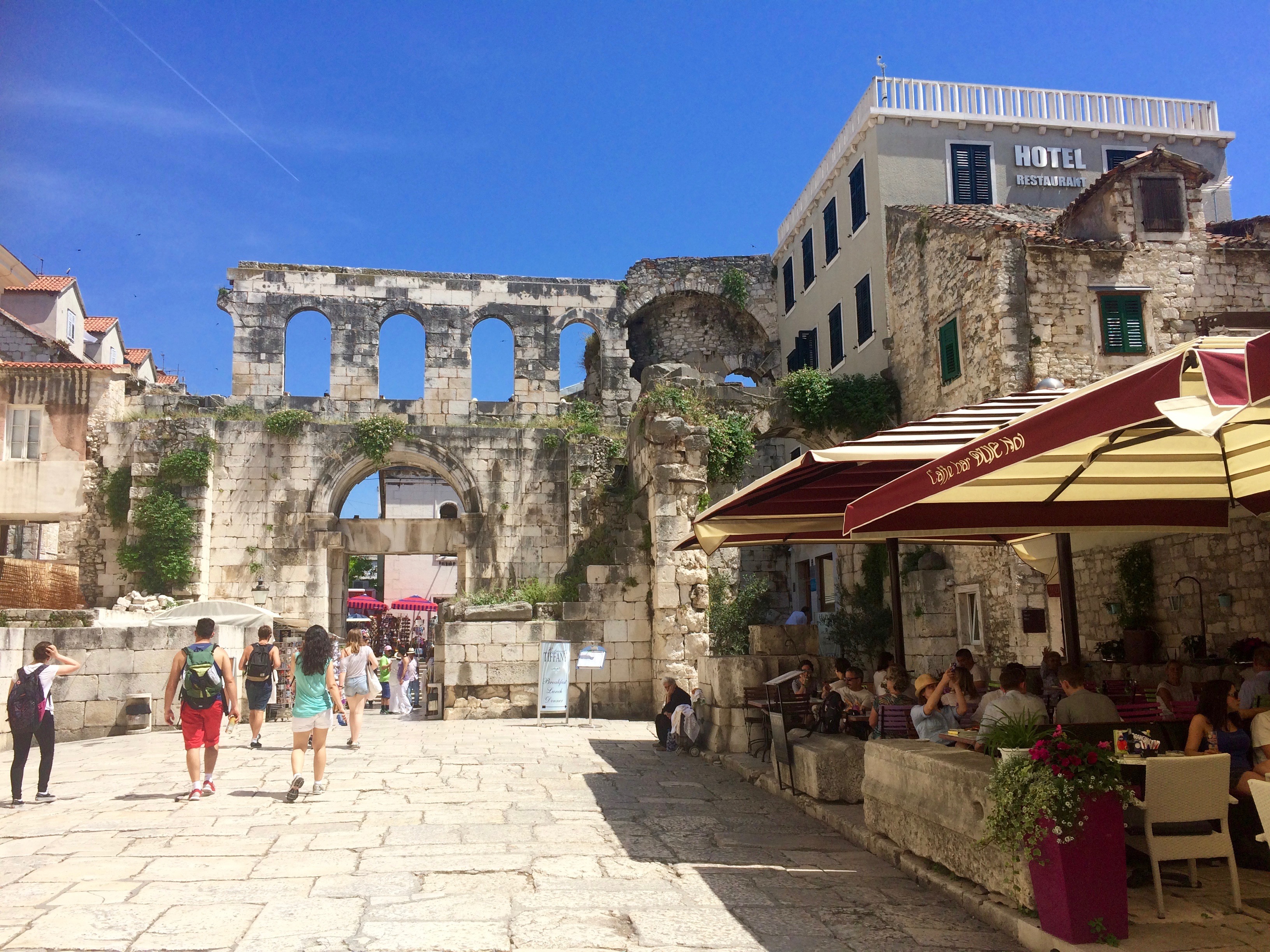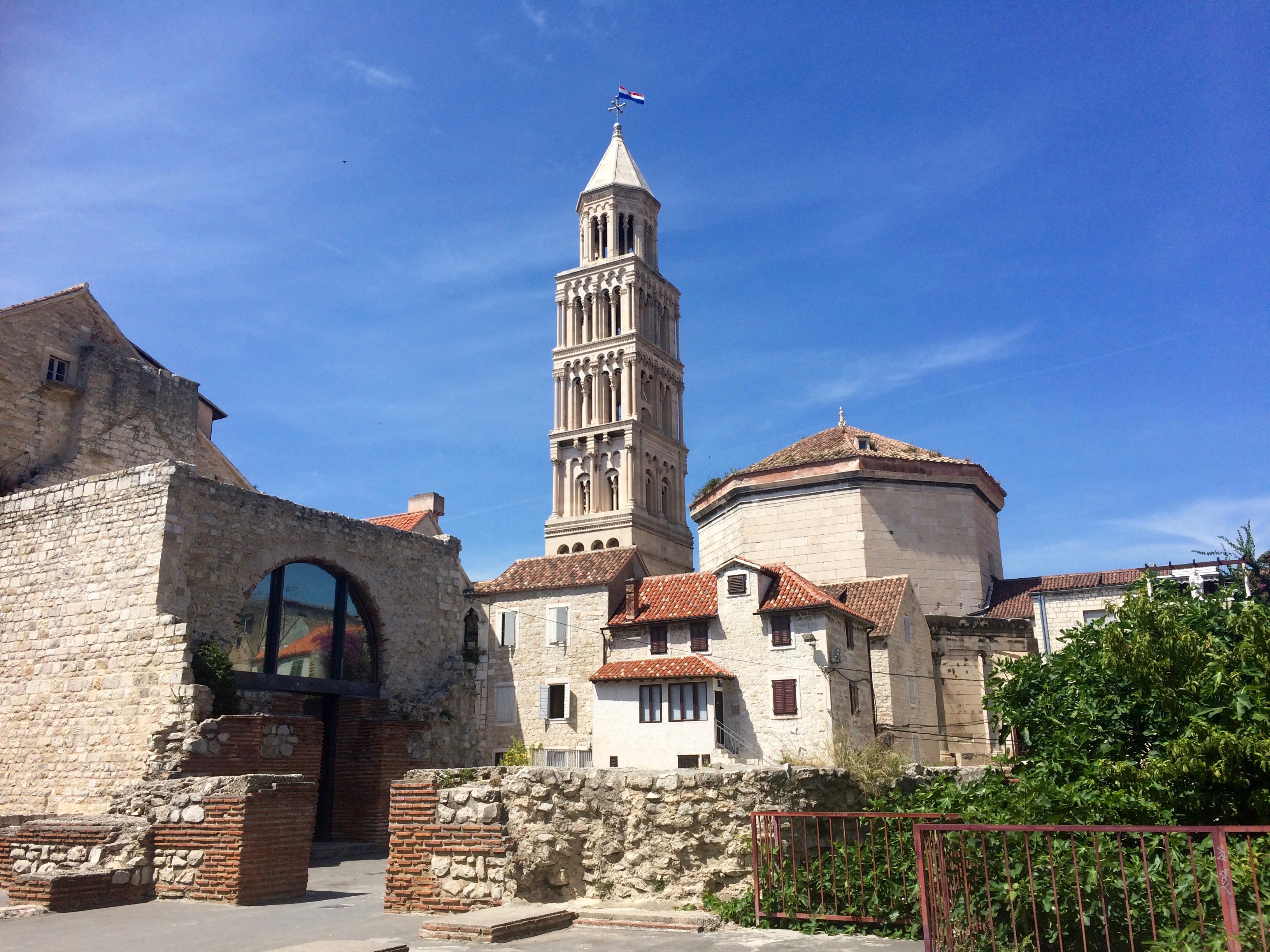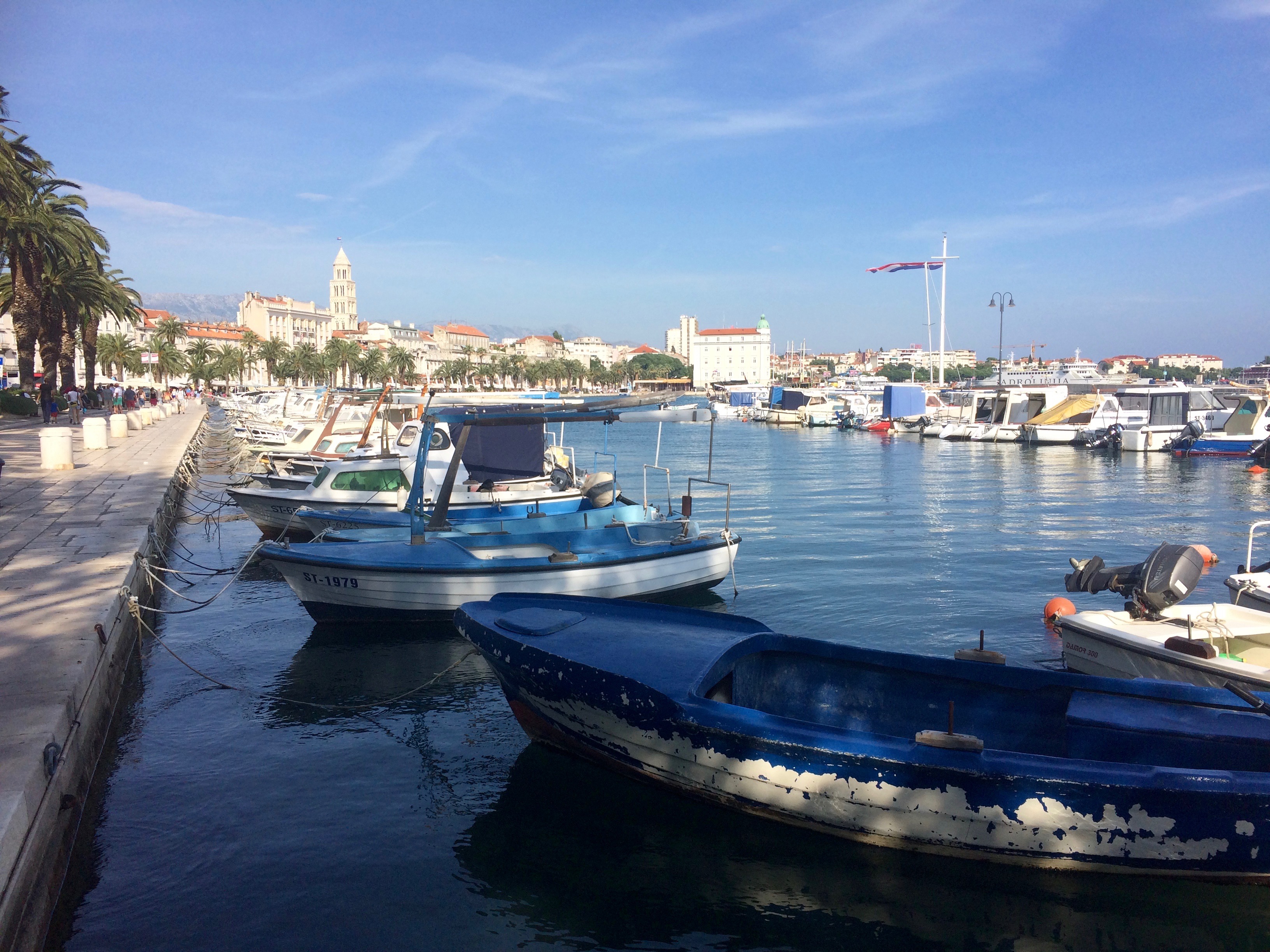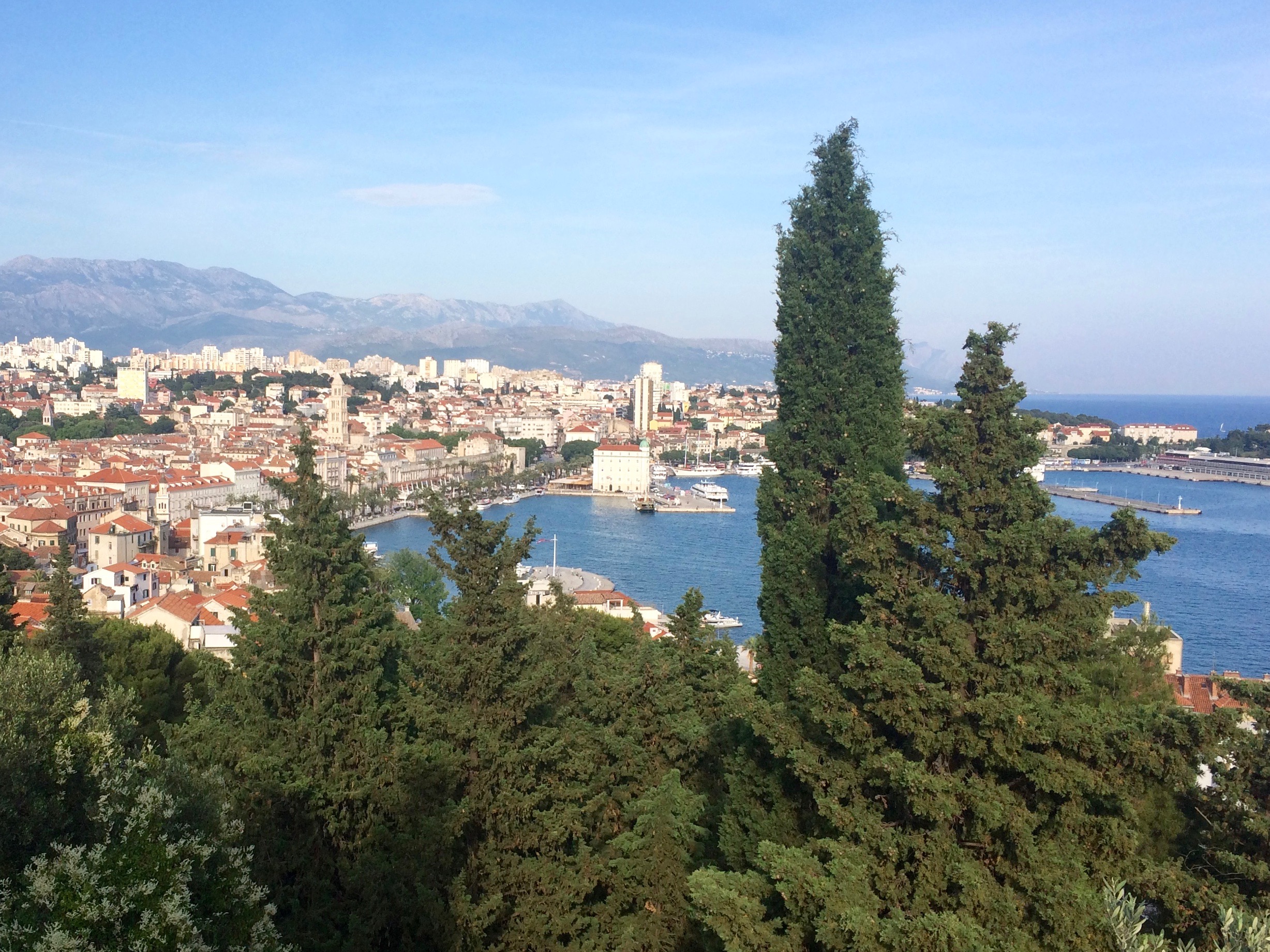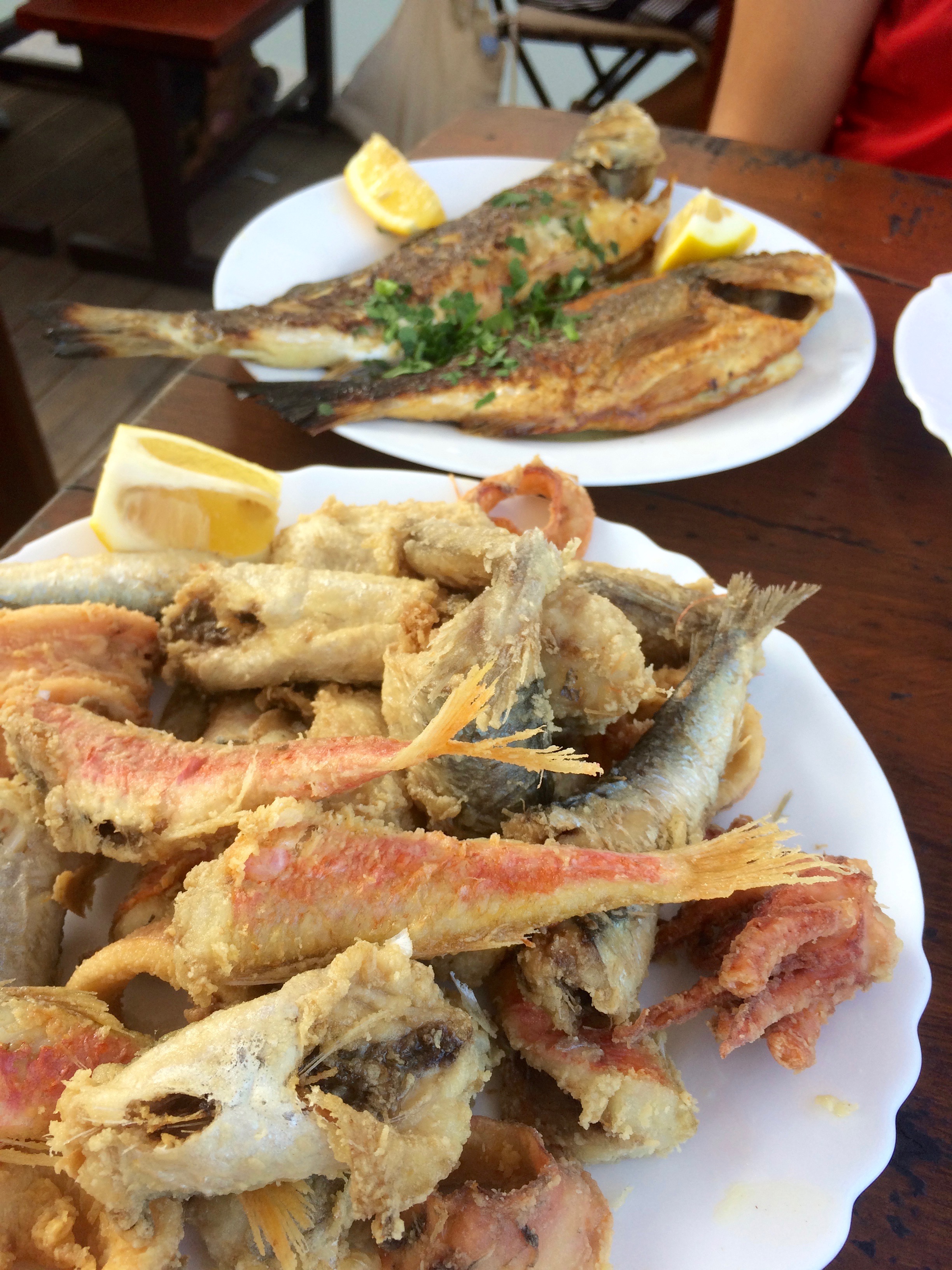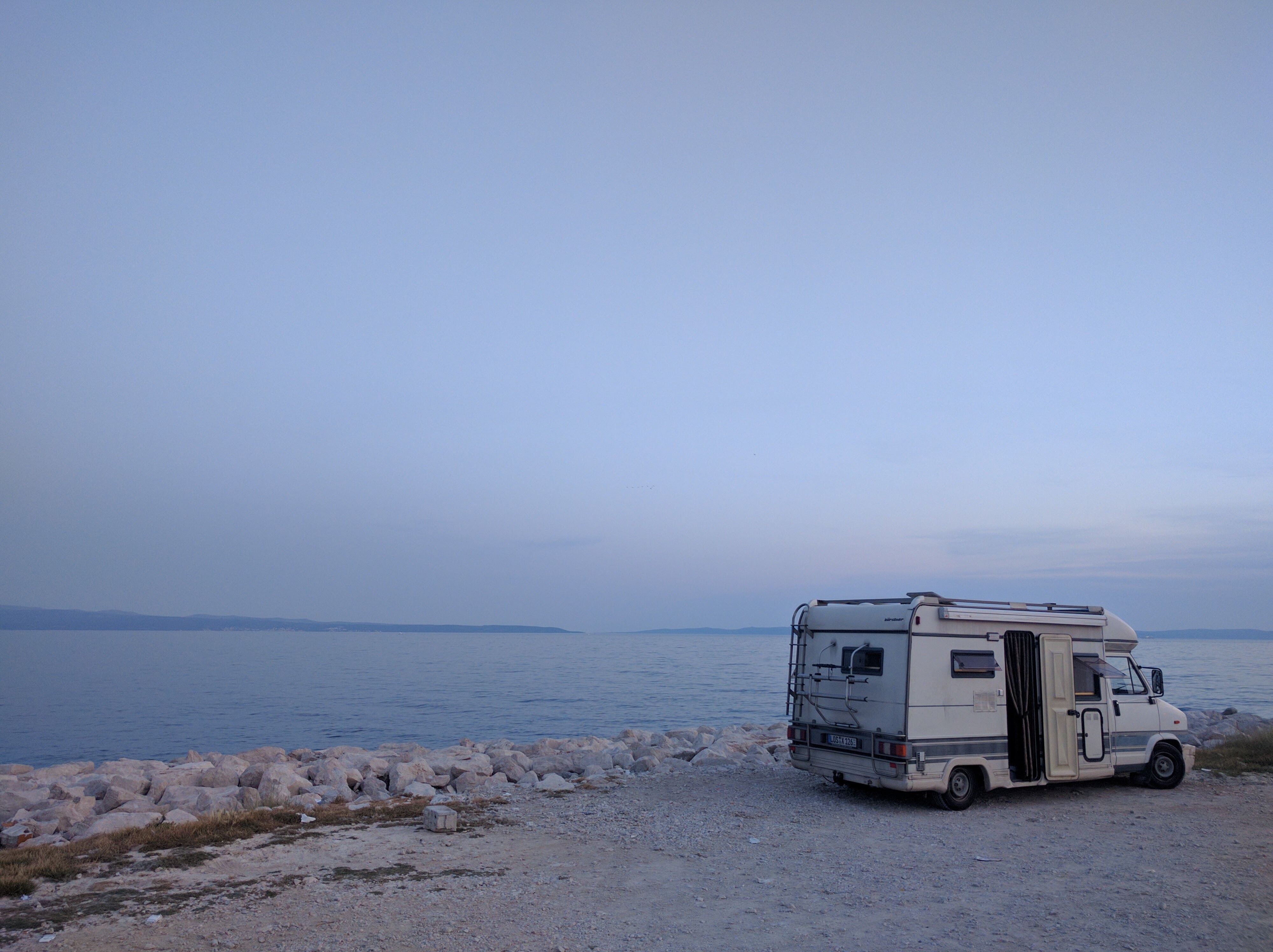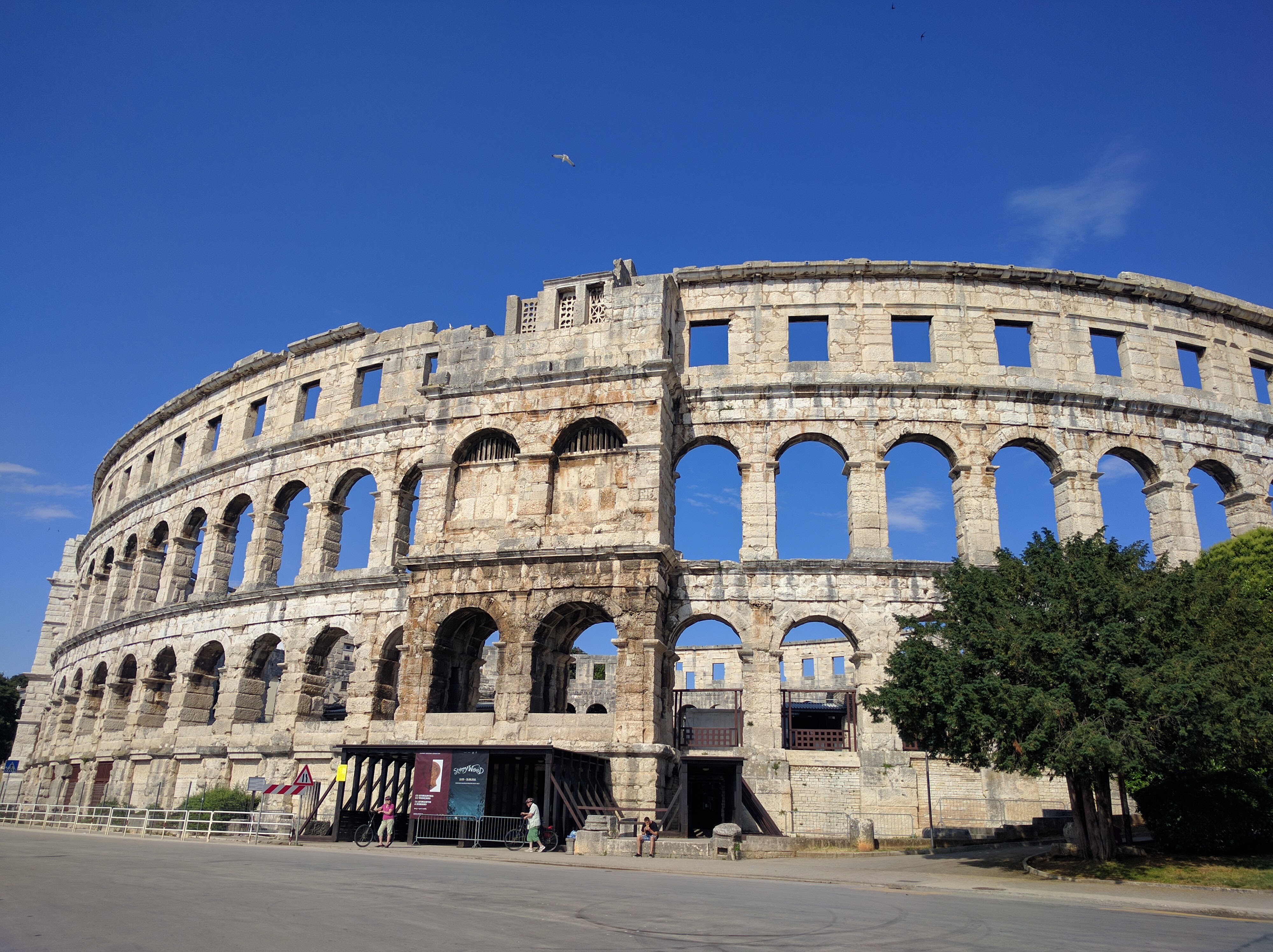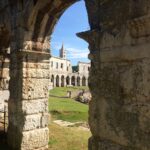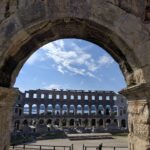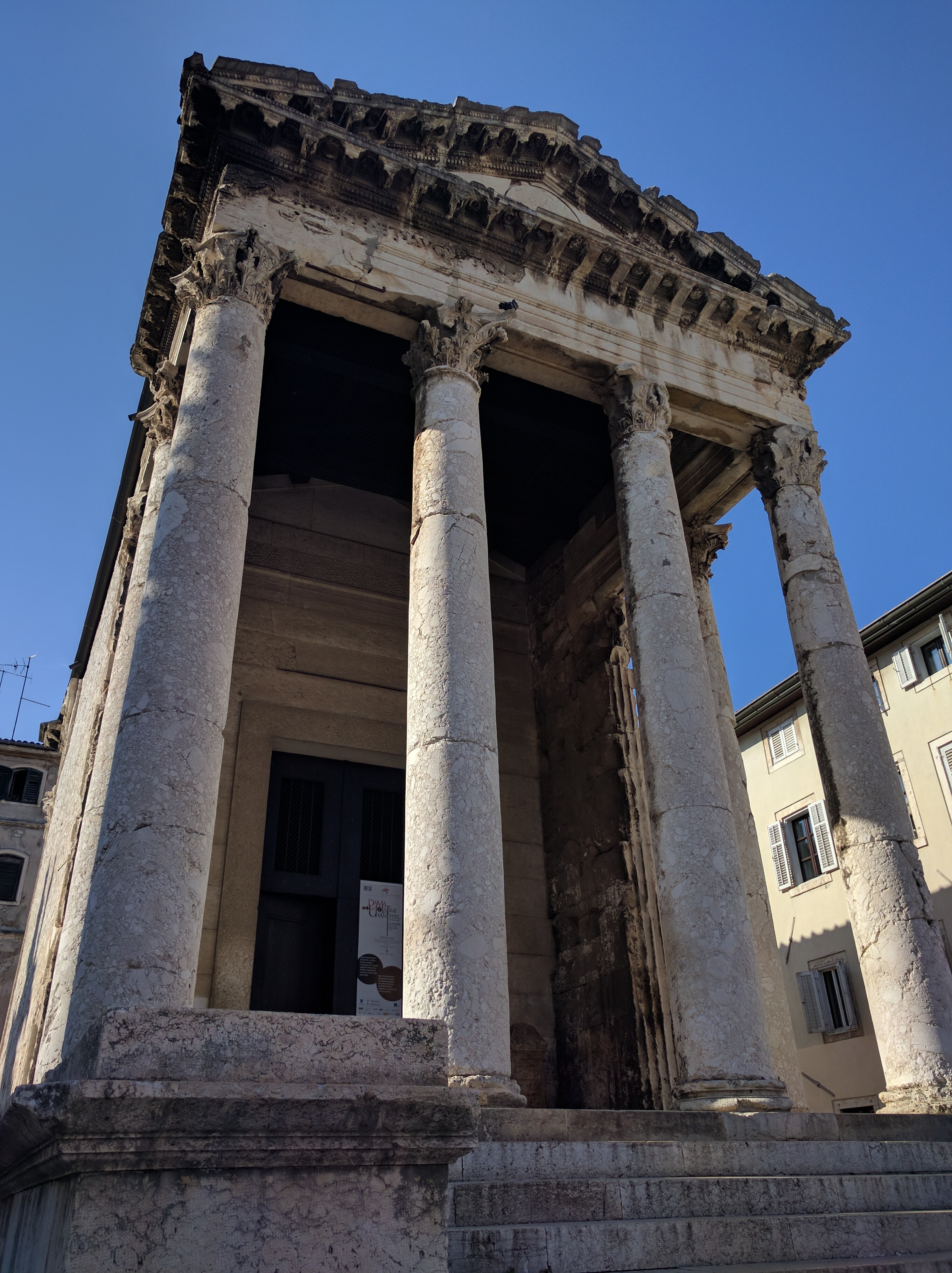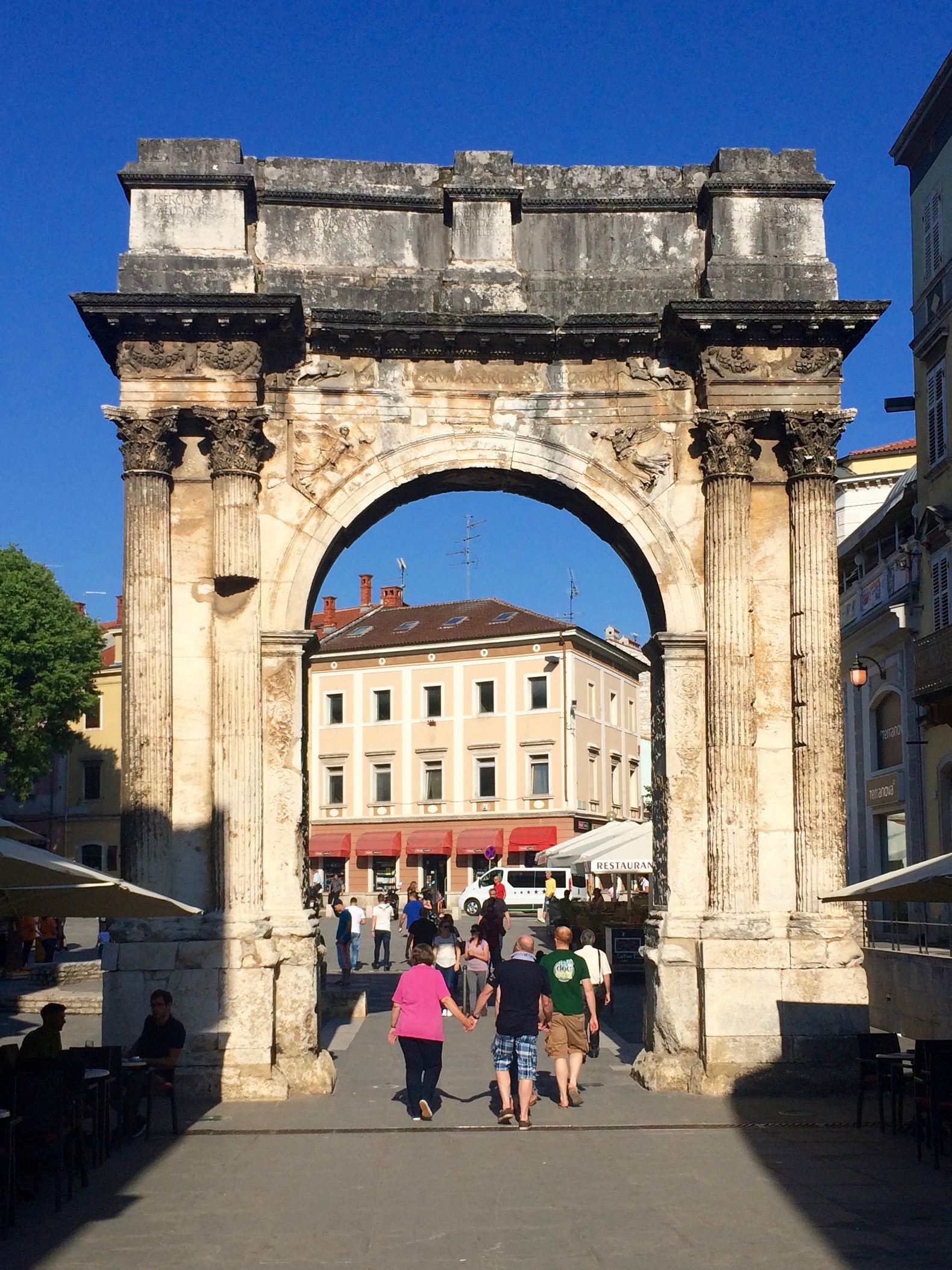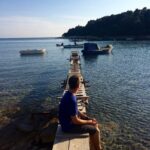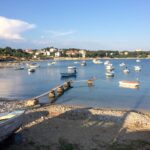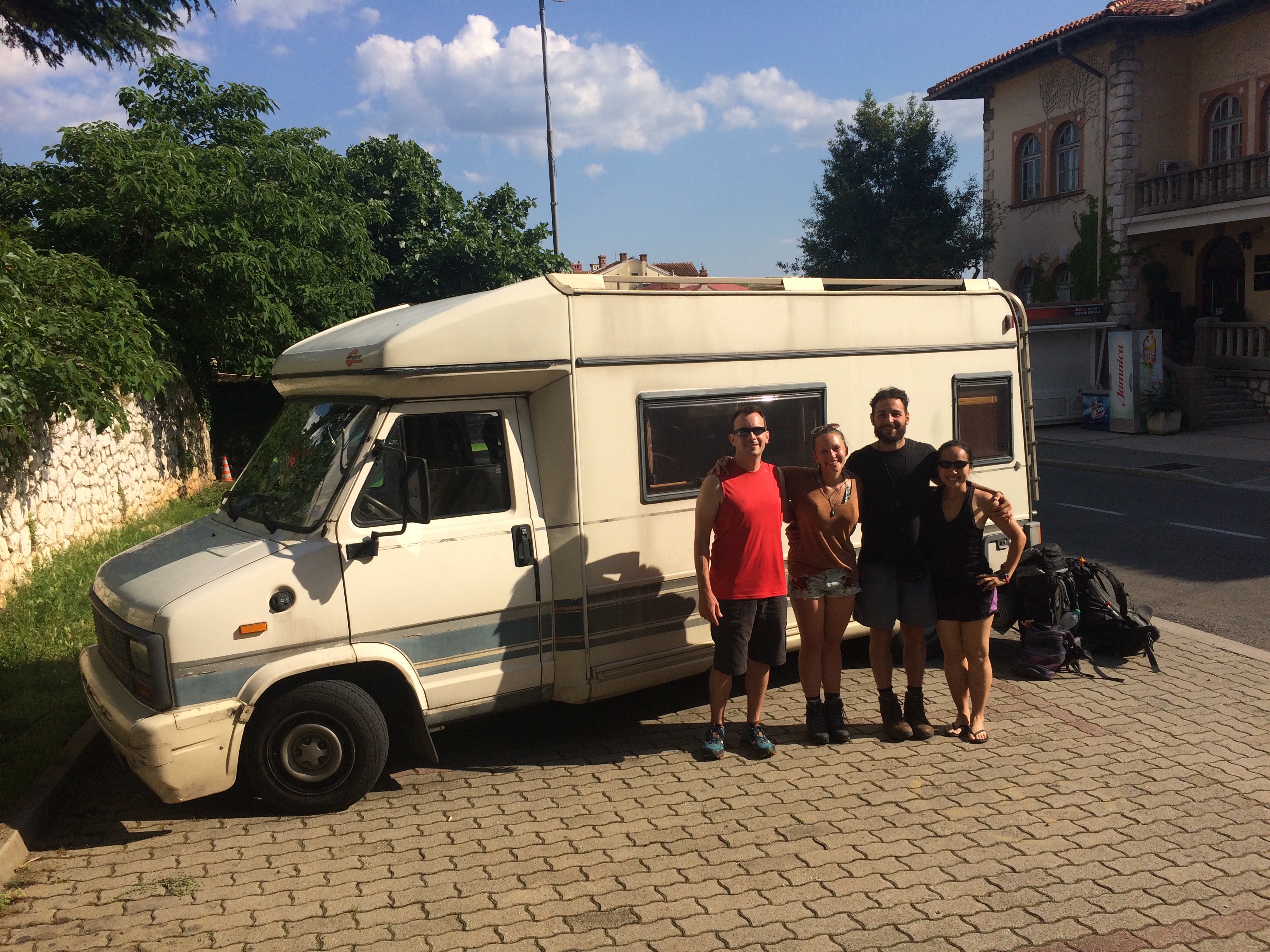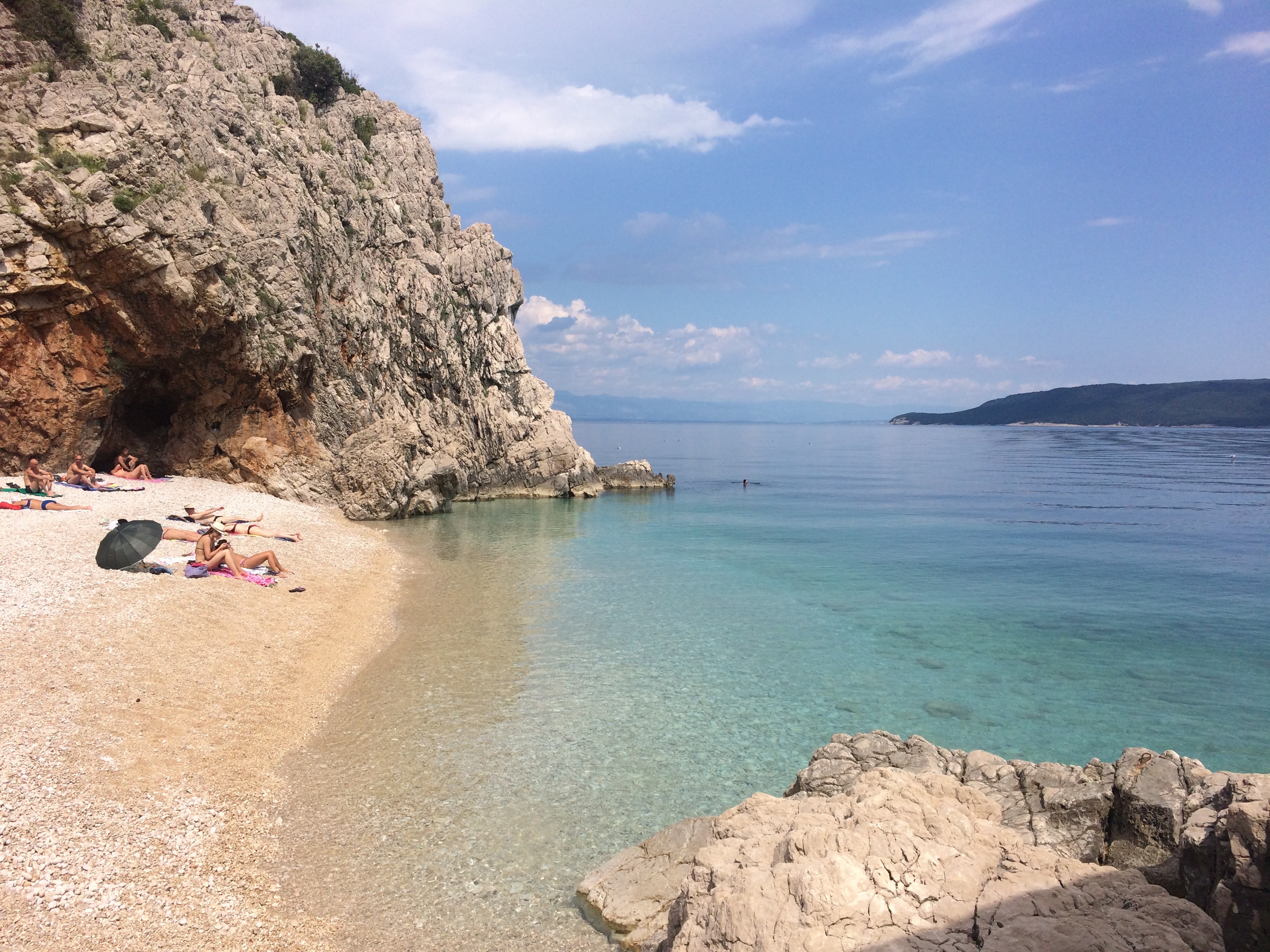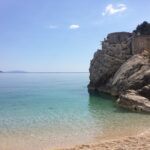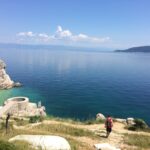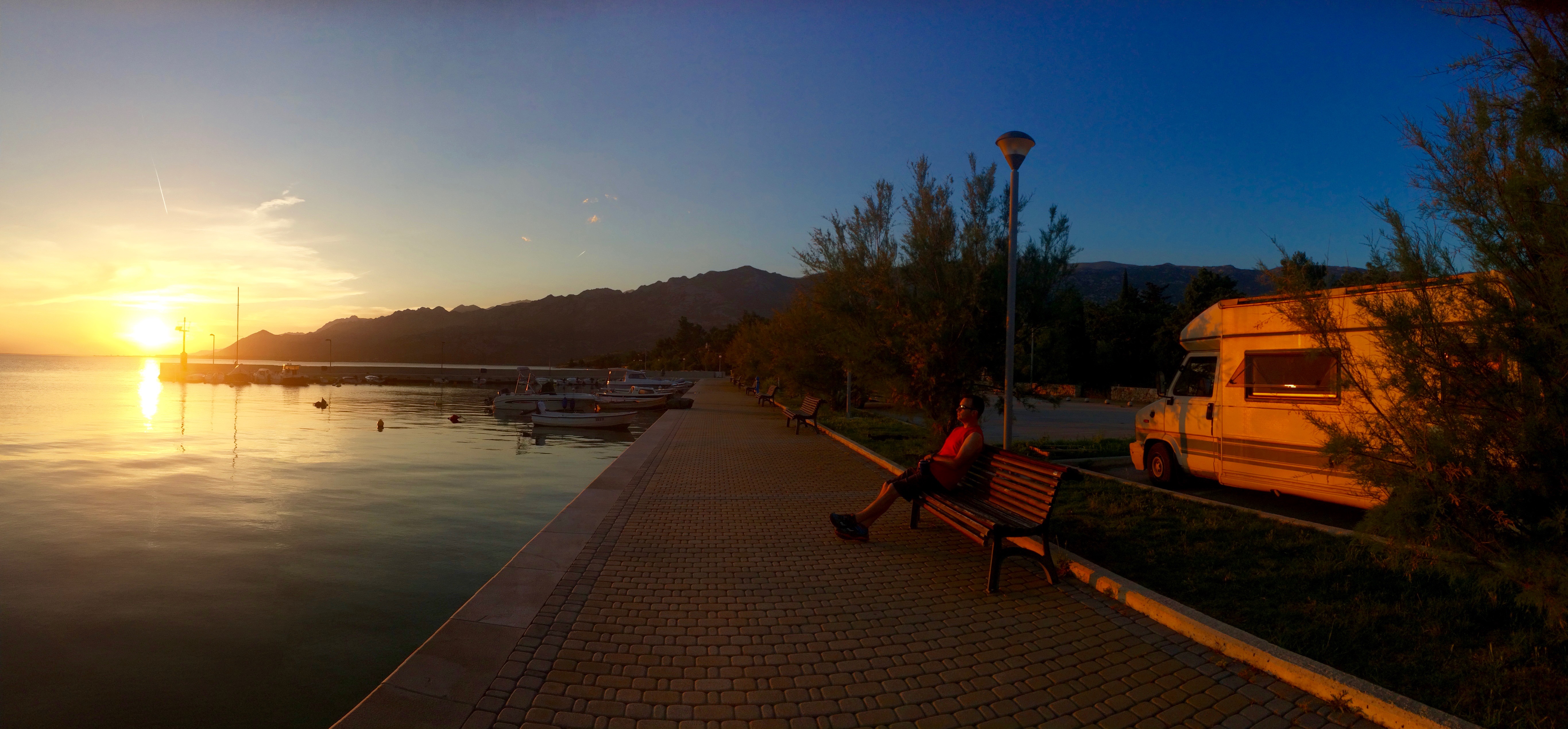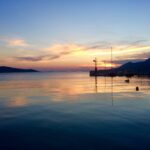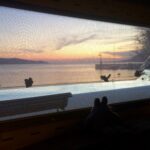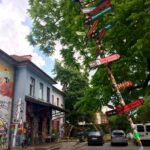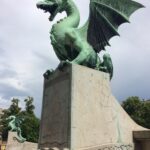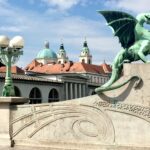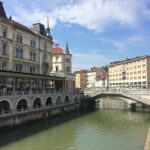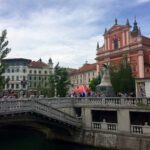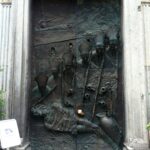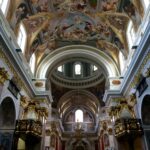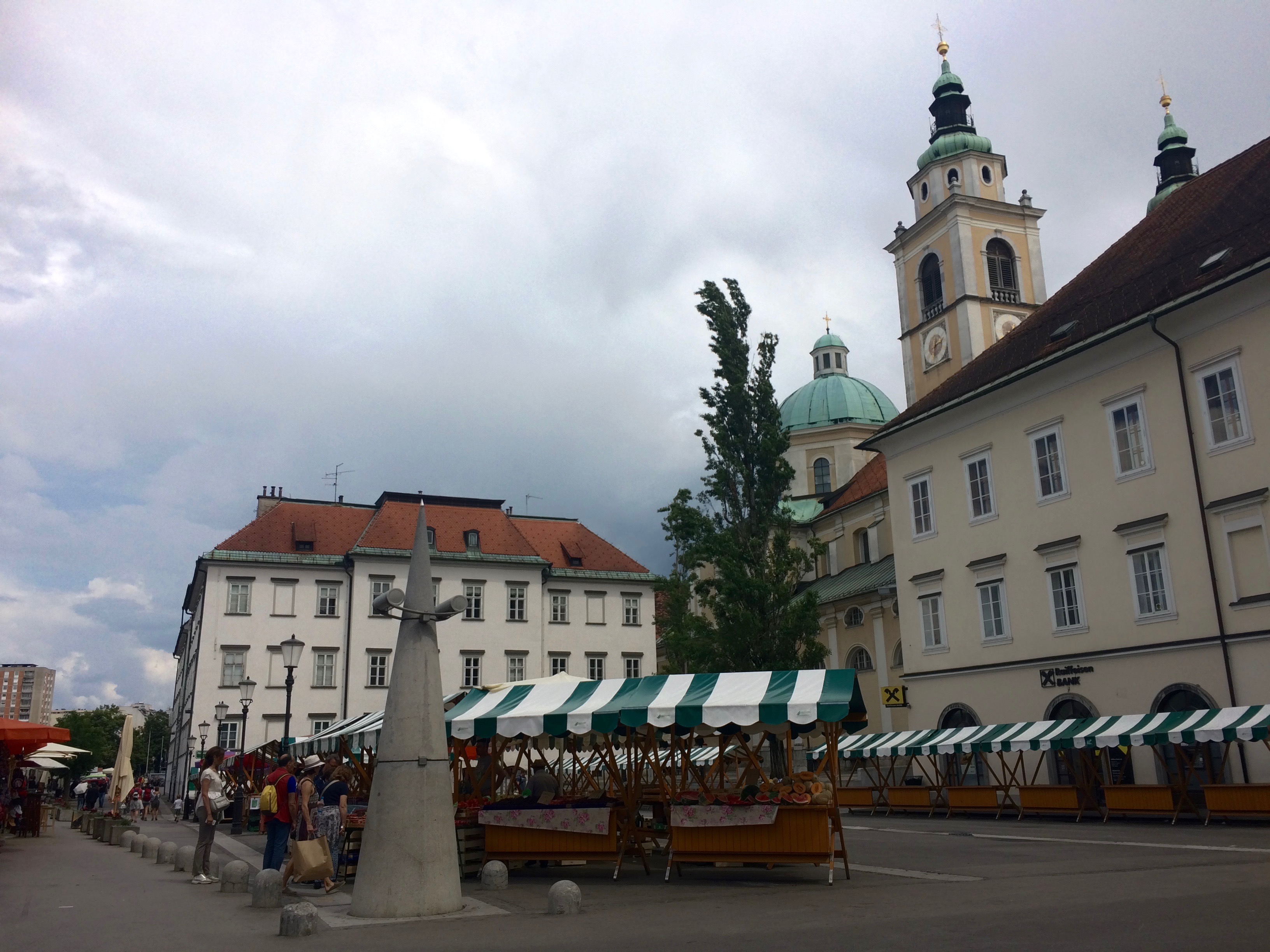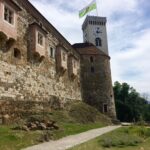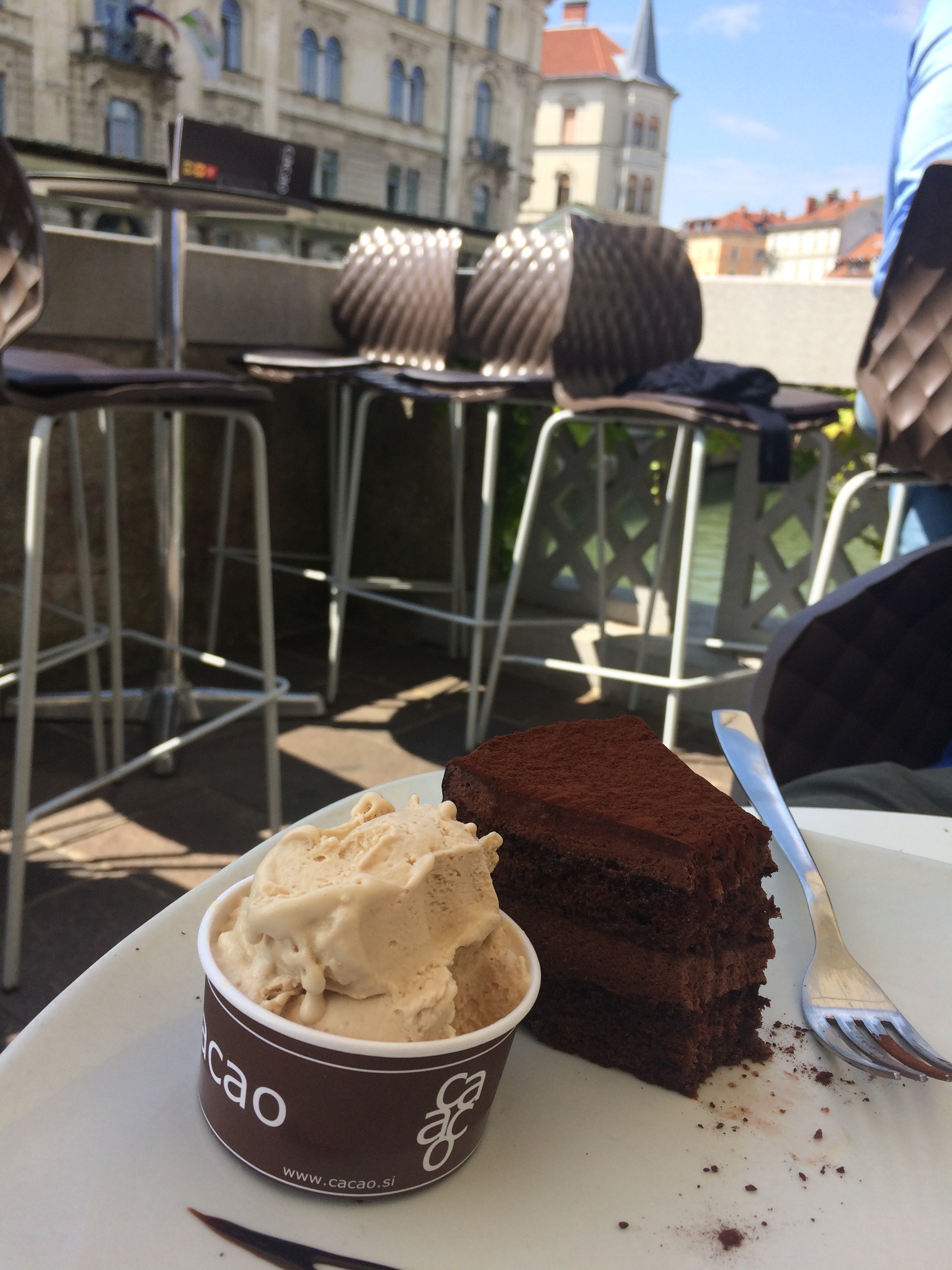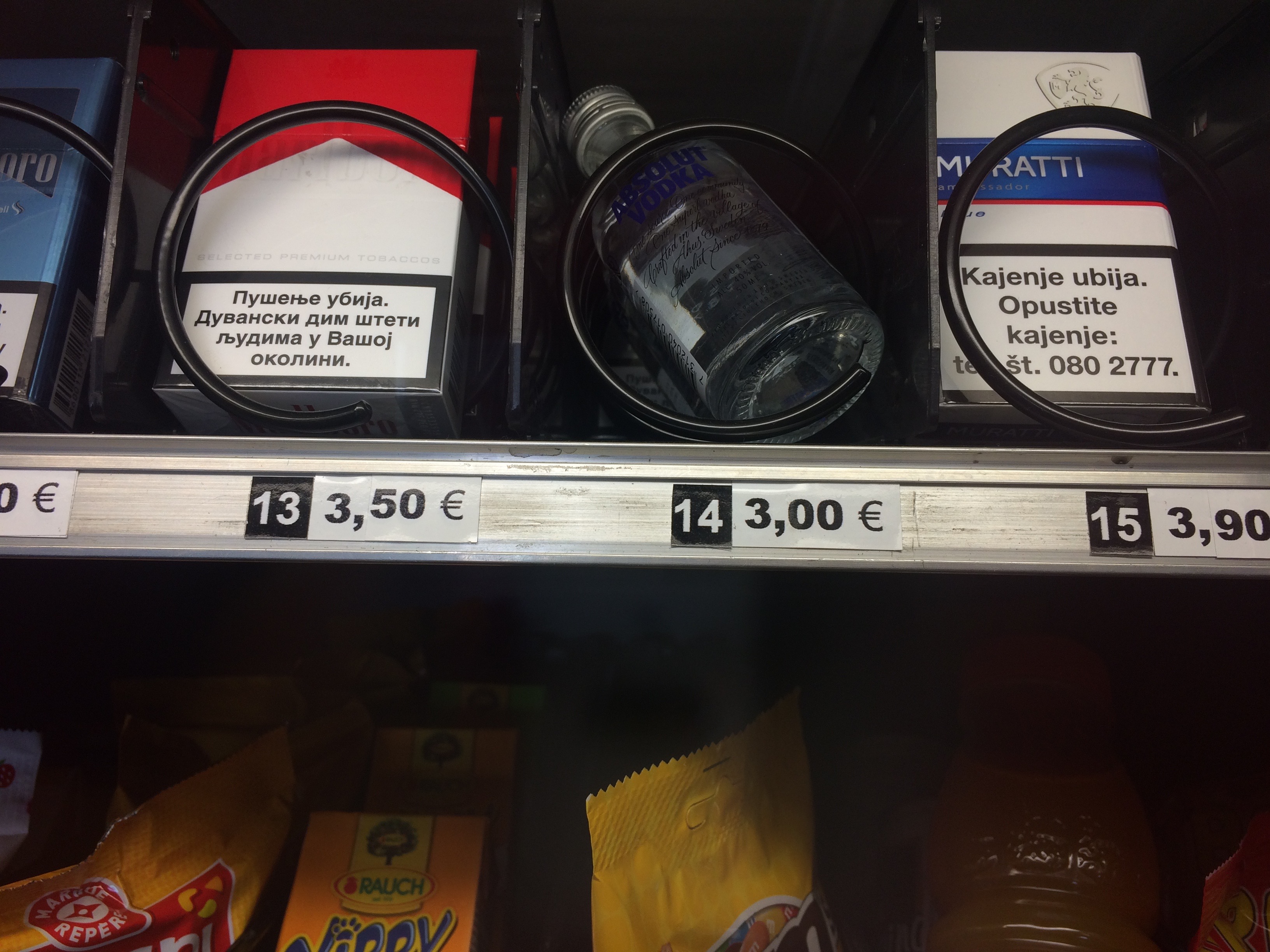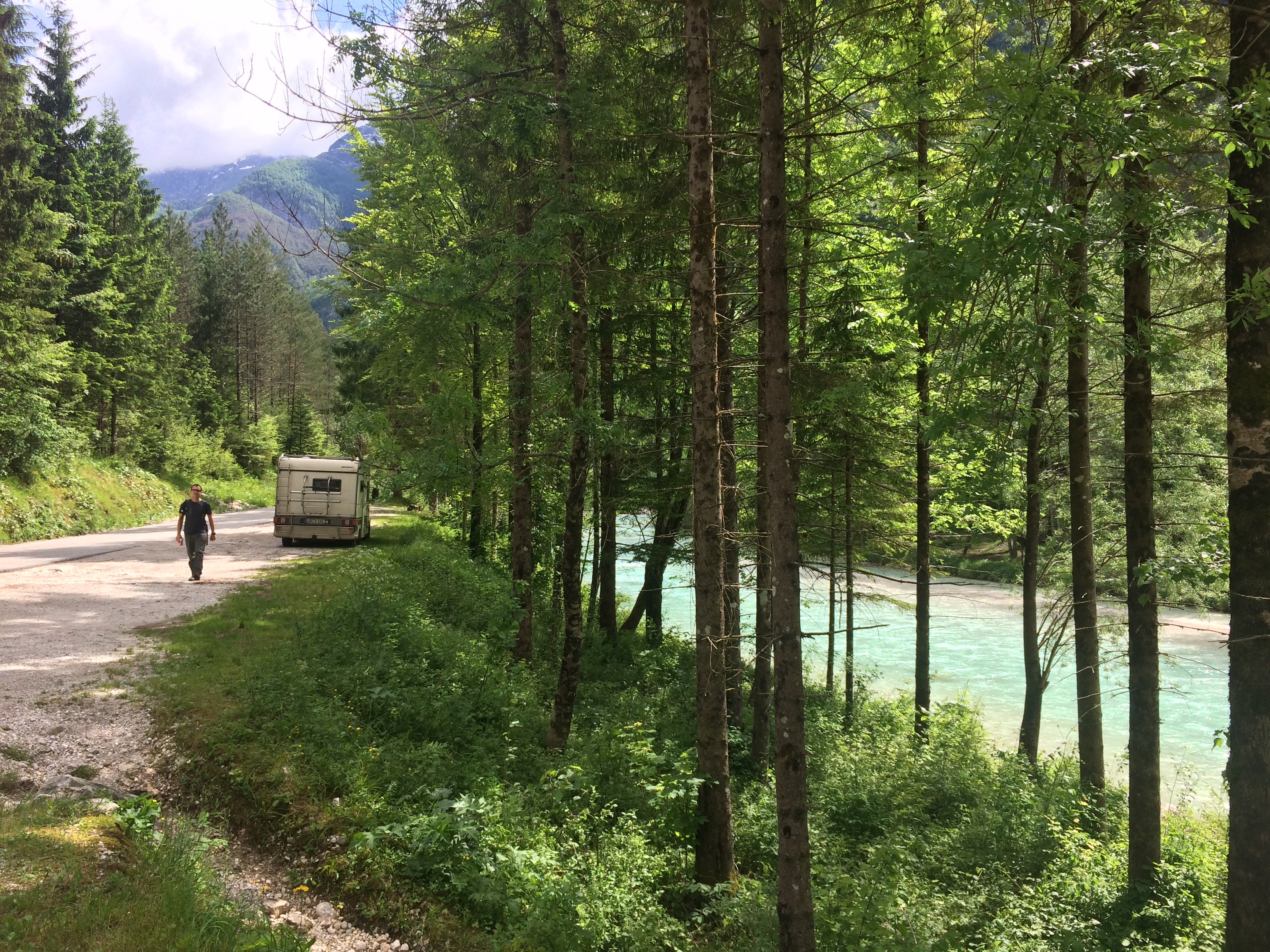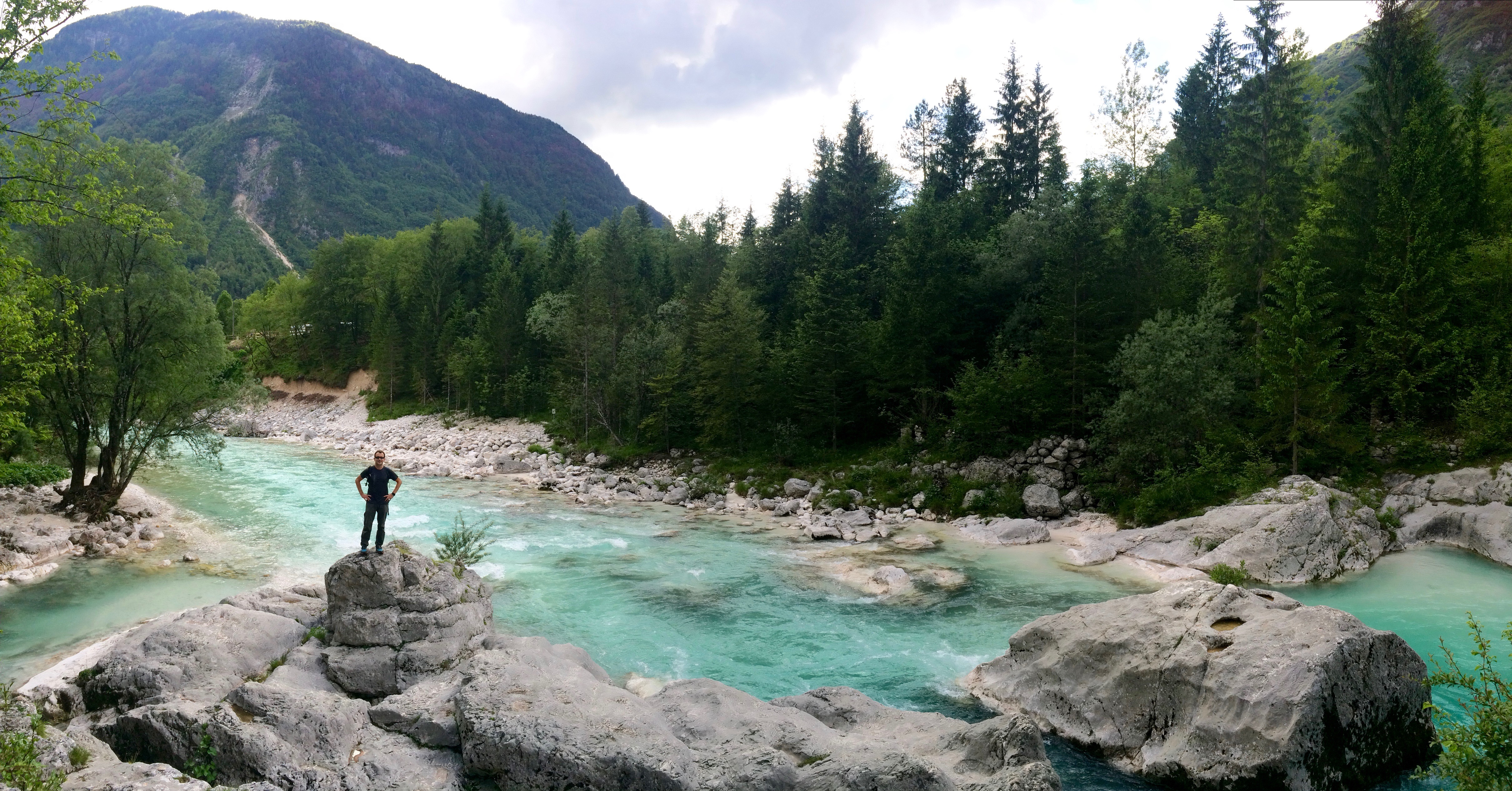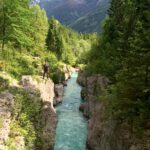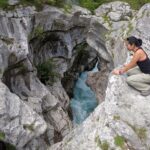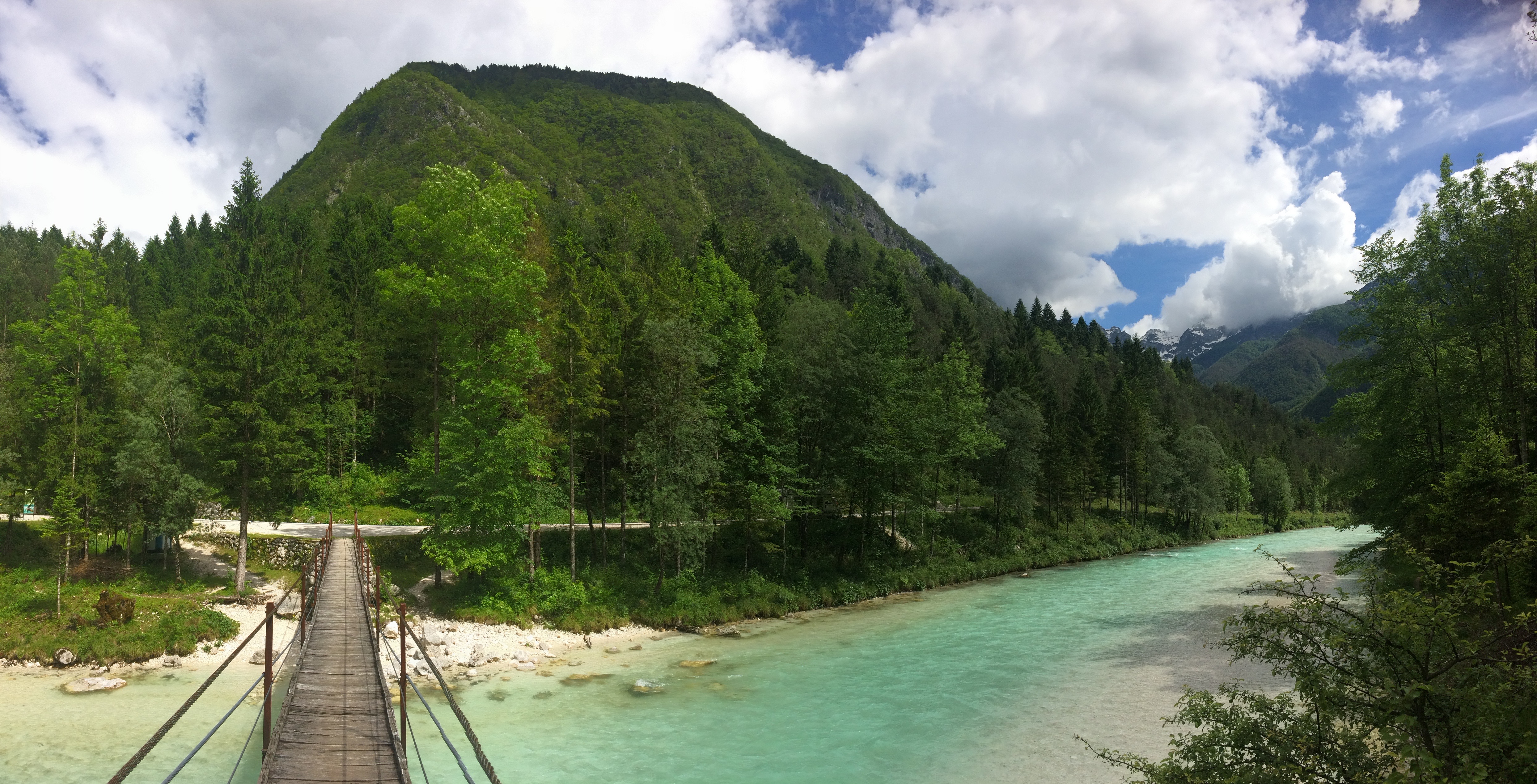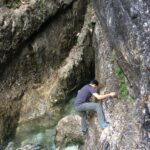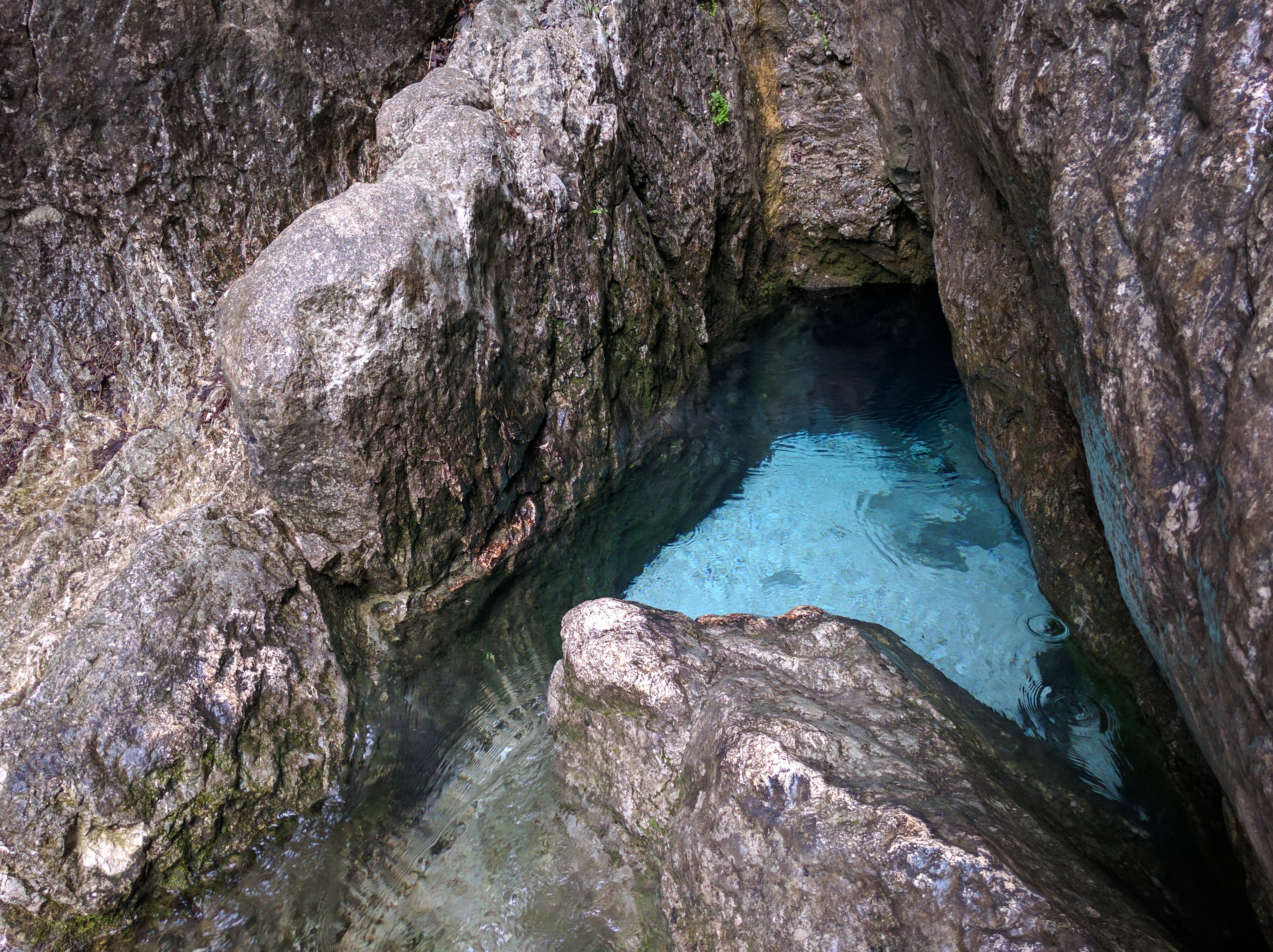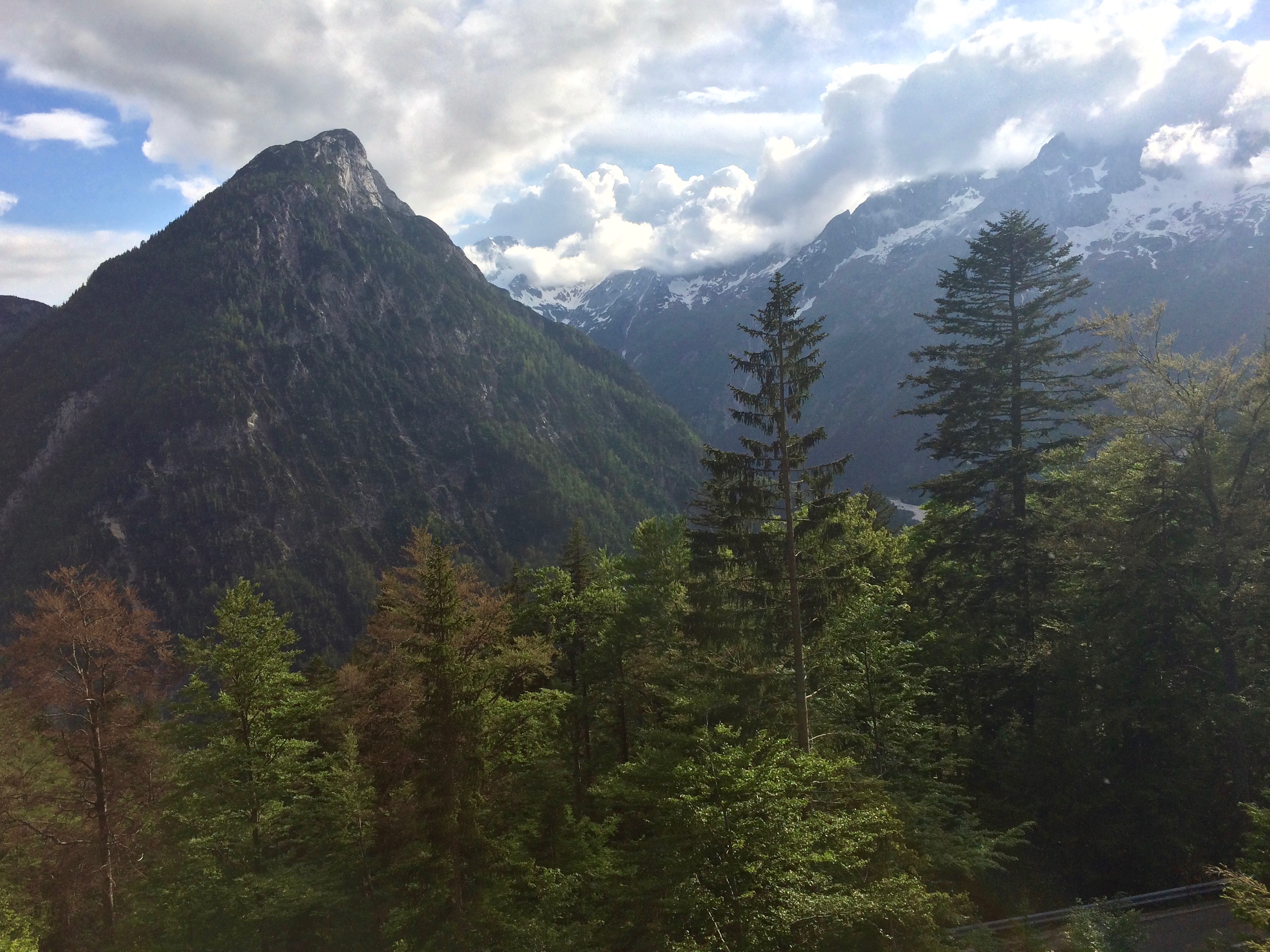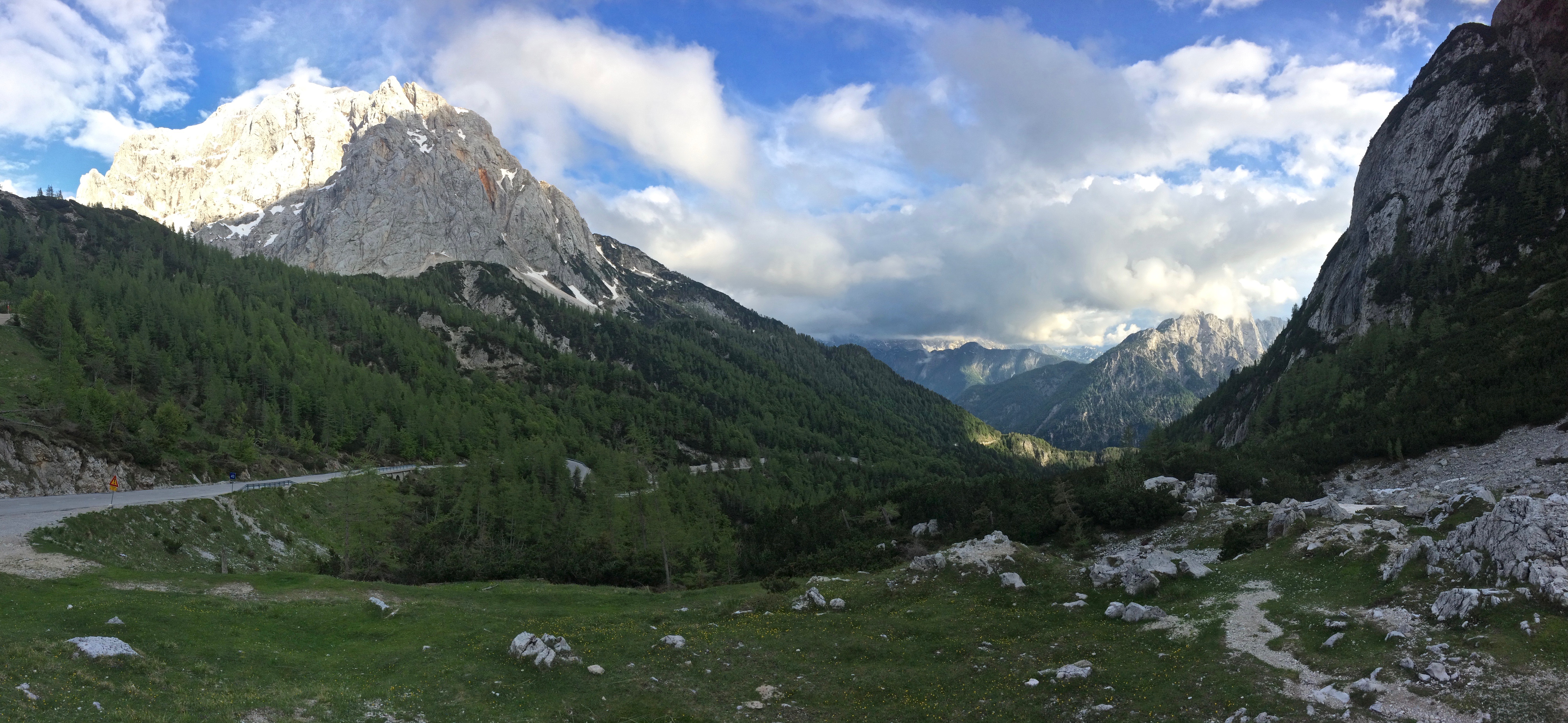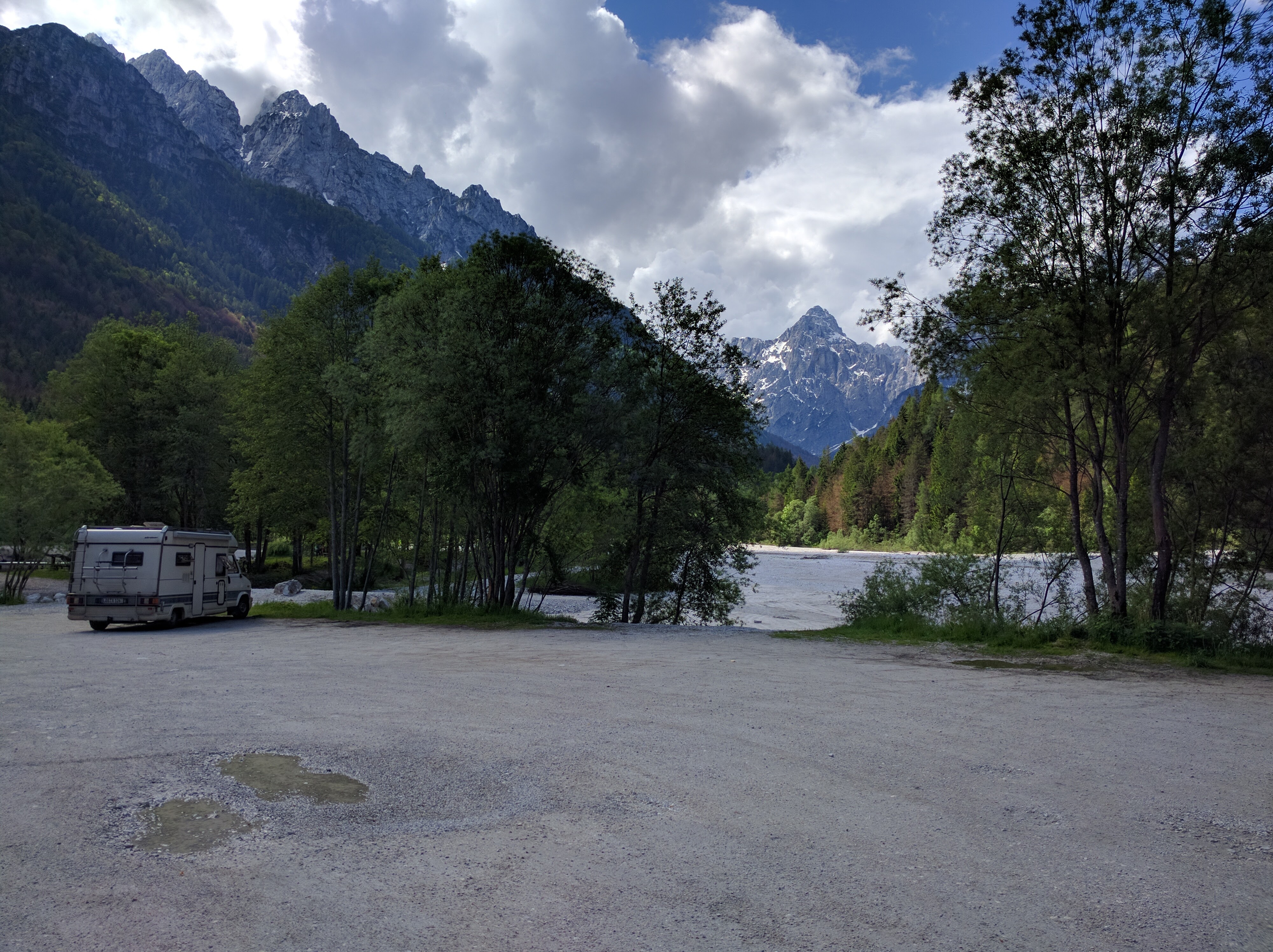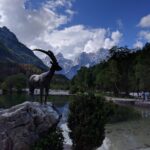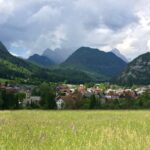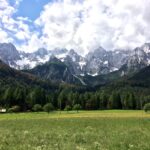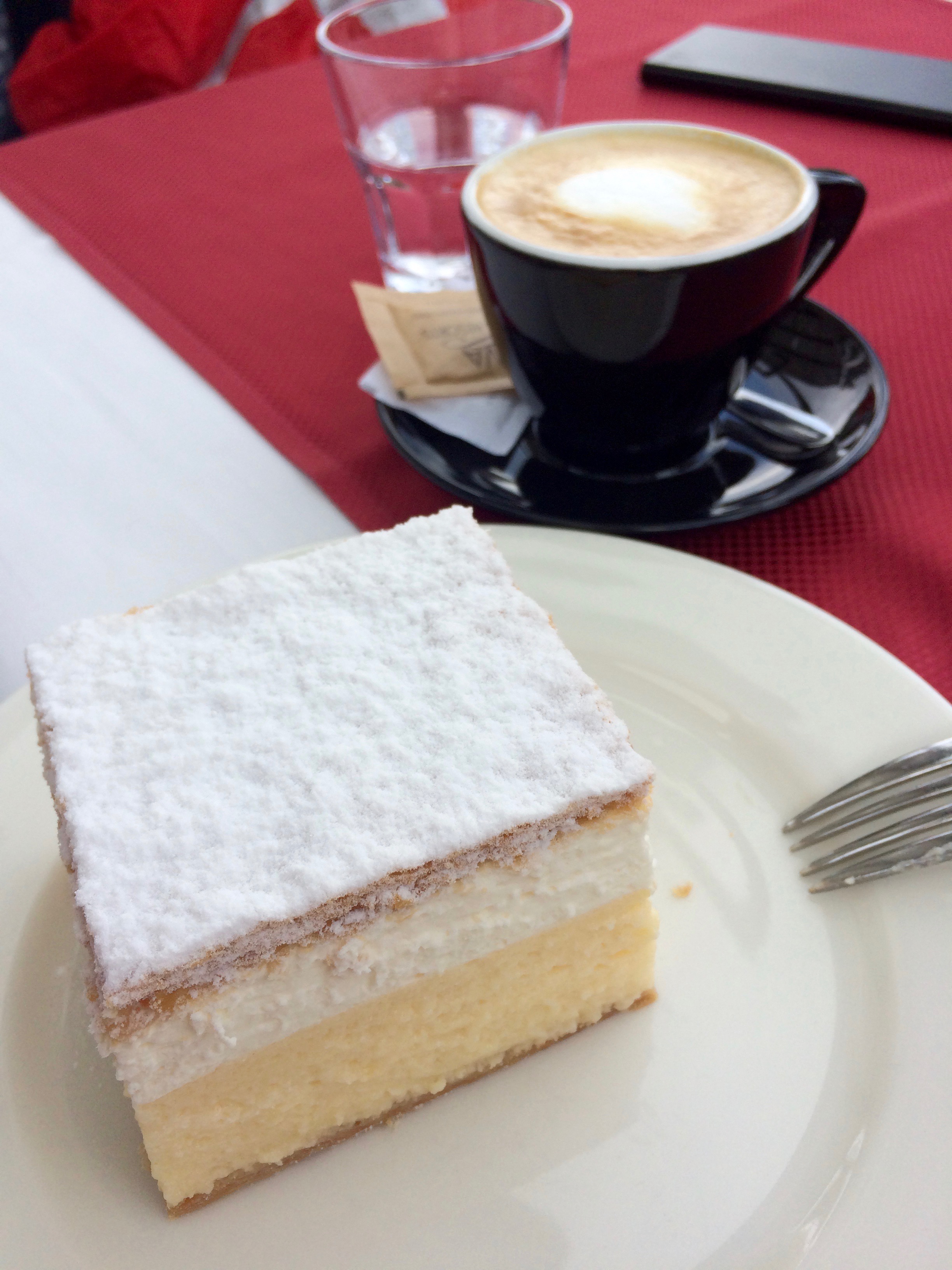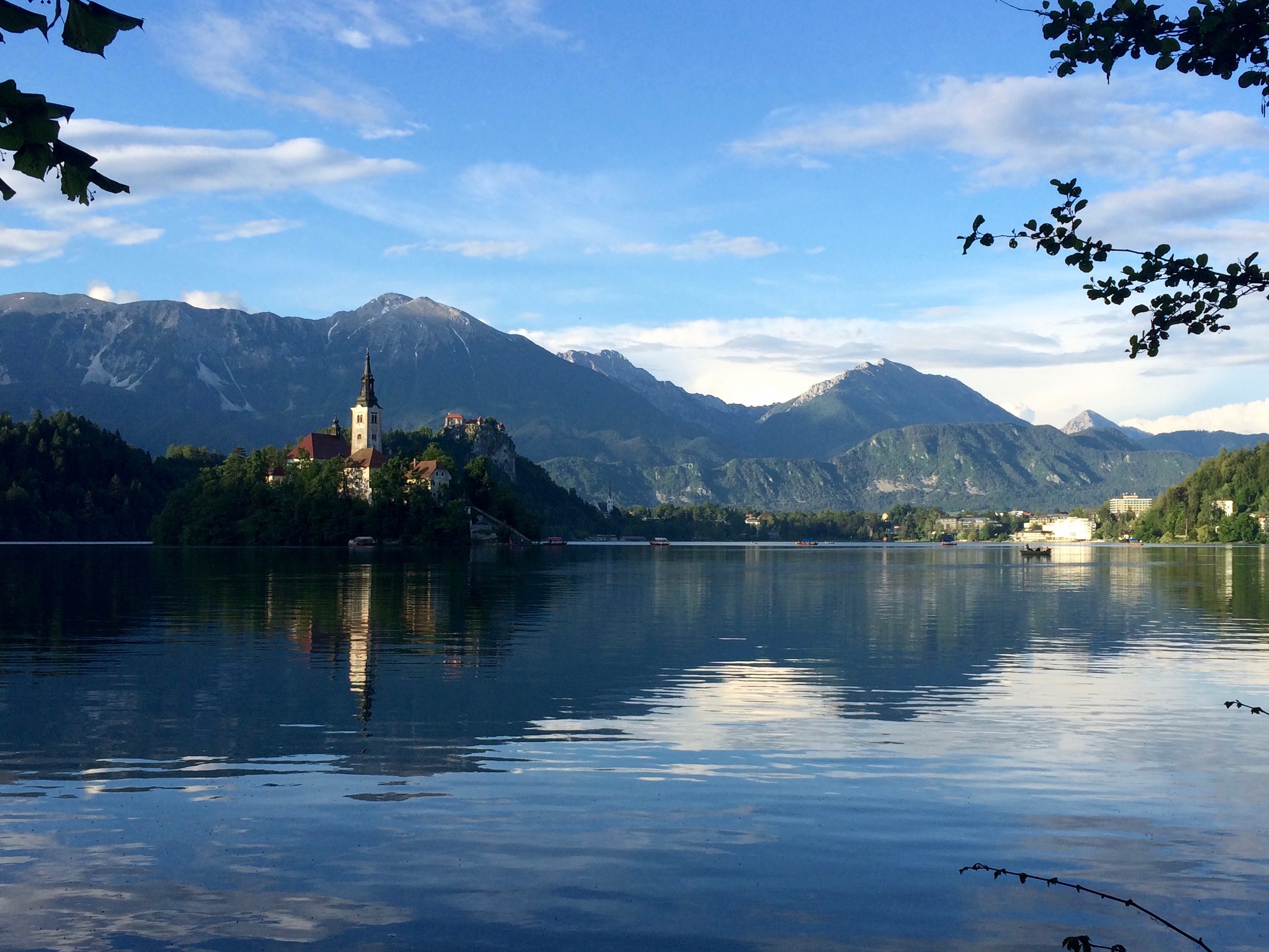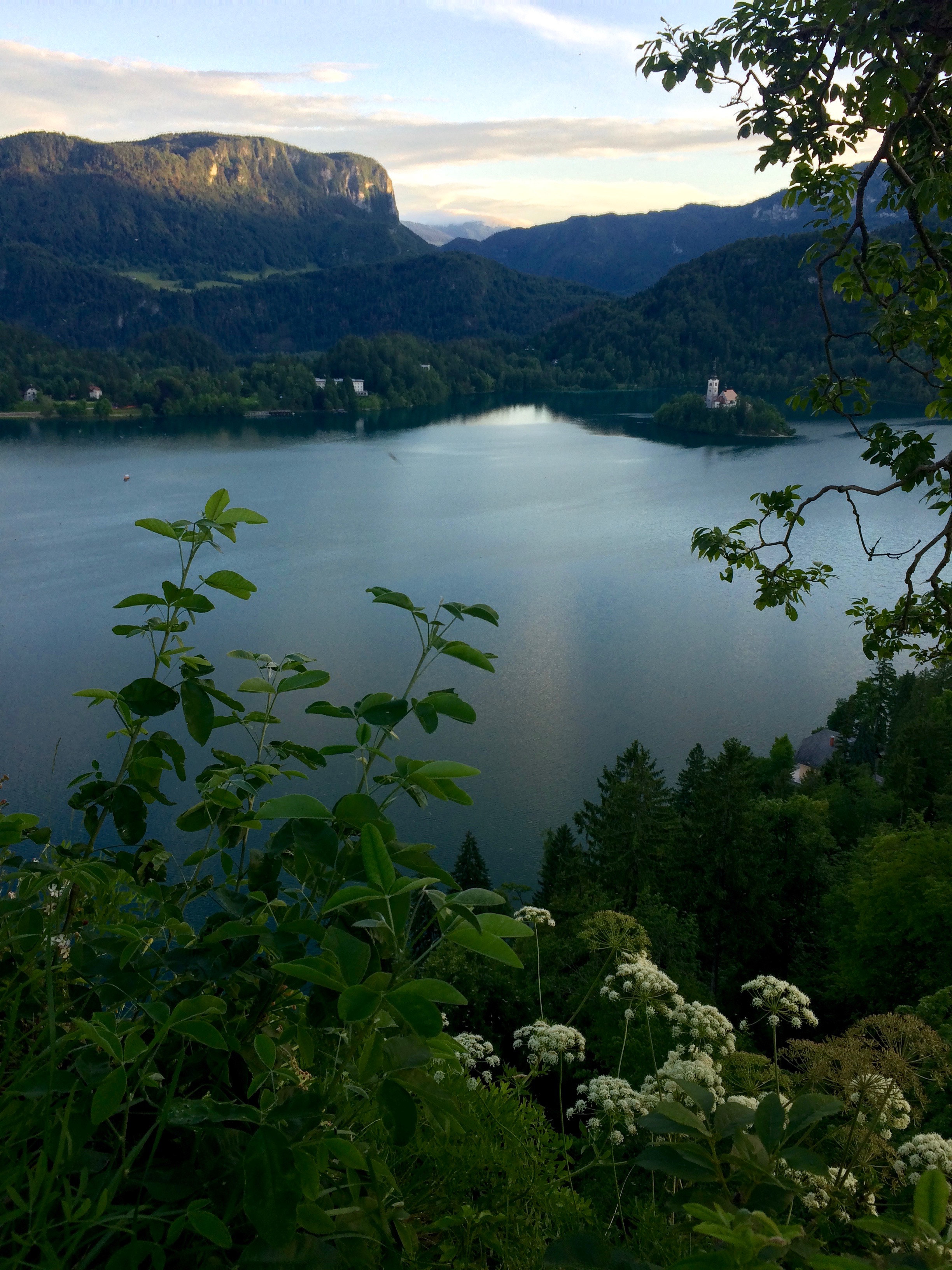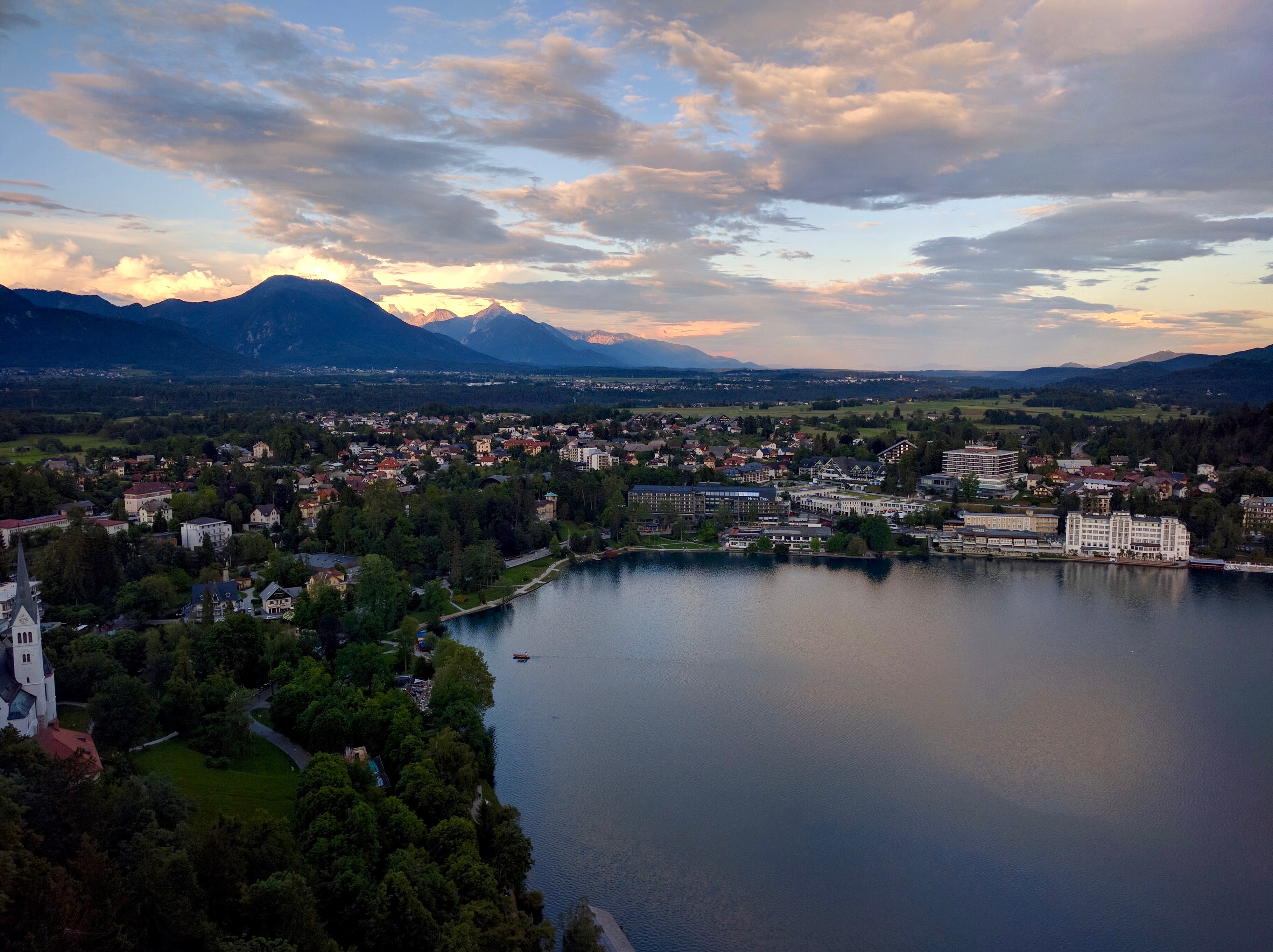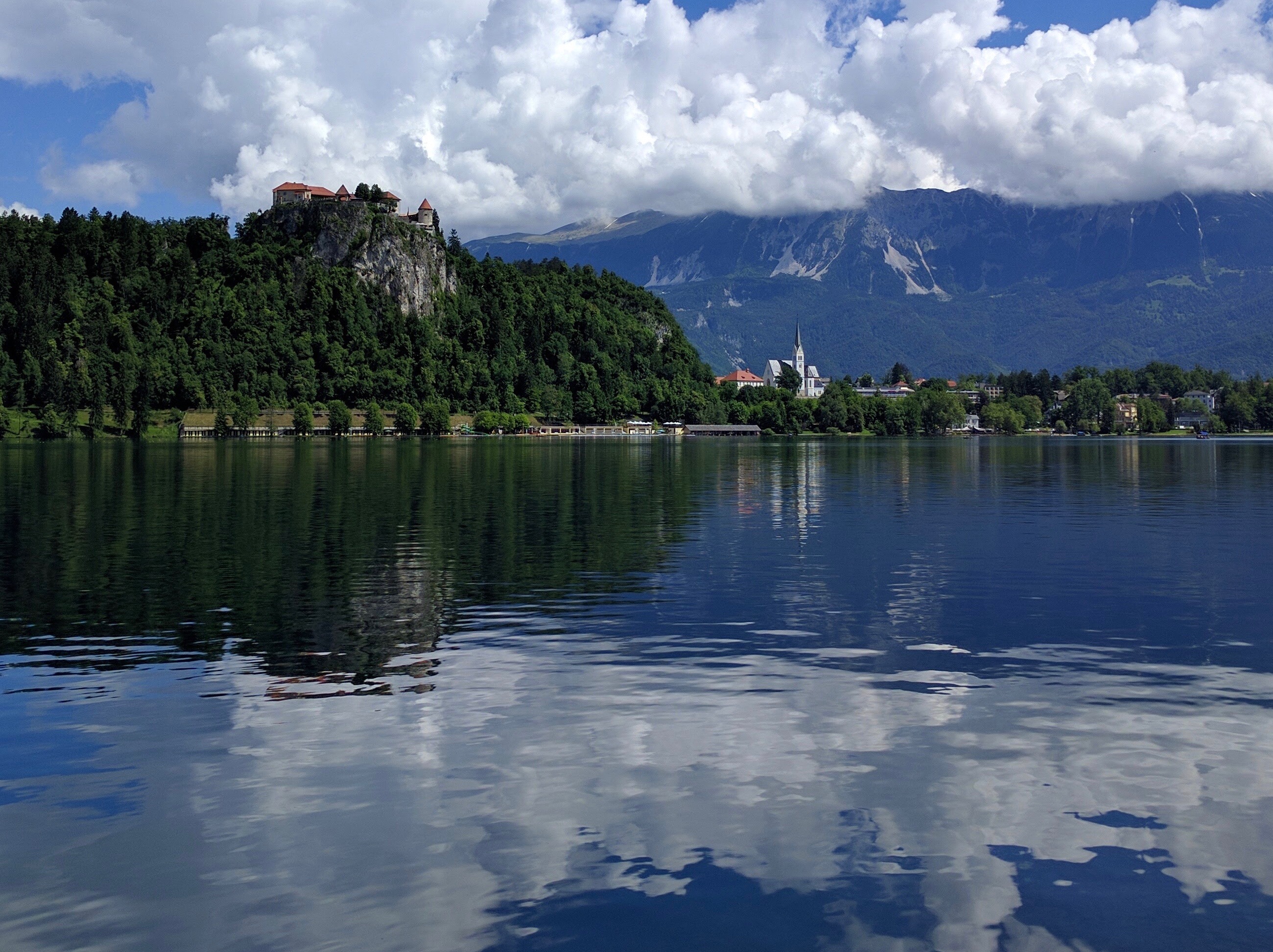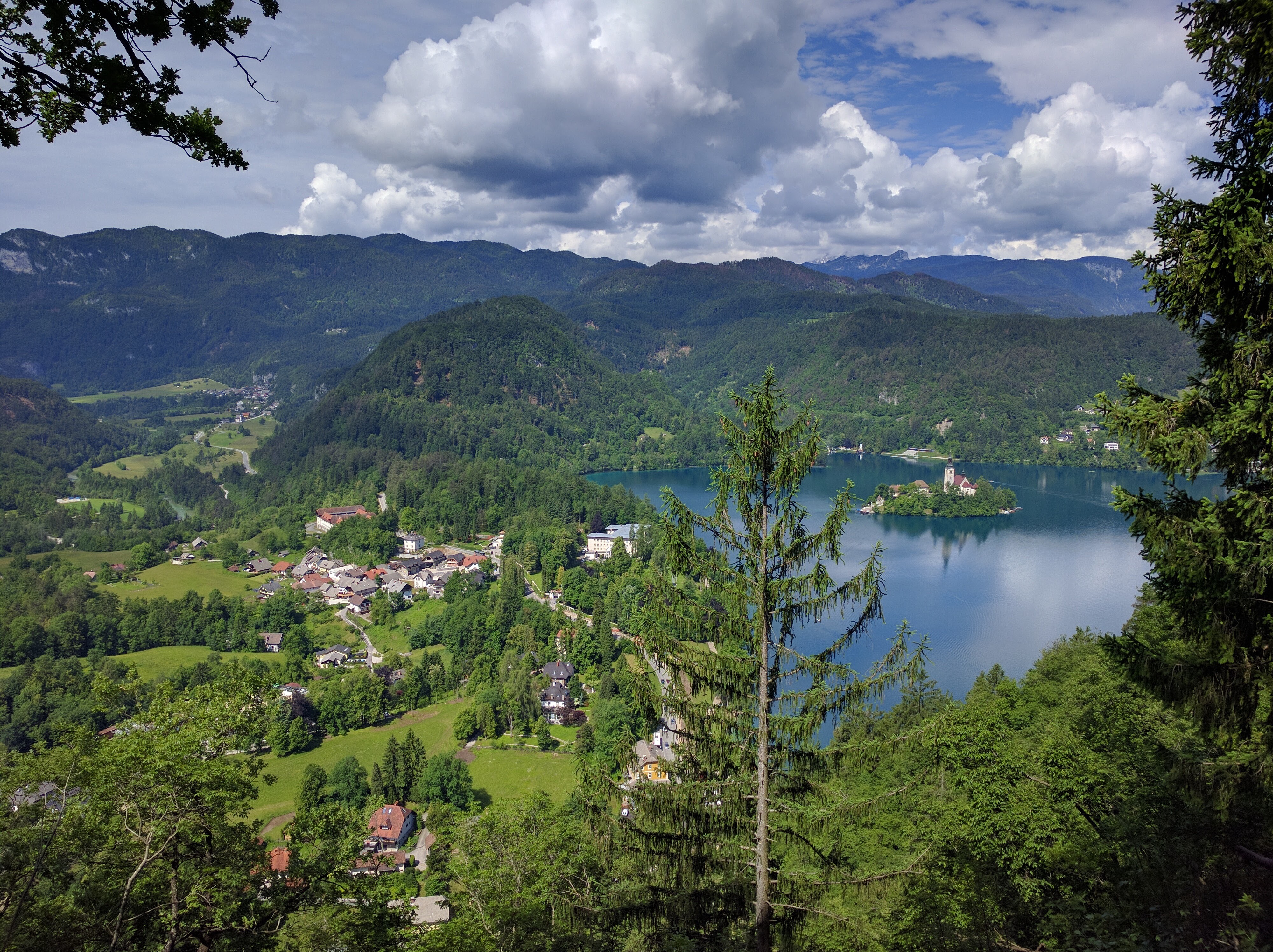When it comes to the Albanian Alps, it’s tough to say what is the highlight—the journey or the destination. Getting there entails a long day of transpotation: Shkoder -> Lake Koman -> Fierze -> Bajram Curri -> Valbona. Most people arrive to the mountains without a hitch. Us, not so much. For that reason, our amusing journey requires a story to be told.
Shkoder, Albania’s northernmost major city, was the start and end point for this journey. Thankfully, Europe’s BEST campsite, Lake Shkodra Resort, was located only a 15-minute drive north of Shkoder. We didn’t have to stay in the eyesore of a city and instead camped along the shore of the beautiful Lake Shkodra for only €14/night for two people with electricity. Best of all, there were hammocks!
Albanian roads have a reputation for being horrendous, preventing us from hauling our old, fat motorhome up the mountains. For the first time during our European road trip, we left our motorhome behind while we set out to ride the Lake Koman ferry and hike the Albanian Alps. We weren’t too worried since it only cost €2/day to park it at the campground—a reminder of how affordable it is to travel in the Balkans.
During the early morning of the start to our adventure we left the campground at 5:45am sharp via taxi for 1,000 Lek ($9) in order to arrive to the Shkoder city center to catch the minibus to Lake Koman. I had asked the receptionist the day before where to catch the minibus, and she pointed on the map and said, “Somewhere on this street.”
Little did I know that was how Albanians figured things out. There was never an exact location or landmark, just near this or that or around there. Like in SE Asia, we just needed to chill out and remember everything always worked out in the end. They definitely did.
Our taxi driver knew we were trying to catch the minibus, so he quickly stopped when he spotted the first minibus parked along the side of the road. It was 6am and the driver and other local passengers were all sitting around at a café. Fortunately one of them spoke English and told us the minibus would leave at 6:30am and it would cost 500 Lek ($4) each. Perfect. Time to relax and have a coffee.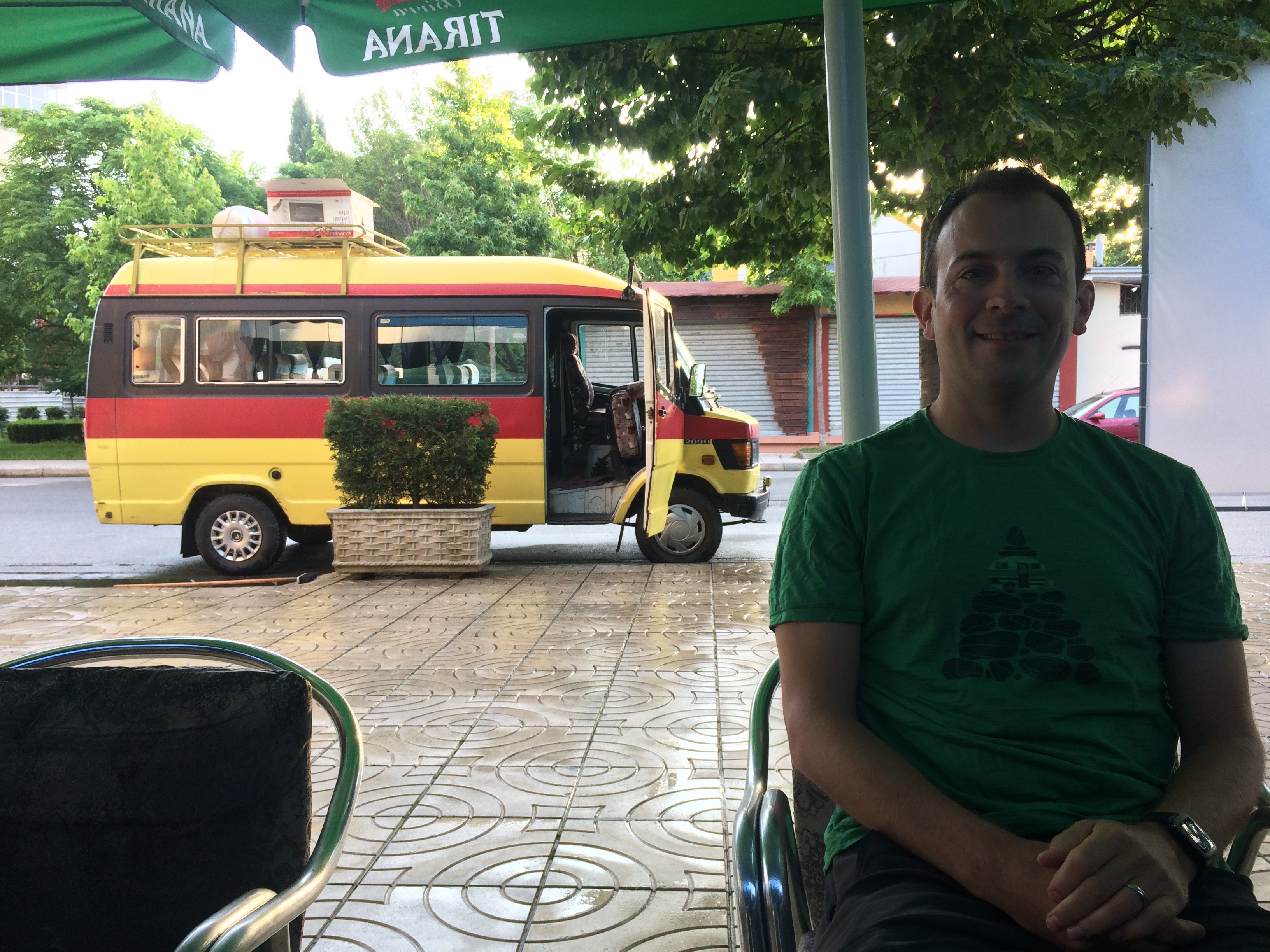
Sure enough, we all soon boarded the minibus and left exactly at 6:30am for Lake Koman. Looking around the minibus, I noticed we were the only tourists. Everyone else were Albanian men, young and old, and I took a particular liking to the older man in the front passenger seat. “Isn’t he the most Albanian-looking man you’ve ever seen?” I asked Chris, and even he agreed.
The road out the city wasn’t too terrible, but the last 12 km or so would have been impossible for our motorhome to pass through: steep, windy, narrow, and filled with potholes. By the time we reached the Lake Koman ferry terminal it was 8:20am. We had plenty of time to kill before all the ferries left at 9am.
“Would you like to ride the ferry?” a nice man asked us immediately after stepping off the taxi. We asked him how much it cost, because I knew the normal rate was 500 Lek per person. “5 euros.” And how much in Lek? “700 Lek.” I told him we’d shop around first and let him know.
Another tourist told me that she was planning to take the passenger-only ferry, which would cost 500 Lek pp. There were dozens of other passengers, tourists, and locals with their packages, all waiting for the passenger-only ferry. It was only the car ferry that cost 700 Lek. Hoping for a more authentic experience, I opted for the cheaper, passenger-only ferry. We soon regretted that decision.
Exactly at 9am, two car ferries set off to Fierze. We watched nervously as the car ferry, along with numerous tourists willing to pay the extra 200 Lek ($1.50), disappeared from sight. I thought all ferries, car and passenger-only, left at 9am. The passenger-only ferry hadn’t even arrived yet. We kept telling ourselves to remain calm because there were still plenty of locals waiting patiently without biting their nails. 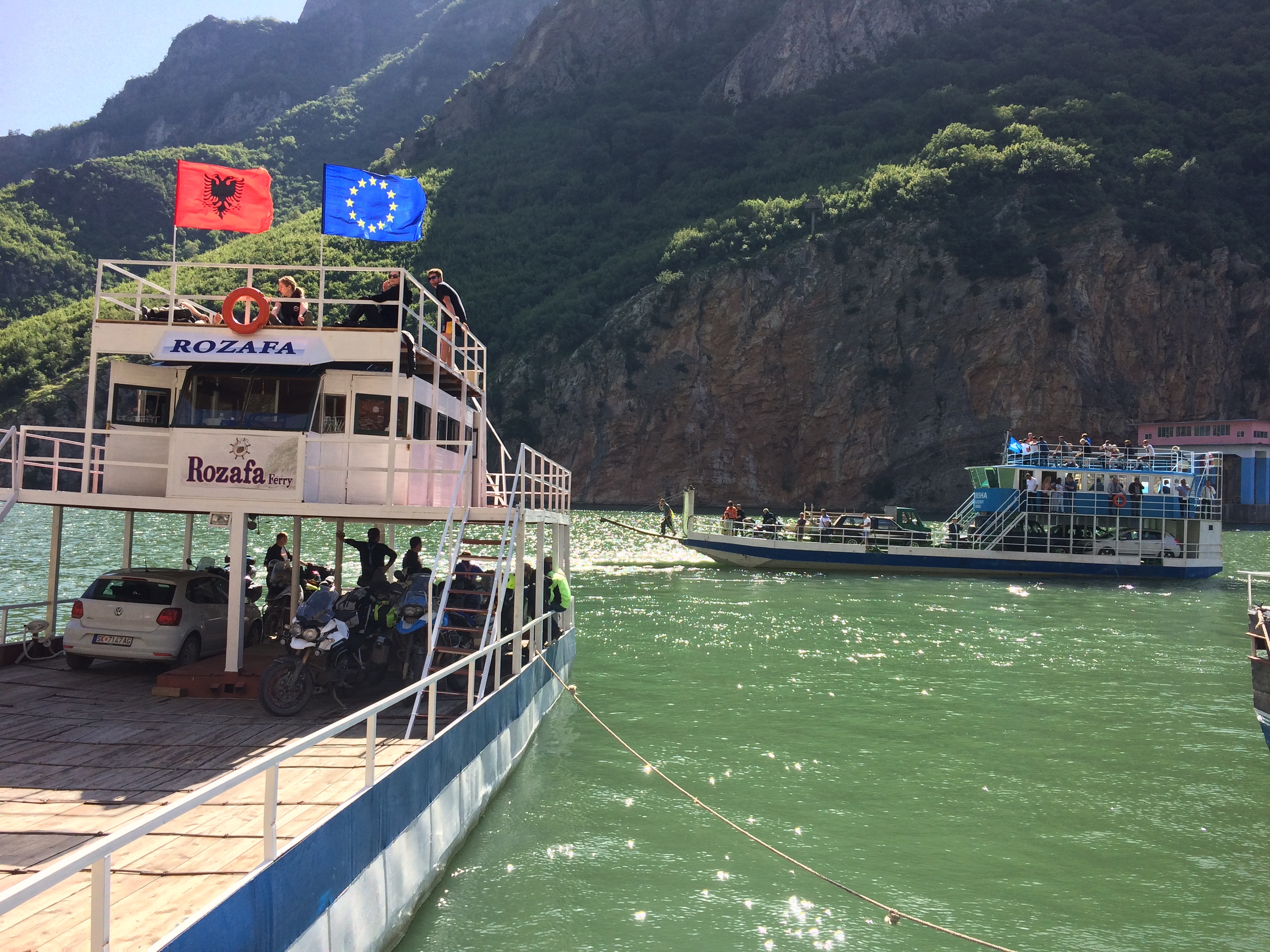
10am came by and the locals slowly began to fidget. Even one Albanian girl told us, “Maybe it is broken. Another bigger ferry will come at midday.” That got me nervous because I knew there was a bus I needed to catch from Fierze to the final destination of Valbona. If we missed this bus, I knew we’d have to hitchhike. And Albanian drivers were notoriously crazy. All this to save $1.50 each.
A German woman in her 40’s with her 5-year-old daughter asked me where I was going. I told her Valbona. “Oh, I’m glad there is someone else going to Valbona,” she smiled, clearly relieved. “Maybe we can share a taxi together.” I didn’t say anything.
Soon the locals heaved a sigh of relief as they saw their beloved passenger ferry come into view. Even we were relieved. I sure hoped we’d make it to Valbona.
Then the passenger ferry, or should I say bus-boat, arrived. It was literally a bus boat. Like an actual bus, but somehow reconstructed into a barge.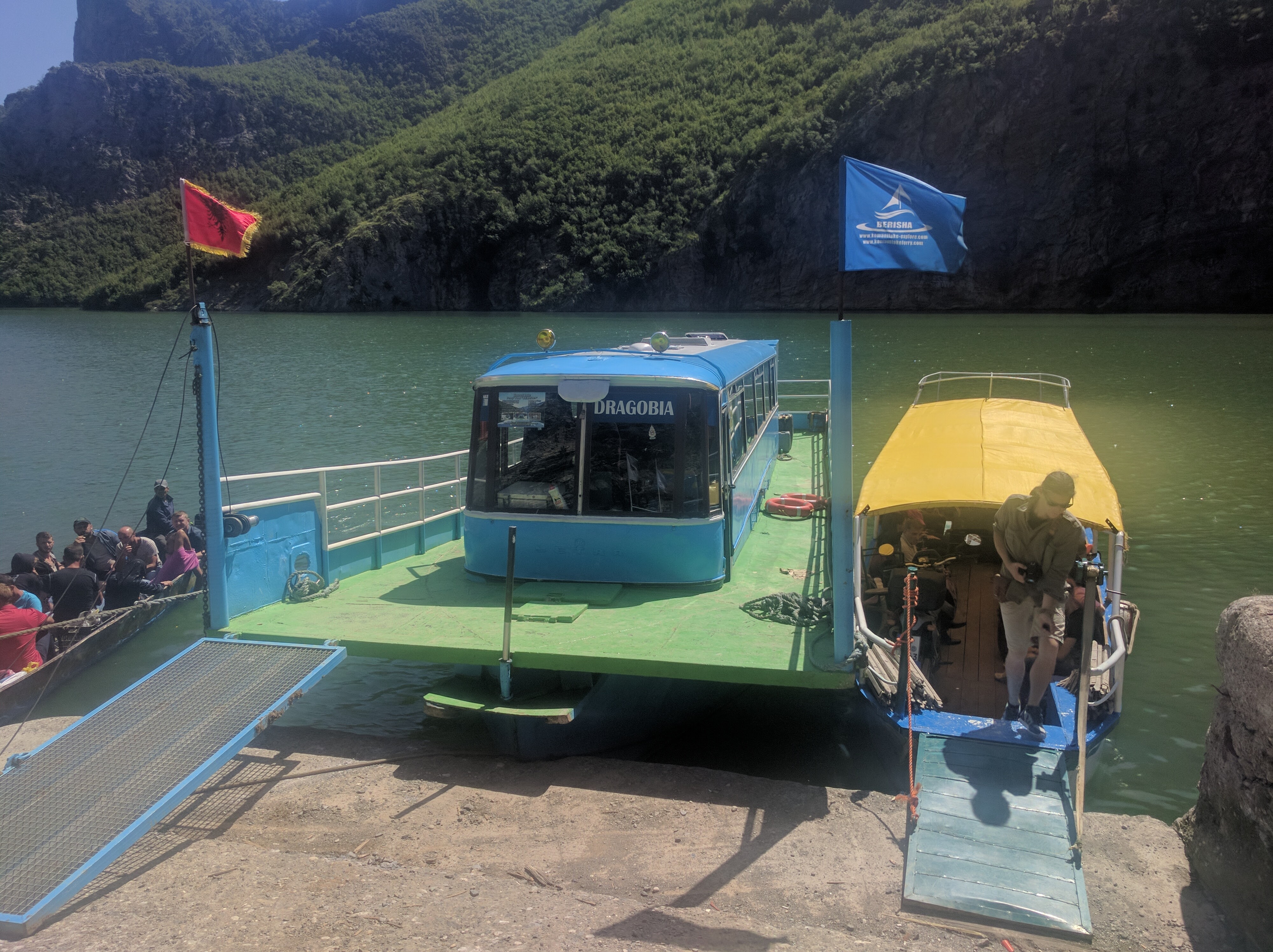
One by one, we boarded the bus boat. Each person took a seat. Packages, bags, and other cargo were loaded onto the bus boat. Within 10 minutes a man shouted in Albanian and everyone begrudgingly unloaded and disembarked the bus boat. What was going on? It didn’t take long to discover that the bus boat was broken and all passengers were now being divided into two different boats: one boat direct to Fierze, and another boat to all the random villages between.
Finally, at 10:25am, about 1.5 hours past our departure time for a 3-hour ferry ride, our crappy little boat set off down the lake. We occupied the rear seats right next to the tiny, deafening engine that reeked of gas fumes, vibrated our seats like a cheap chair massage, and heated the wooden planks beneath and around us that could have melted the soles of our shoes. On top of that, our cushioned seats were wet, soaking who-knows-what into our pants. And this was apparently one of Europe’s greatest ferry rides.
Once I reached my limit of discomfort, I moved to the front of the boat to avoid the noise, vibration, and heat. By that point we were halfway through the ferry ride. The slow gliding across the lake was scenic and pleasant, but another tourist read my mind when she said, “This is nice to do just once.”
The other ferry that stopped into the villages tucked away in the mountains: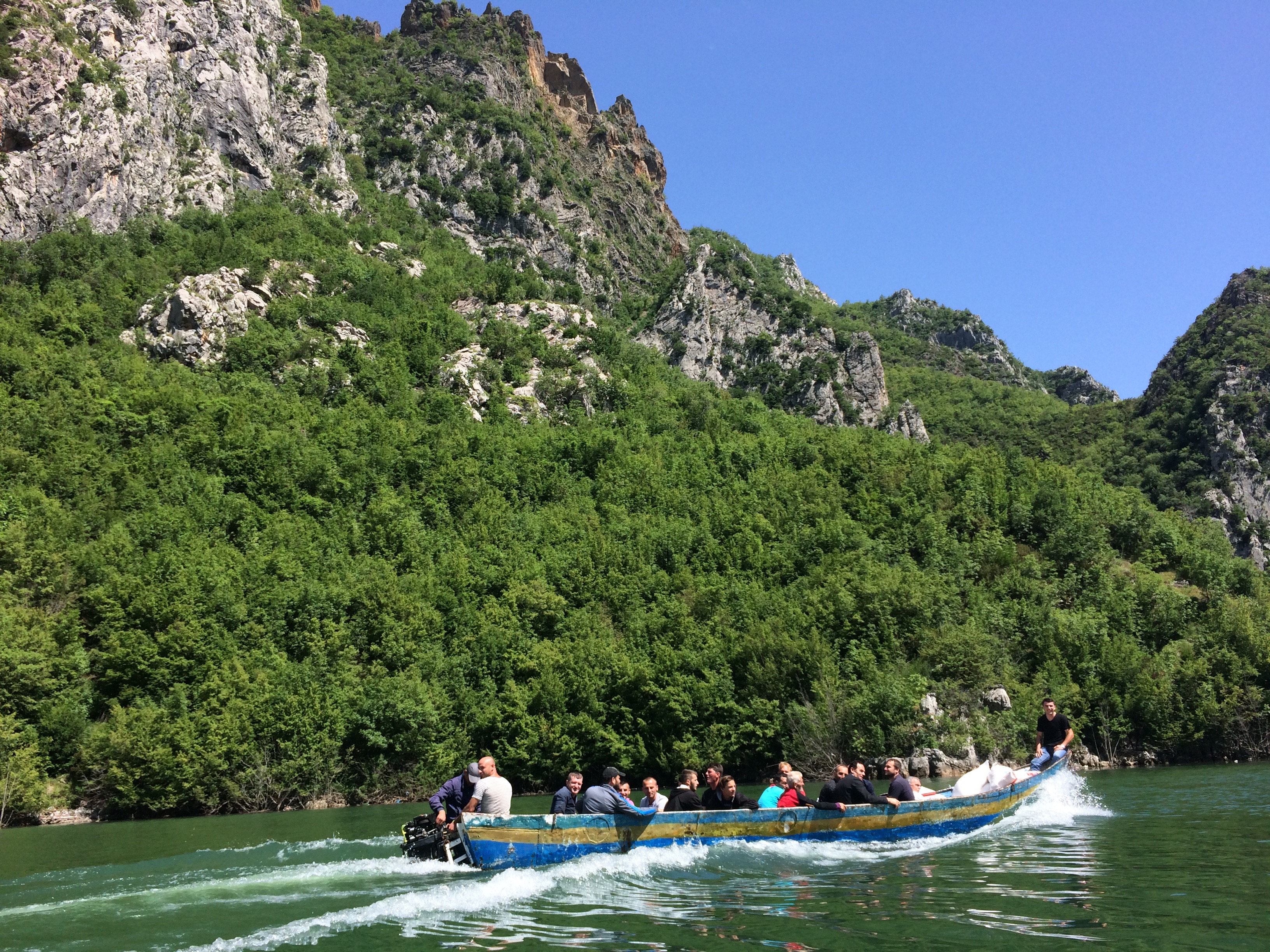
We reached Fierze at 1:30pm, almost exactly 3 hours from the time we departed. Naturally there were no more mini buses to Valbona, or even to the next major town of Bajram Curri. Damn that bus boat.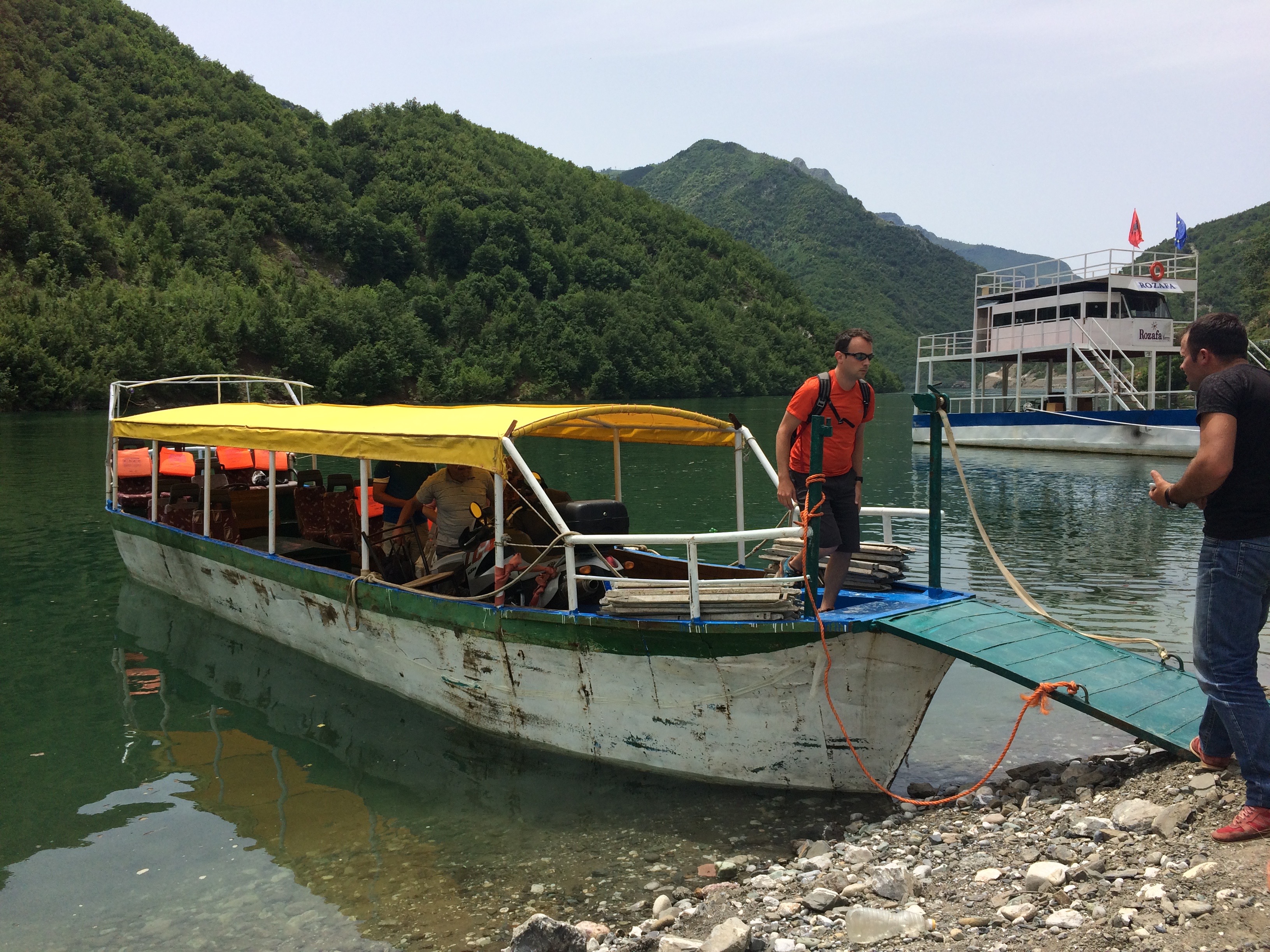
Chris, the German woman, her daughter, and I walked to the nearby bar/café for a quick break and logistics review. The barman called a taxi for us, but when the driver came, he demanded 1,500 Lek ($10) for the whole car to Bajram Curri. Knowing that it typically costs 500 Lek per person for the mini bus from Fierze all the way to Valbona, we didn’t want to pay 500 Lek each just for Bajram Curri. We declined and I went to the bathroom.
When I came back out, I saw Chris alone, and the German woman and her daughter walking ahead on the road. Apparently the barman told the woman that there were no more buses to Bajram Curri or Valbona. “There are no more buses,” she told Chris and urged, “so that means we have to take the taxi.”
“I don’t know what you’re planning to do, but we’re not paying that man’s prices,” Chris replied.
“Okay, I guess we’ll go to the road and see if we can find a ride,” she said. She got a head start on the road, and that was when I returned.
The German woman and her daughter walked up a steep flight of stairs to the main road, while Chris and I walked on the small adjacent road that merged with the main road. Within minutes of her parting ways with us, I heard a car approaching us from behind. We stuck out our thumbs, the car pulled over for us, and we hopped in. Because the woman walked in another direction, she was nowhere to be seen. We weren’t going to ask a non-English speaking driver to wait for another hitchhiker and her kid. “Let’s get the hell out of here,” I said.
We got to Bajram Curri alive, but the driver was a nut. He was a father in his early 40’s, and his young son sat in the passenger’s seat without wearing a seatbelt. With his Albanian folk music blasted, he screeched through every hairpin turn, swerving around local cyclists, laughing hysterically, and honking his horn the entire way to let everyone know he was tearing down the road. Every once in a while he’d shout some indiscernible word over his shoulder, expecting some sort of reaction from us. We’d repeat whatever word it was and laugh back, but Chris and I would look at each other with a WTF? look in our eyes. Obviously, we made it to Bajram Curri in no time, shook hands with the crazy driver, thanked him, and watched him speed off.
Now. Where was that bus to Valbona? It was 2:15pm and I had read online that the only bus from Bajram Curri to Valbona departed at 2:30pm. We asked a man for the whereabouts of the Valbona minibus and he pointed down the street in the opposite direction. Cool.
As we walked in that direction, a minibus full of passengers slowly drove past us. As it passed us, I shouted, “Valbona?!” The driver stopped, shouted some Albanian I did not understand, and used a bunch of hand gestures. “Yeah, okay, cool!” We continued to walk in the same direction.
A few minutes later, that same minibus full of people returned. The driver had actually turned around to get us. He shouted out the window, beckoned us to come to his vehicle, and exclaimed, “Valbona!”
“Wait, seriously?”
He again confirmed Valbona. Fuck it, let’s go!
Chris opened the side door, only to be welcomed by several generations of an Albanian family—grandparents, adults, teenagers, and children—and bags of produce all over the floor. We both hopped in, but having nowhere to sit, I stood gingerly over all the produce. The driver directed me to the passenger seat, so I hopped back out of the minibus and into the passenger seat, next to his daughter. With the entire family grinning from ear to ear, the driver took off.
One teenage boy in the back knew some English, so he and Chris began a simple conversation. Chris even threw in some French, and the driver spoke the very few French words he knew. Laughing, I asked, “Ingles? Frances? Espanol?” Delighted, the girl sitting next gasped, “Espanol?” Turned out we shared one common language: Spanish. We began talking about our families, asking questions, our whereabouts, our time in Albania, etc. Just as I was starting to get comfortable with my new Albanian friends, the driver stopped. He pointed at another minibus and said, “Valbona!”
OOOHHH. He was giving us a ride to the right location! Slightly disappointed, we thanked him and his family profusely, hopped off his minibus, and waved goodbye.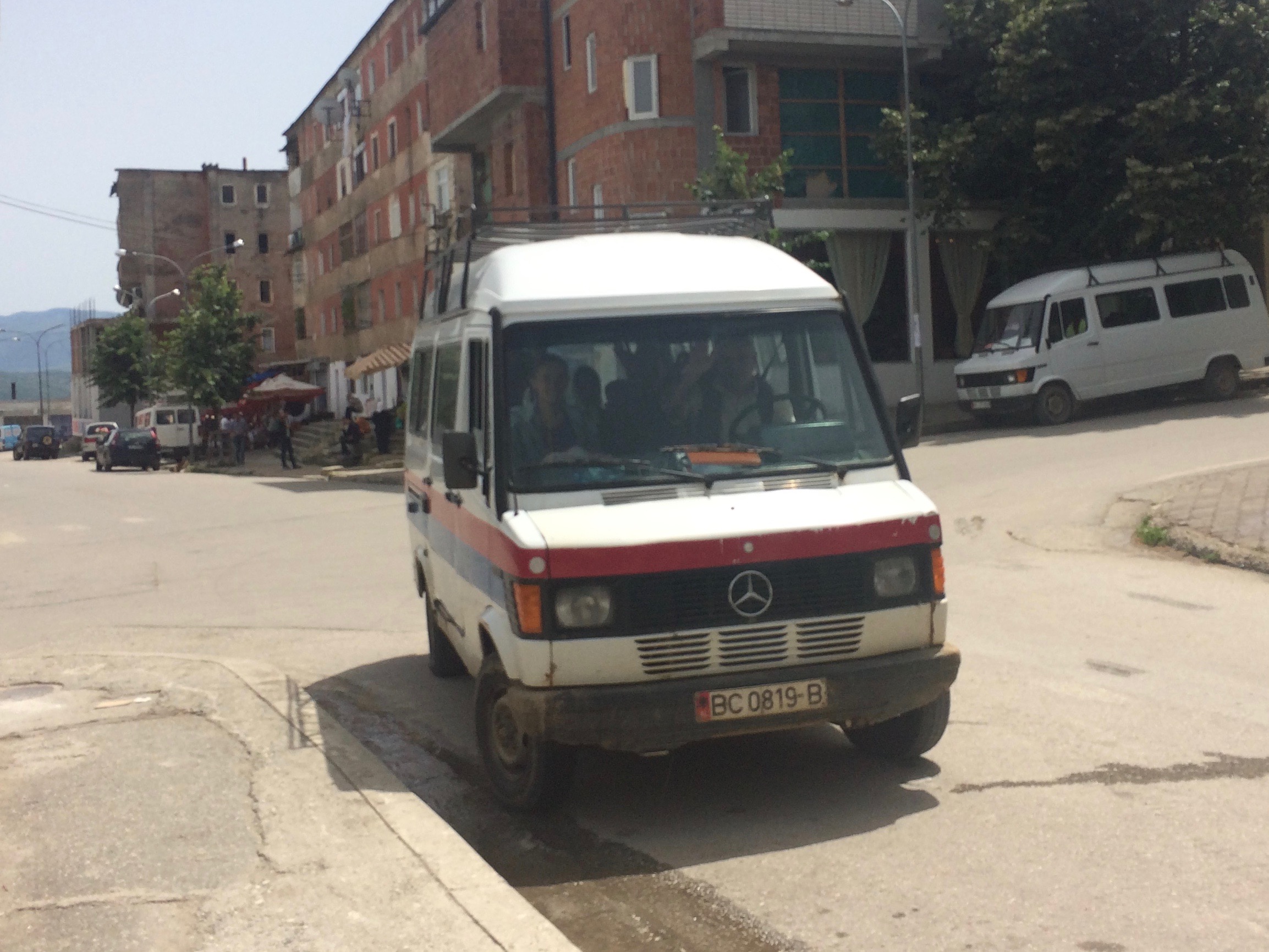
We were seated in the minibus at 2:25pm, and at exactly 2:30pm the bus left Bajram Curri for Valbona. This was our final mode of transportation for the day after a full day of taxi, minibus, ferry, and hitchhike since 5:45am.
As expected, the road was windy and narrow. The driver made several stops along the way to Valbona, dropping off passengers and supplies. A carsick boy even puked all over a large bag. We were amused.
I knew I wanted to stay at Guesthouse Kon Gjoni based on its incredible reviews, but before I could tell the driver where to drop us off, he pulled into the yard of Kon Gjoni. I spotted the man of the guesthouse from the minibus. “Dude, that Albanian man is adorable!” I squealed to Chris.
“Jean, that’s the same man from the minibus this morning that you said looked like the most Albanian man ever.”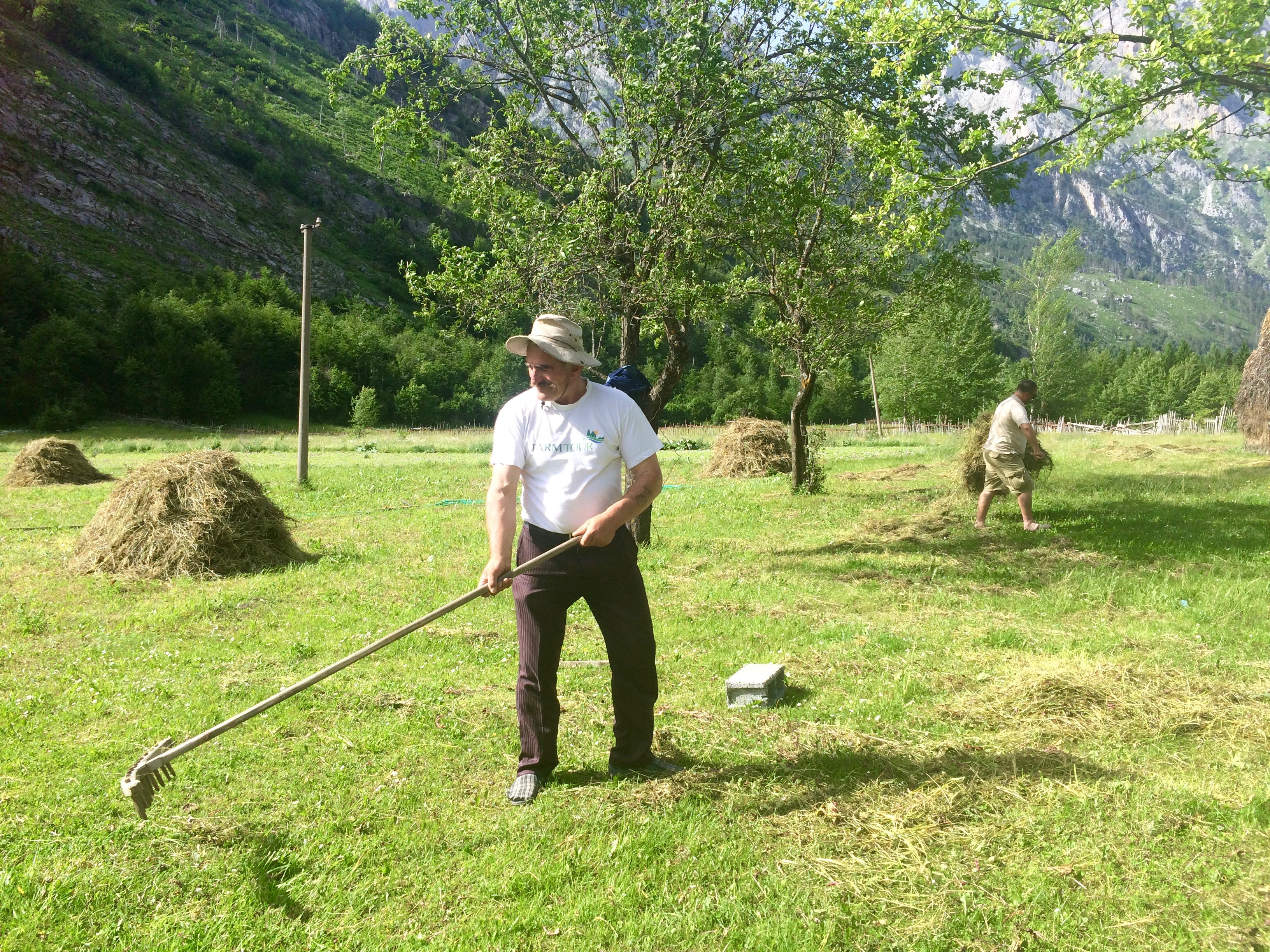
Well shit. Had we followed him the whole way we would’ve arrived here waaaay earlier. We hopped off the minibus, smiled, and waved. He recognized us immediately and waved back. Then the minibus driver delivered him his goods, including the large bag the boy puked on. We paid the driver 300 Lek ($2.50) each and excitedly scurried into the guesthouse.
A wave of relief and excitement washed over me. We made it. We made it to Valbona. It took 9 hours and a taxi, a minibus, a broken bus boat, a shitty boat, a hitchhike, and a minibus ride to the correct minibus, but we finally freakin’ made it. Not only were we relieved, we fell in love with the guesthouse immediately. It was gorgeous. Albanian country mountainside at its finest. And it was €20 per person per night, which included a traditional Albanian dinner, breakfast, and a sack lunch for the hike.
To end the journey, a new guest arrived shortly before dinner in a taxi. With a huge smile, he approached us, asking, “Are there any other tourists here?”
“Yes, there are a few,” Chris answered.
“Great. Was one of them a woman with a little girl?”
“Um…”
***
The uncomfortably hot afternoons of Albanian June gave us the desire to set off early the next morning for the hike from Valbona to Theth. Once we devoured our plentiful breakfast and finished preparing our picnic lunches, we set out for the day’s hike. I don’t know why so many resources claim that the hike is easy because it was definitely a calf burner.
At first we got the impression that the hike would be easy as we followed the river up the flat valley.
But then came the climb up to Valbona Pass. Had it not been for the climbing, we wouldn’t have been able to witness the mountain’s spectacular panoramic views. Every step closer to the summit forced me to stop not to catch my breath but to soak in the scenery.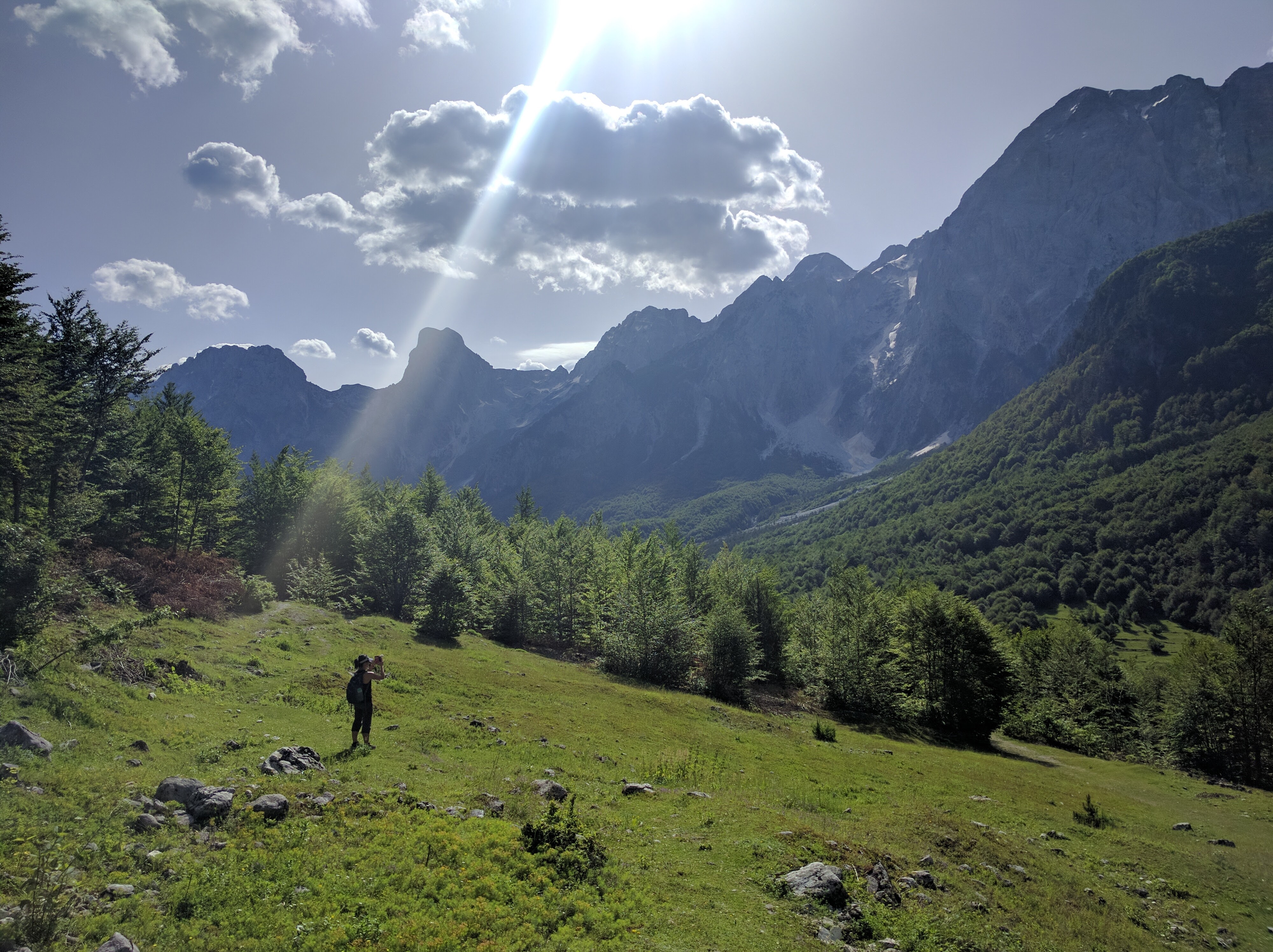
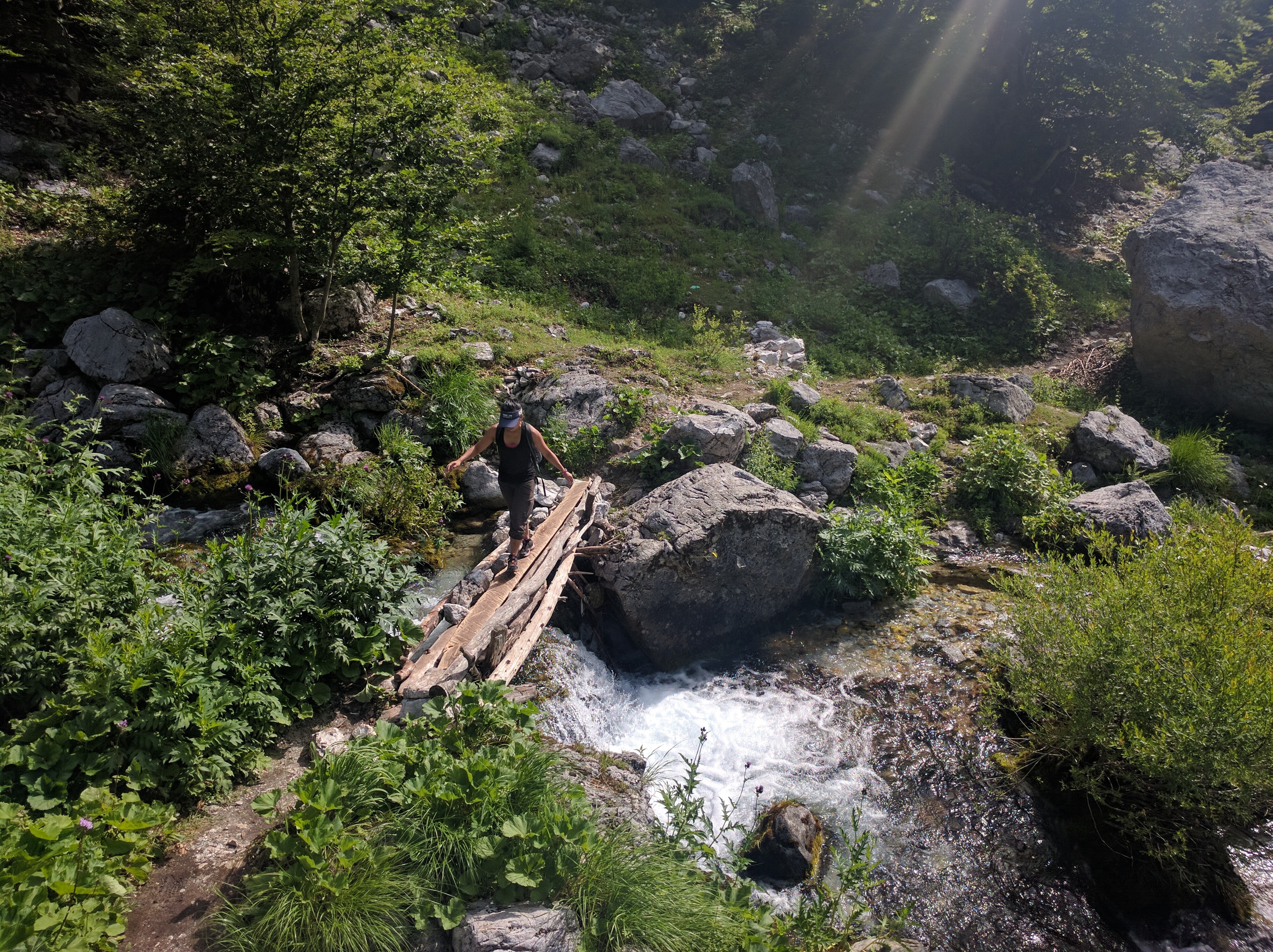

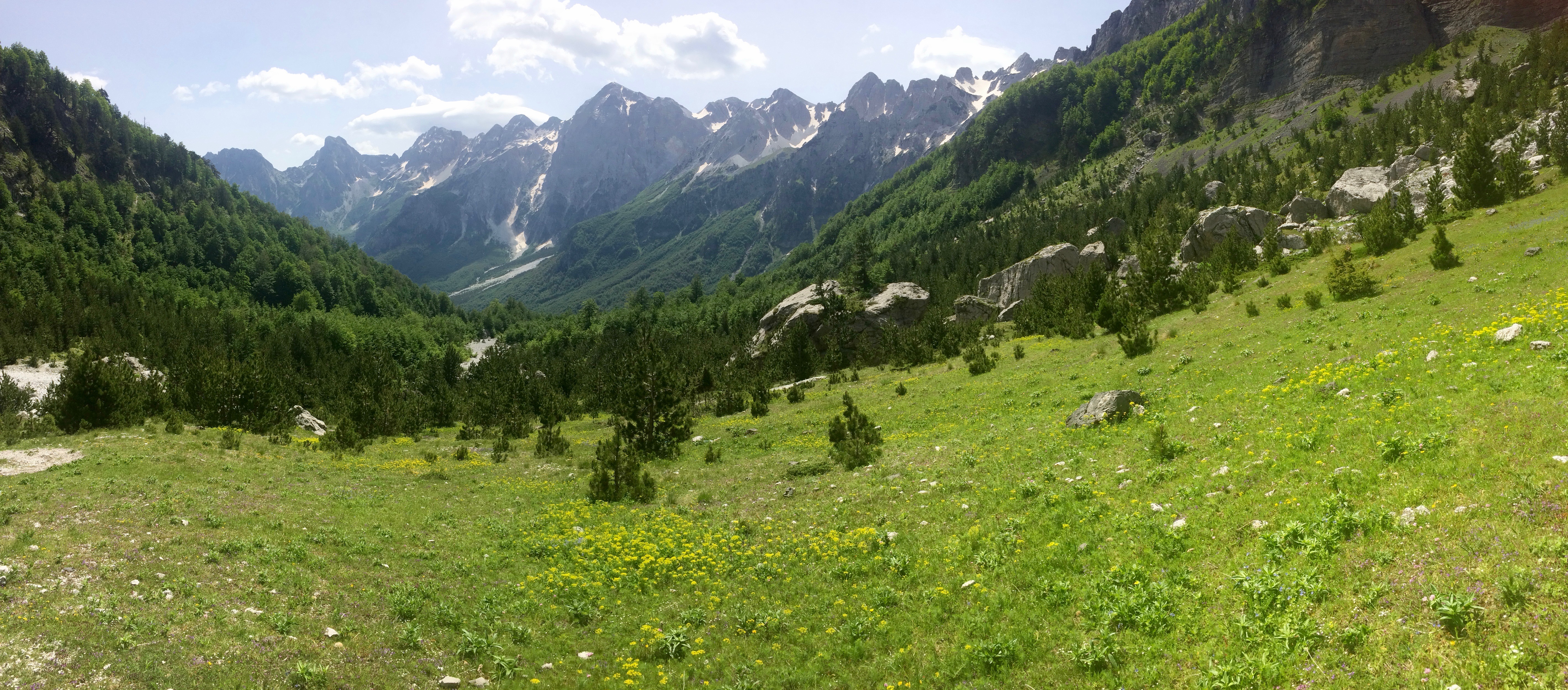

Unsurprisingly, the top of Valbona Pass was a wind tunnel.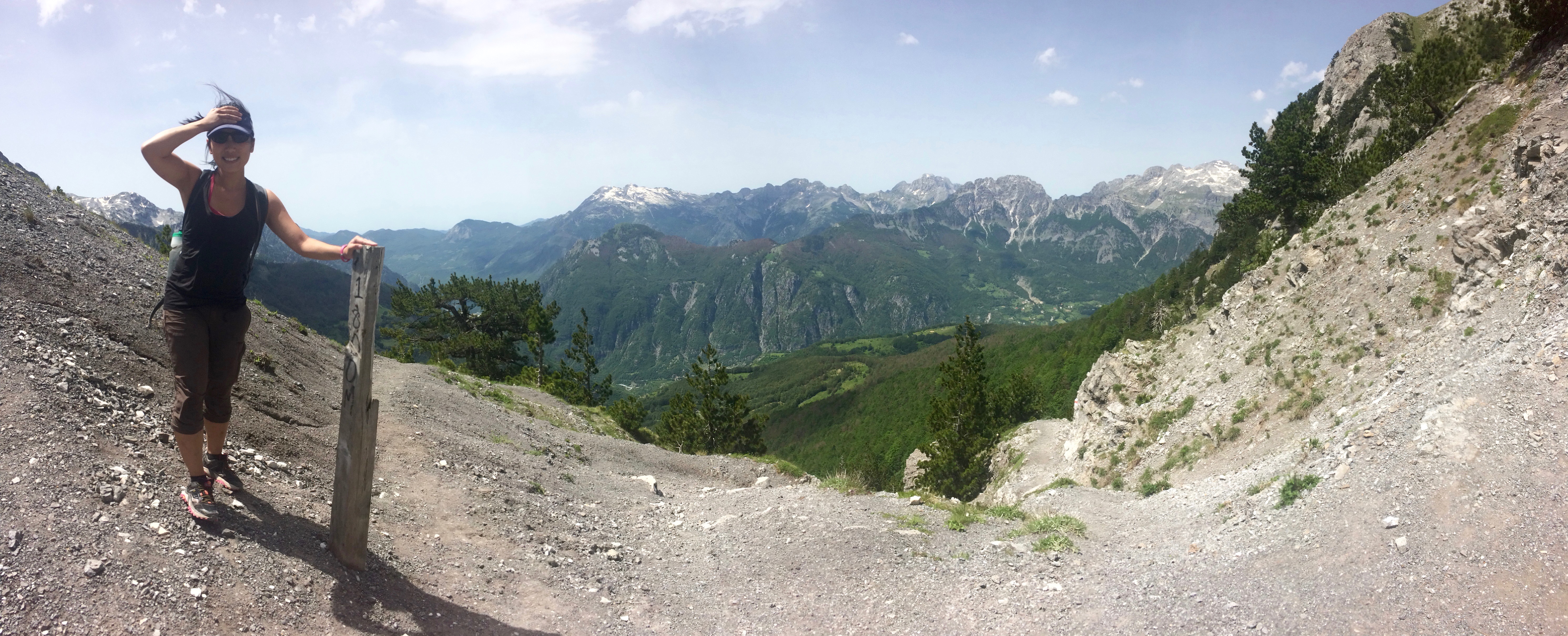
Then came the long, steep, painful descent into the town of Theth. While this side of the path was still beautiful, its mountains were not as dramatic as the Valbona side.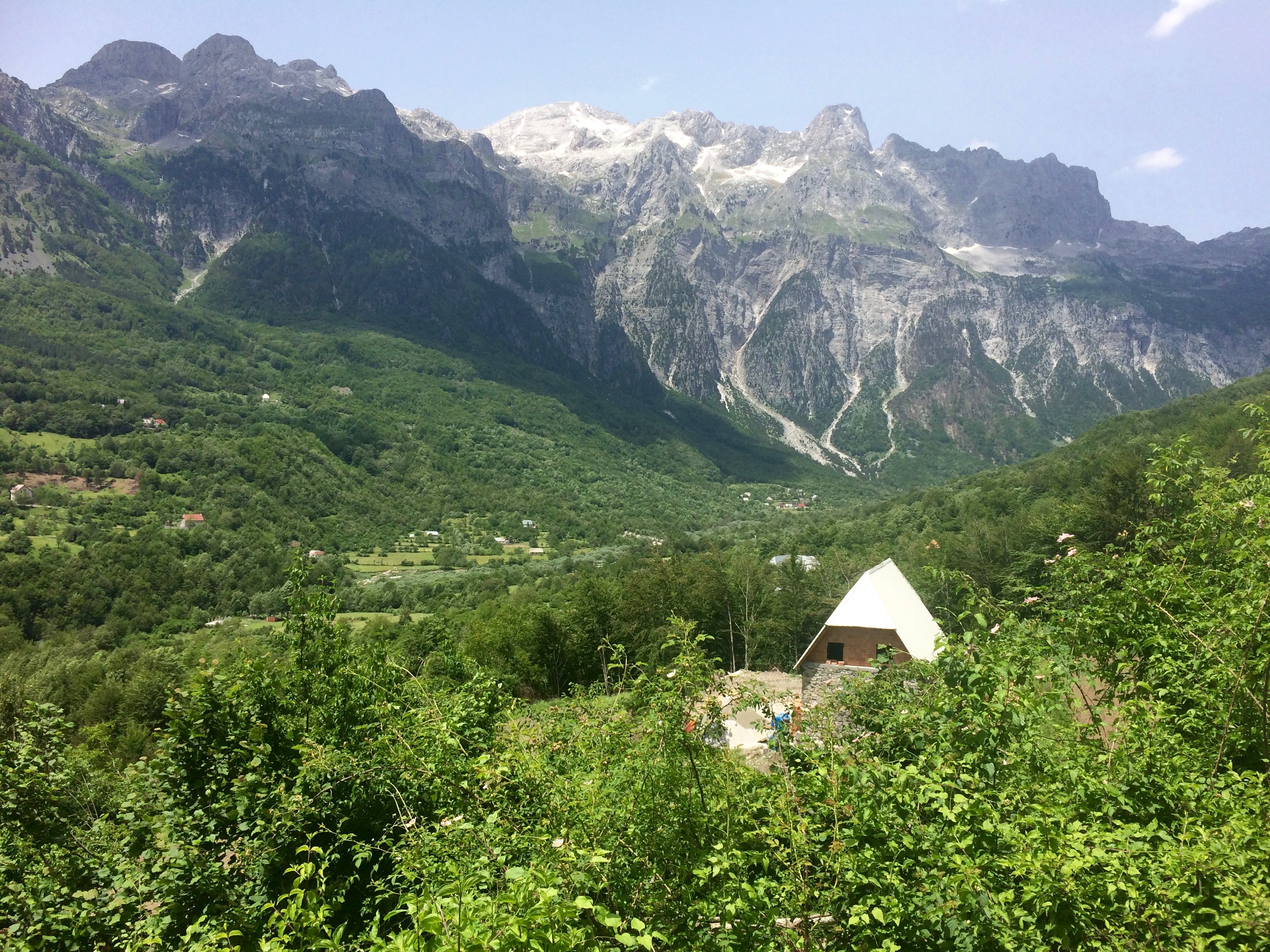
Once in Theth, we walked all the way to the end of town to check into Guesthouse Marashi. Its location beside the gushing river was pleasant, but it did not compare to the previous night’s Kon Gjoni. Actually, I don’t think anything will ever compare to Kon Gjoni; consider all guests from Kon Gjoni forever spoiled.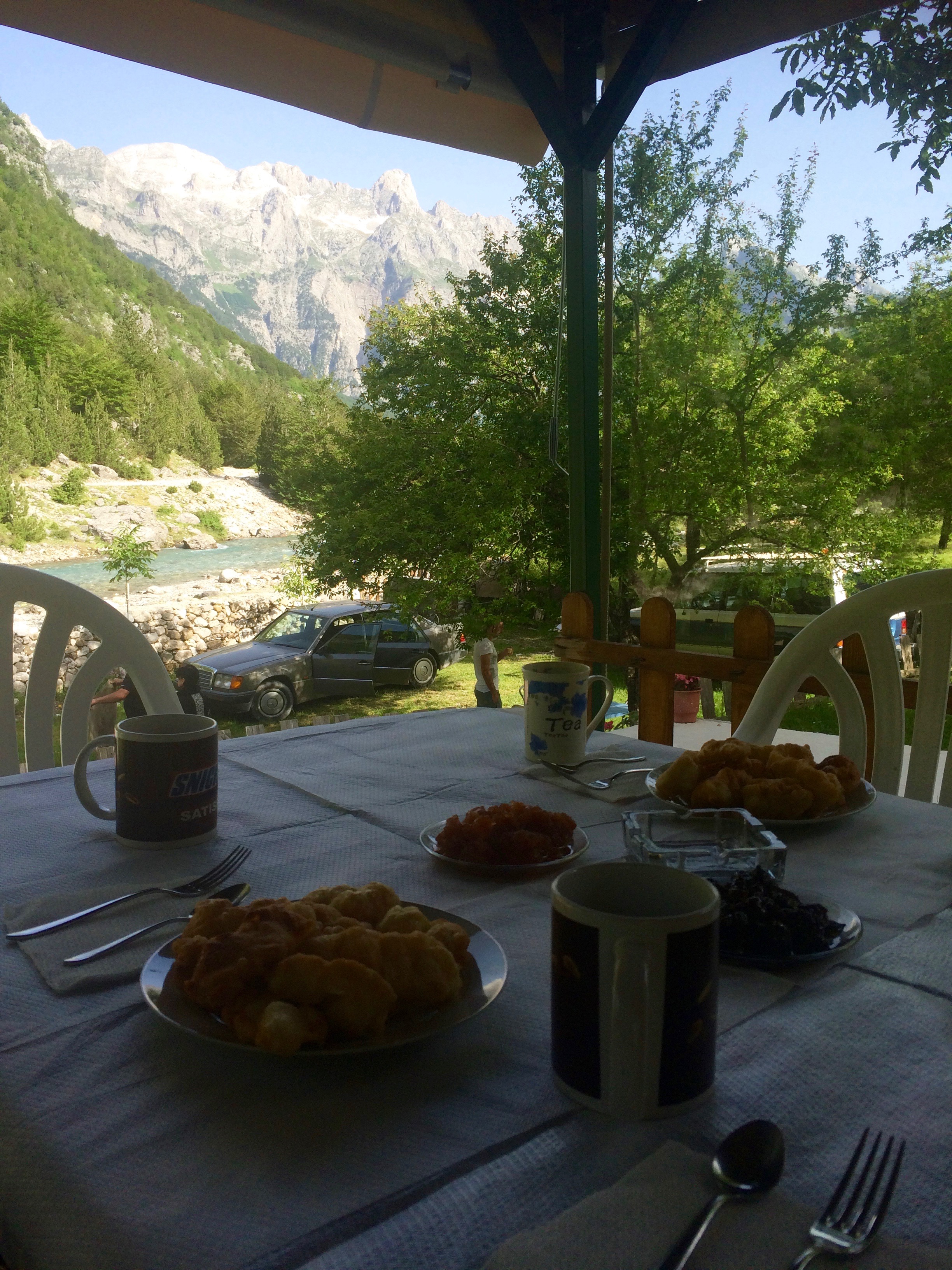
That night we shared stories, conversations, and beer with new friends at the only “bar” in Theth, a tiny structure with a blue roof down the street from the village church. The next morning we shared a vehicle with another couple in order to return to Shkoder at the going rate of €10 each. (It used to be 1,000 Lek but that didn’t seem to be the case anymore.) Of course, a couple other random Albanian men joined the vehicle and the driver made random pick ups and drop offs.
“Do you like music?” the driver asked us.
“Sure!” we all agreed. What we should have told him was that we didn’t like the same Albanian folk song on repeat for the duration of the entire ride, a grand total of 3 hours.
During the first hour, the driver drove like a maniac through unpaved, washed out roads like these:
Once we hit smooth, paved road, his driving became even more aggressive with screeches at hairpin turns. Just a few kilometers before dropping us off, he even dropped into an auto shop to buy new brake pads. Hilarious.
Grateful to be out of the car and alive: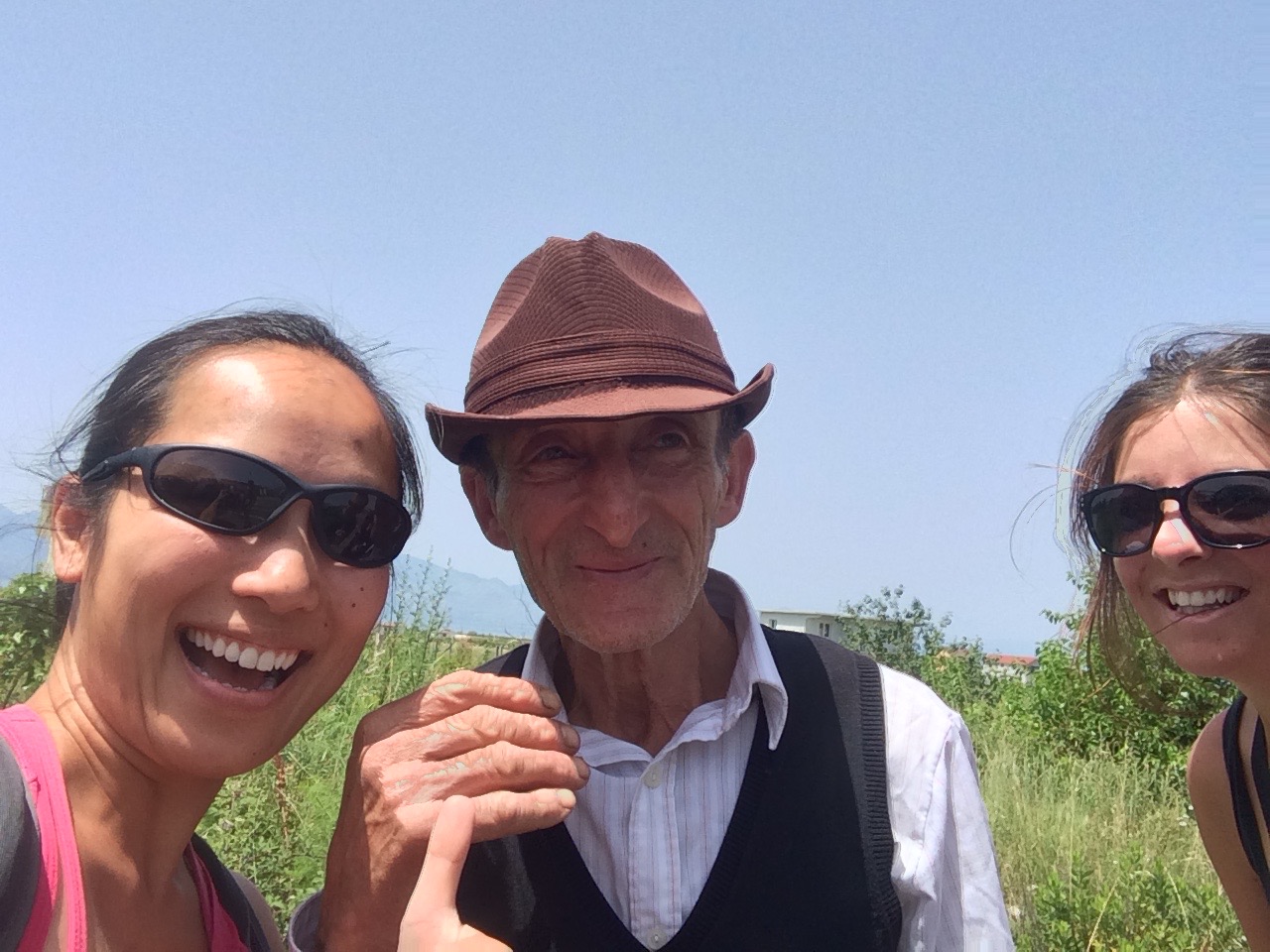
Our first several days in Albania was a clear reminder that we had left the EU; Albania was worlds away from the rest of the predictable, developed, and manicured EU. Not quite yet established for tourism, the journey to the Albanian Alps was an adventure, and the hike through unspoiled European mountains topped the whole experience. It was a rare occurrence to leave our motorhome behind, but we were so glad we did.

